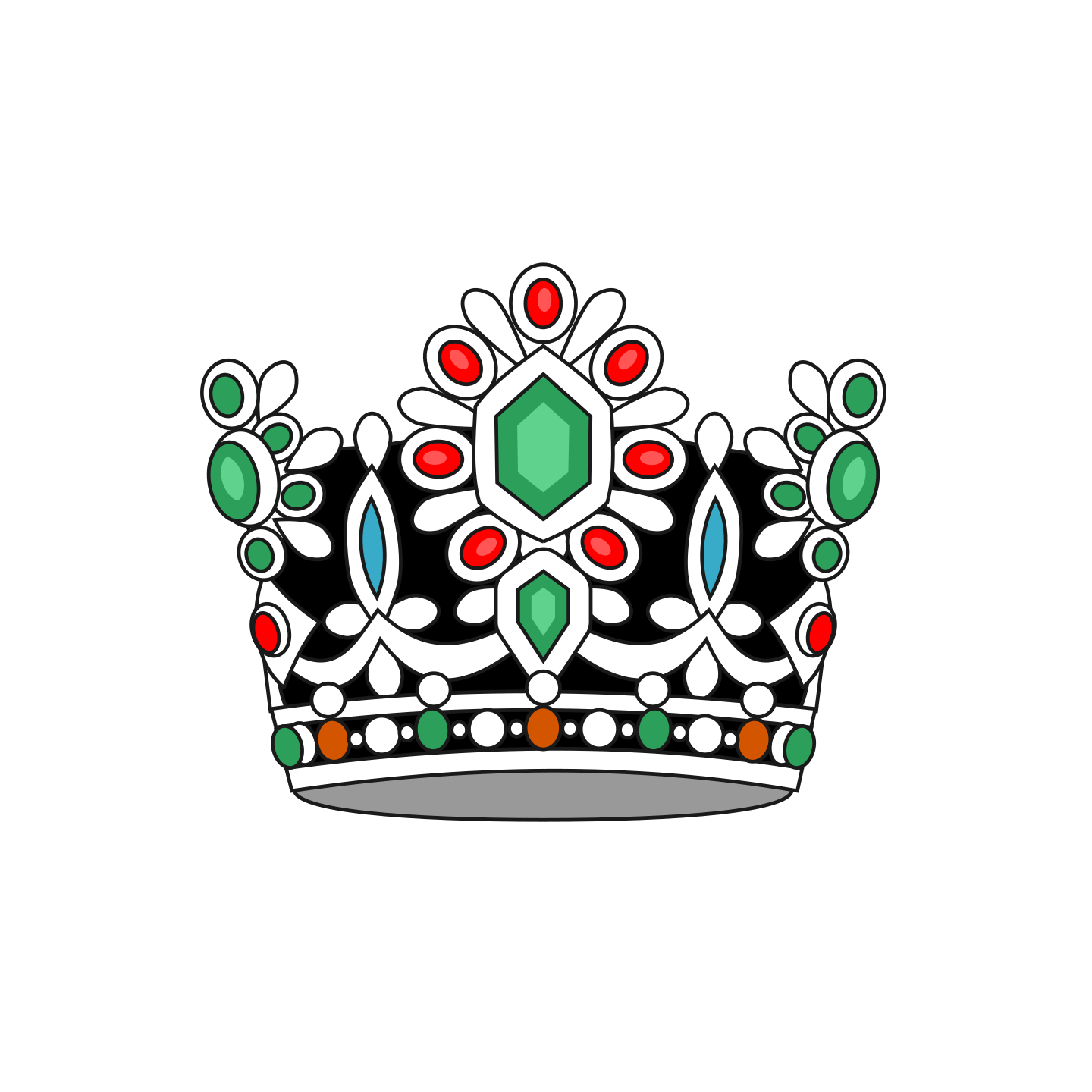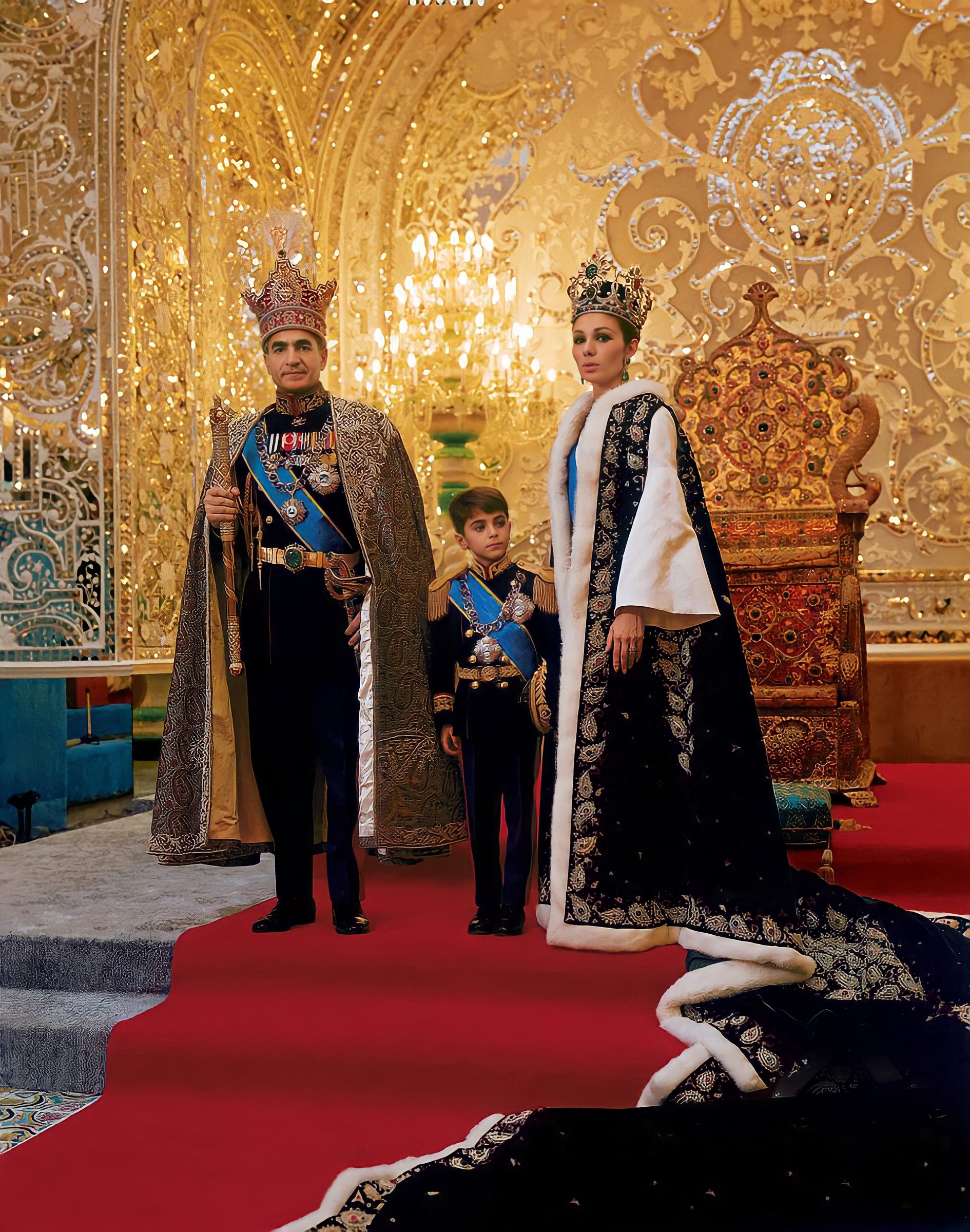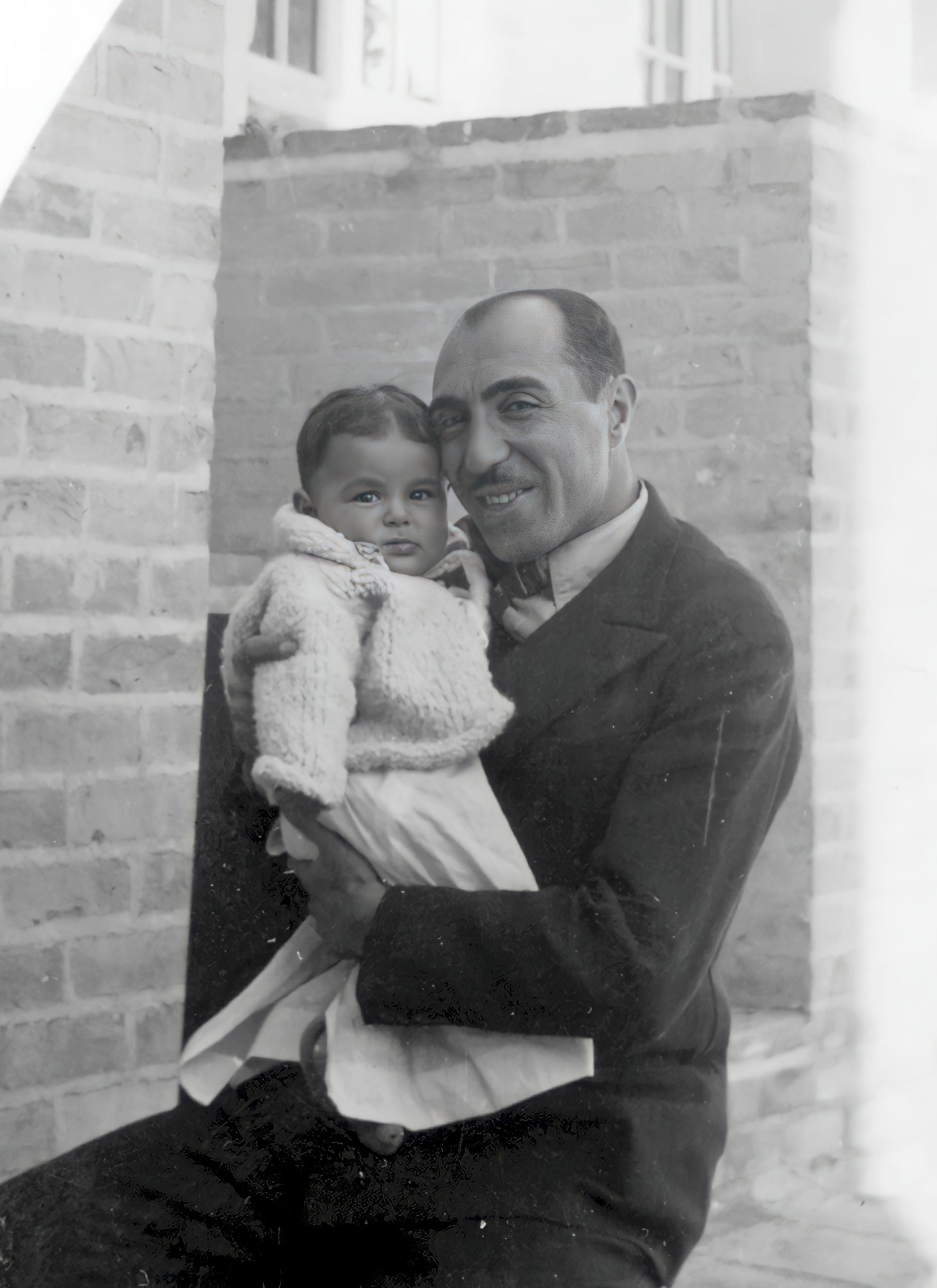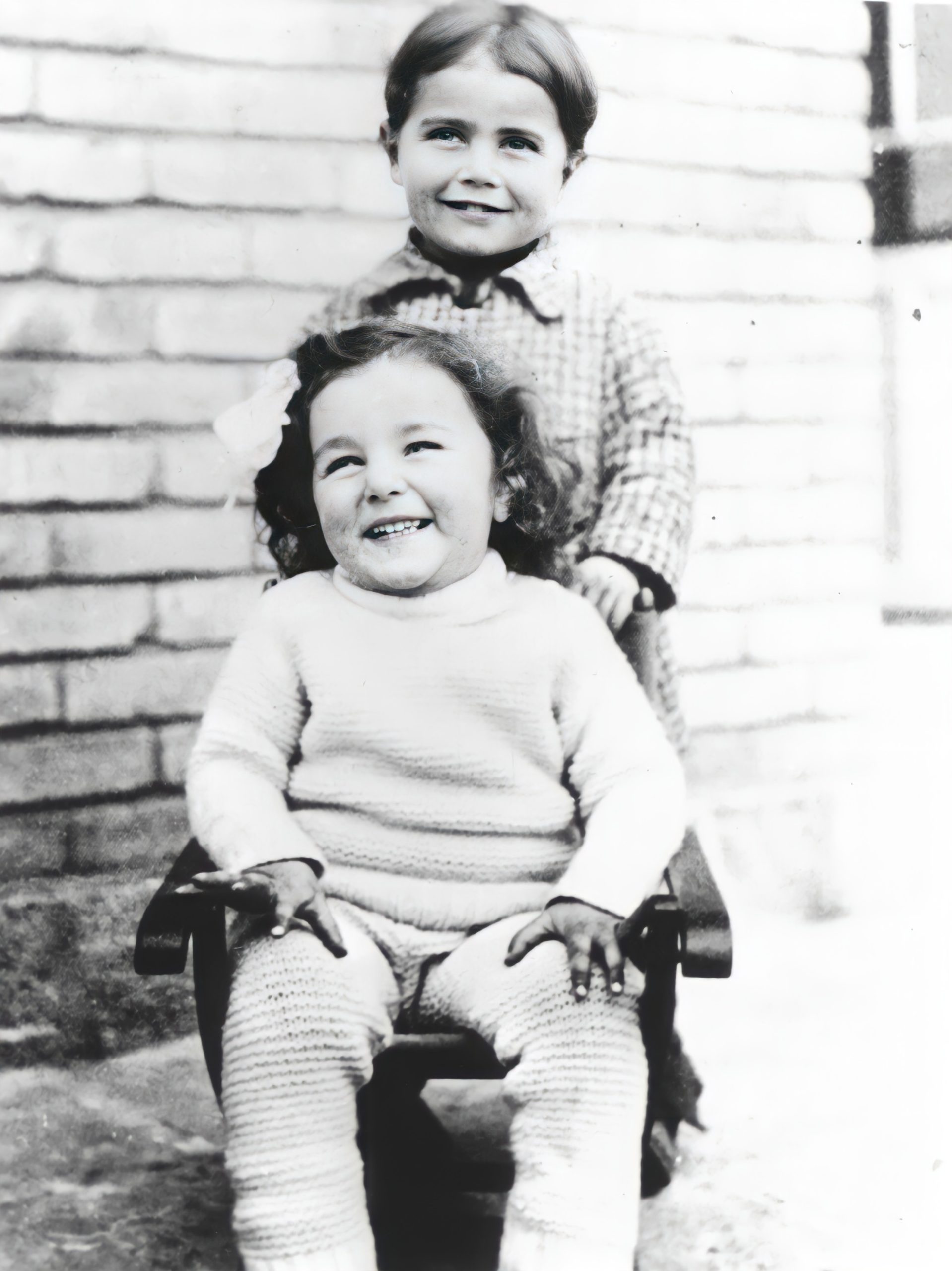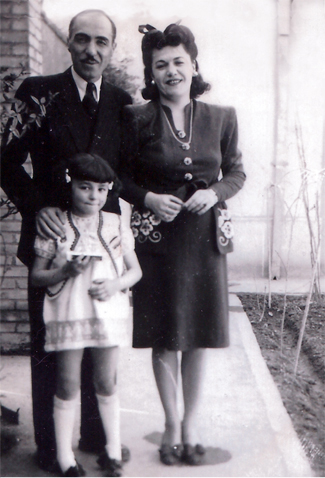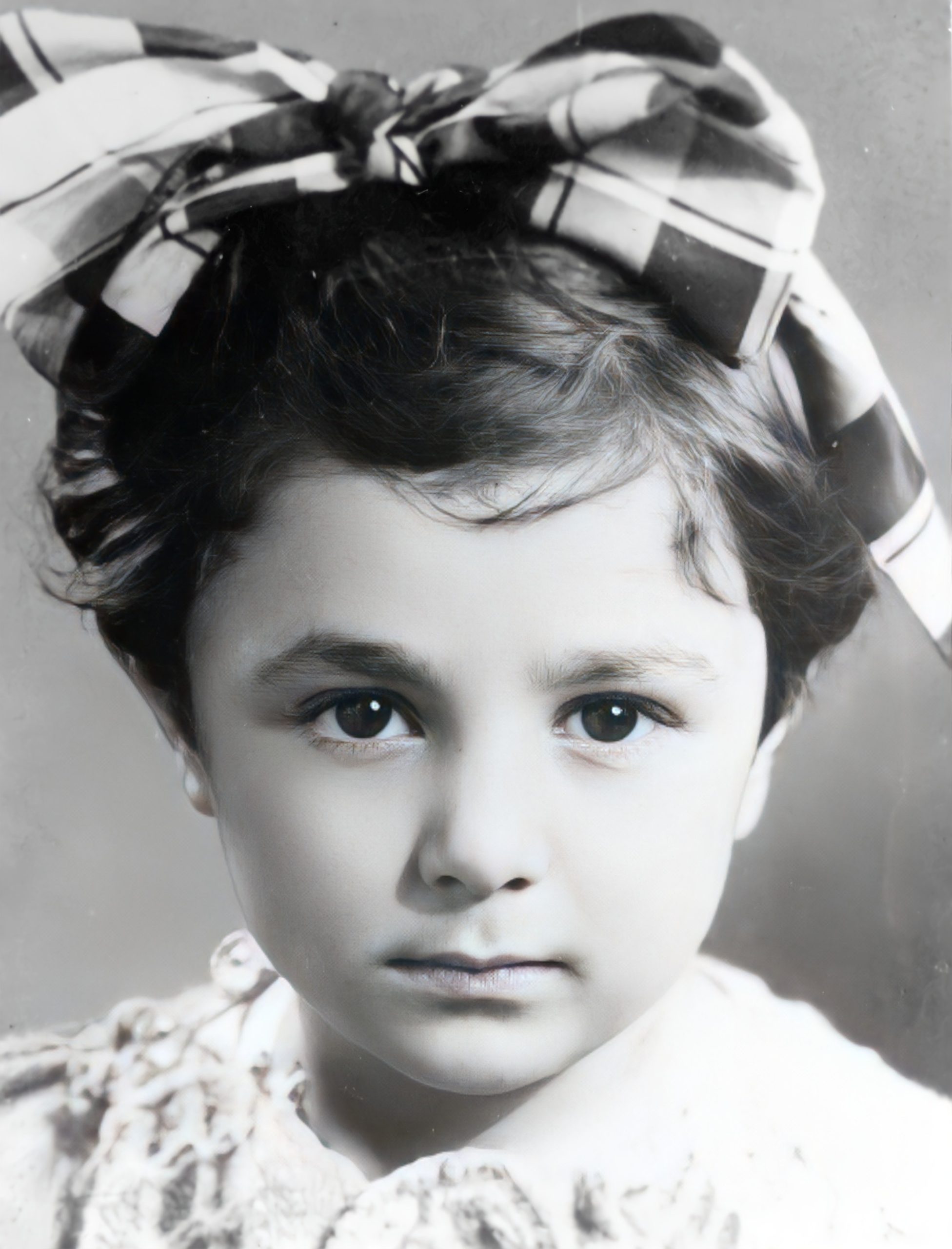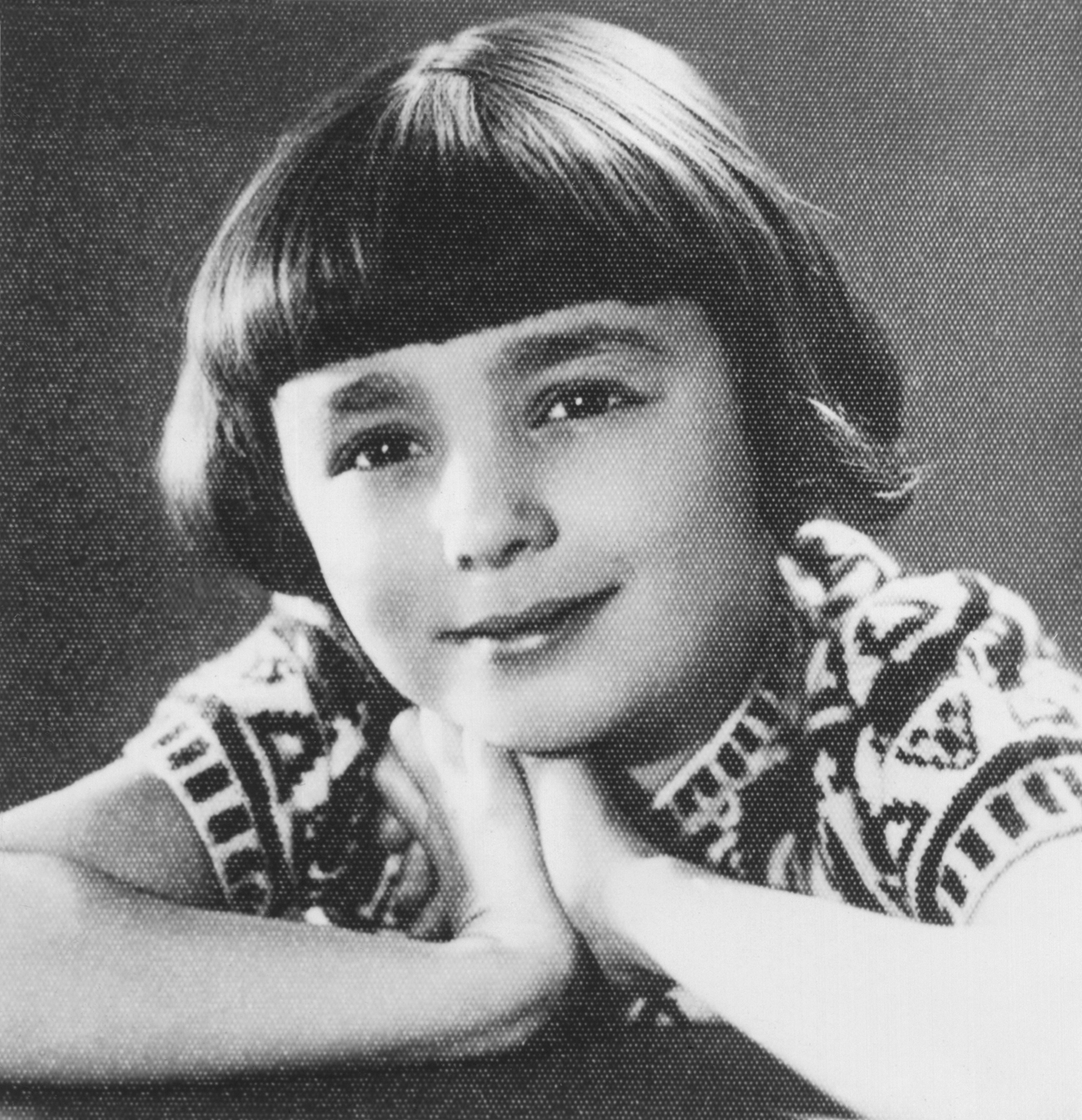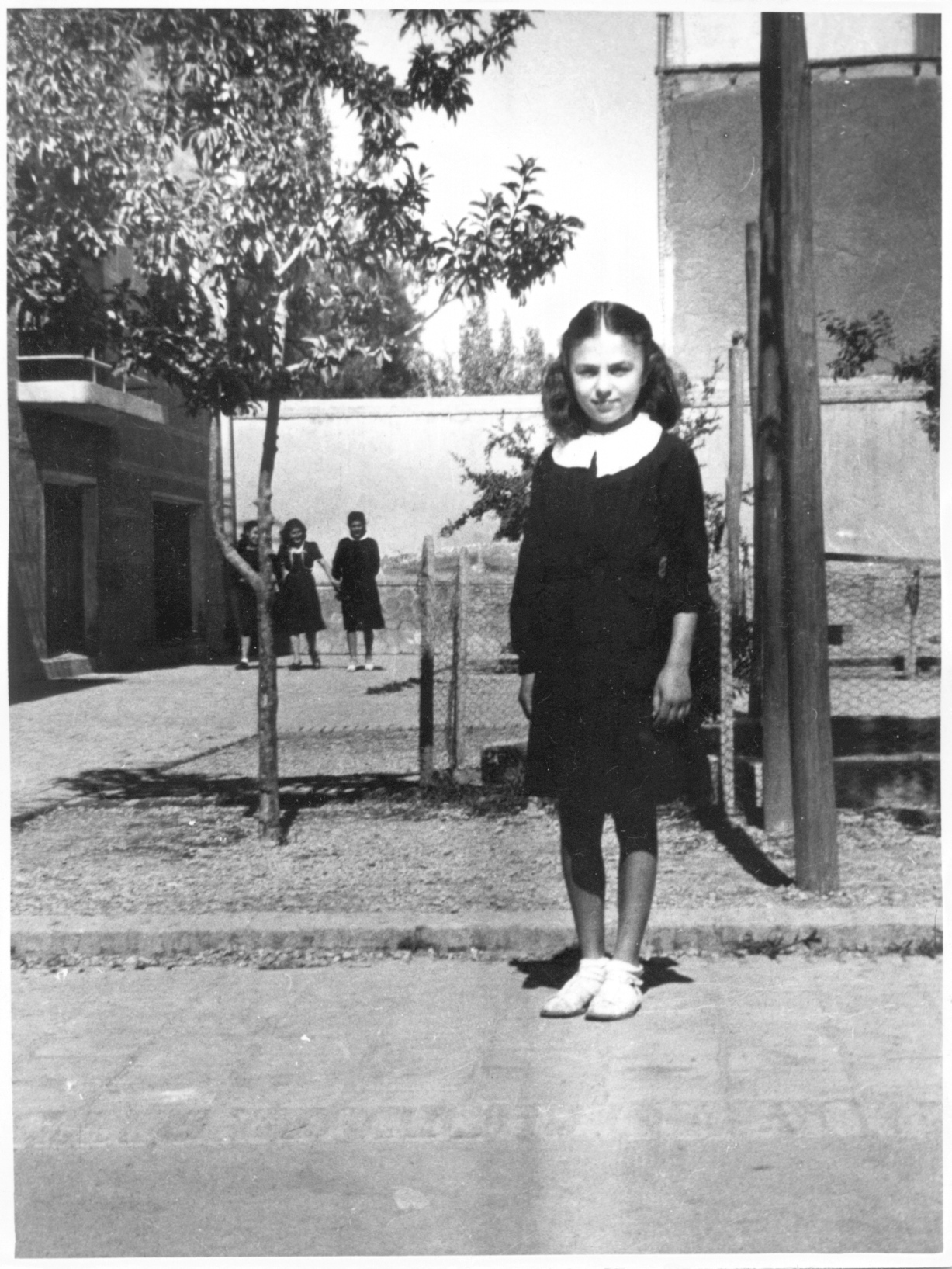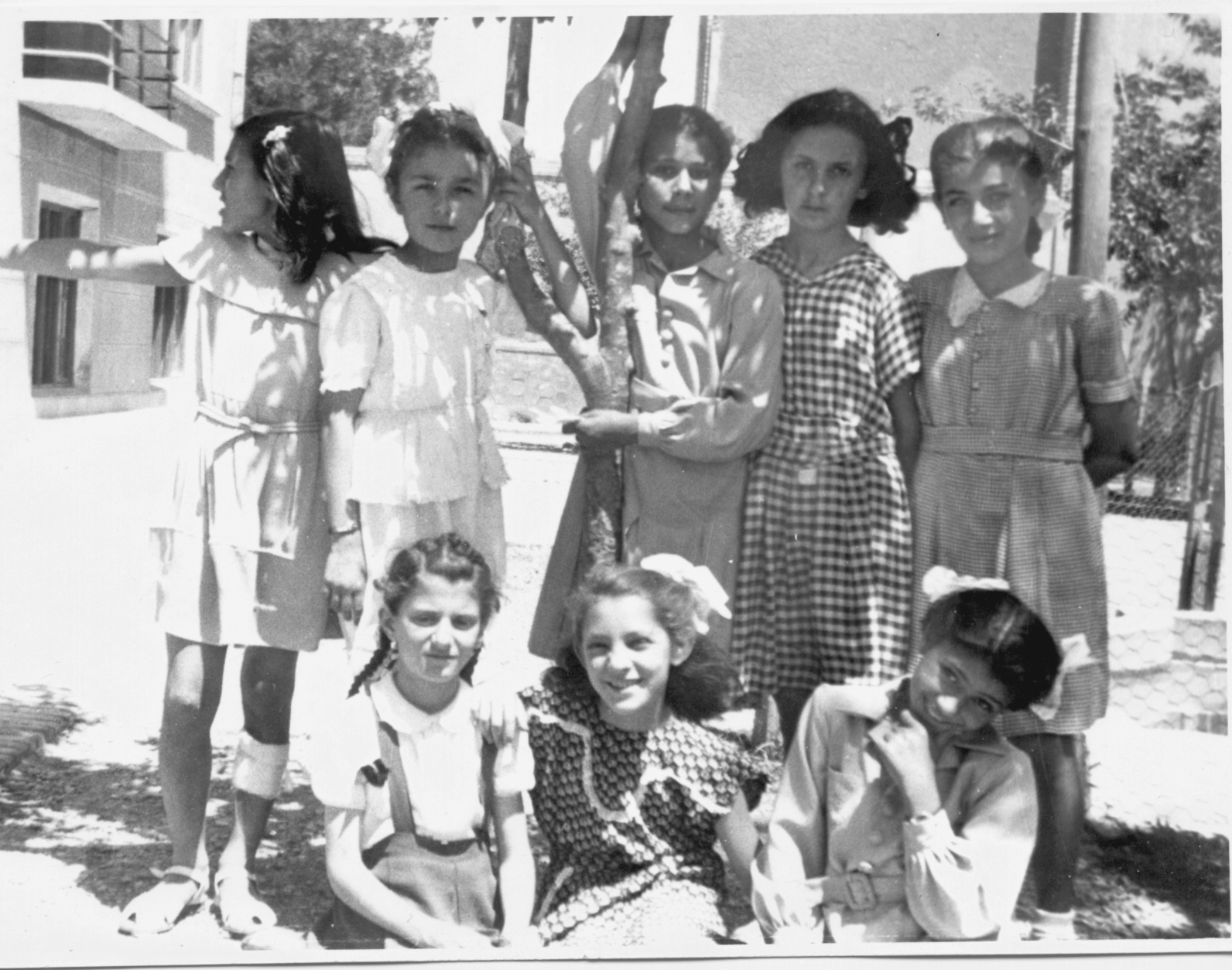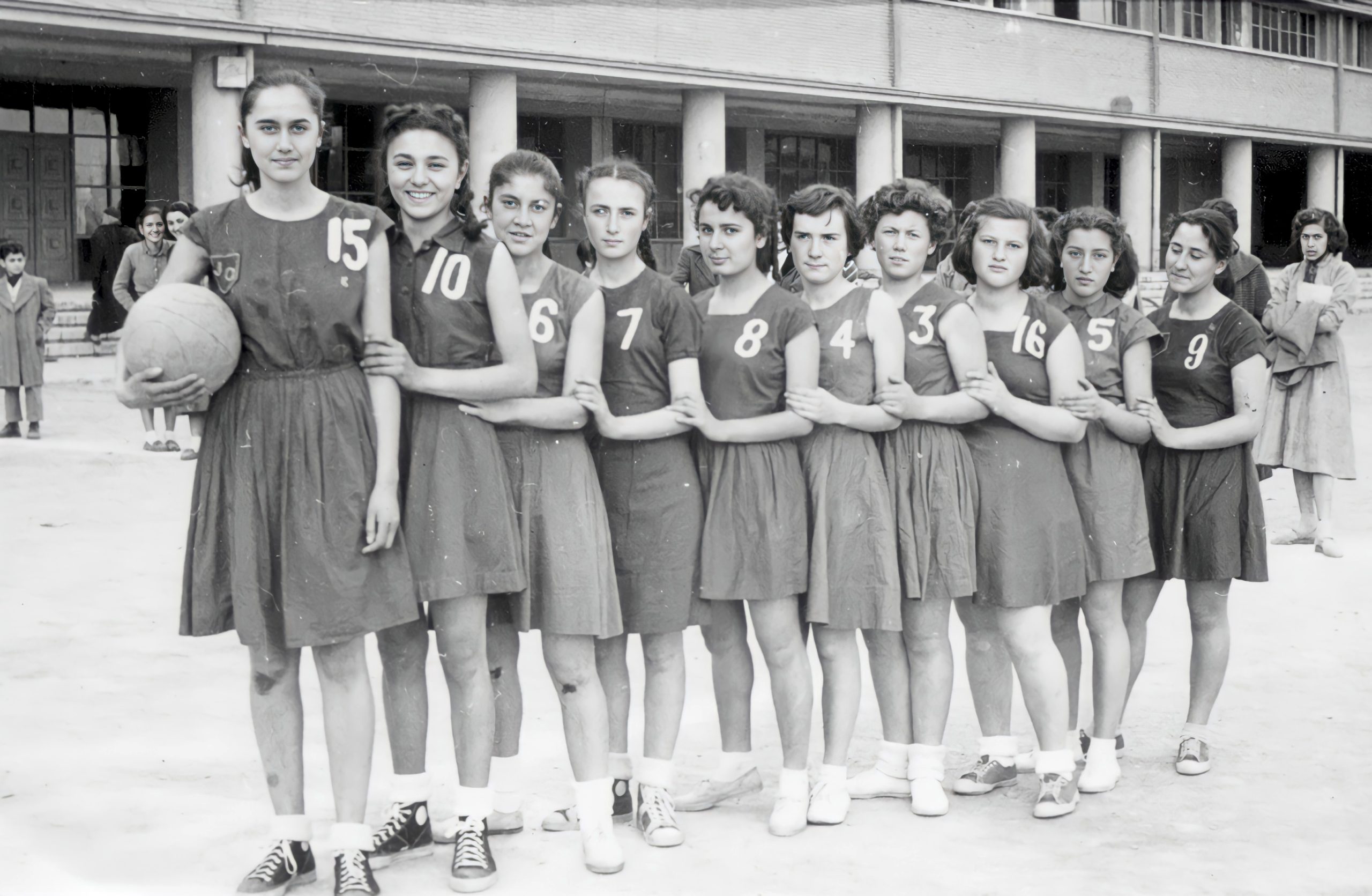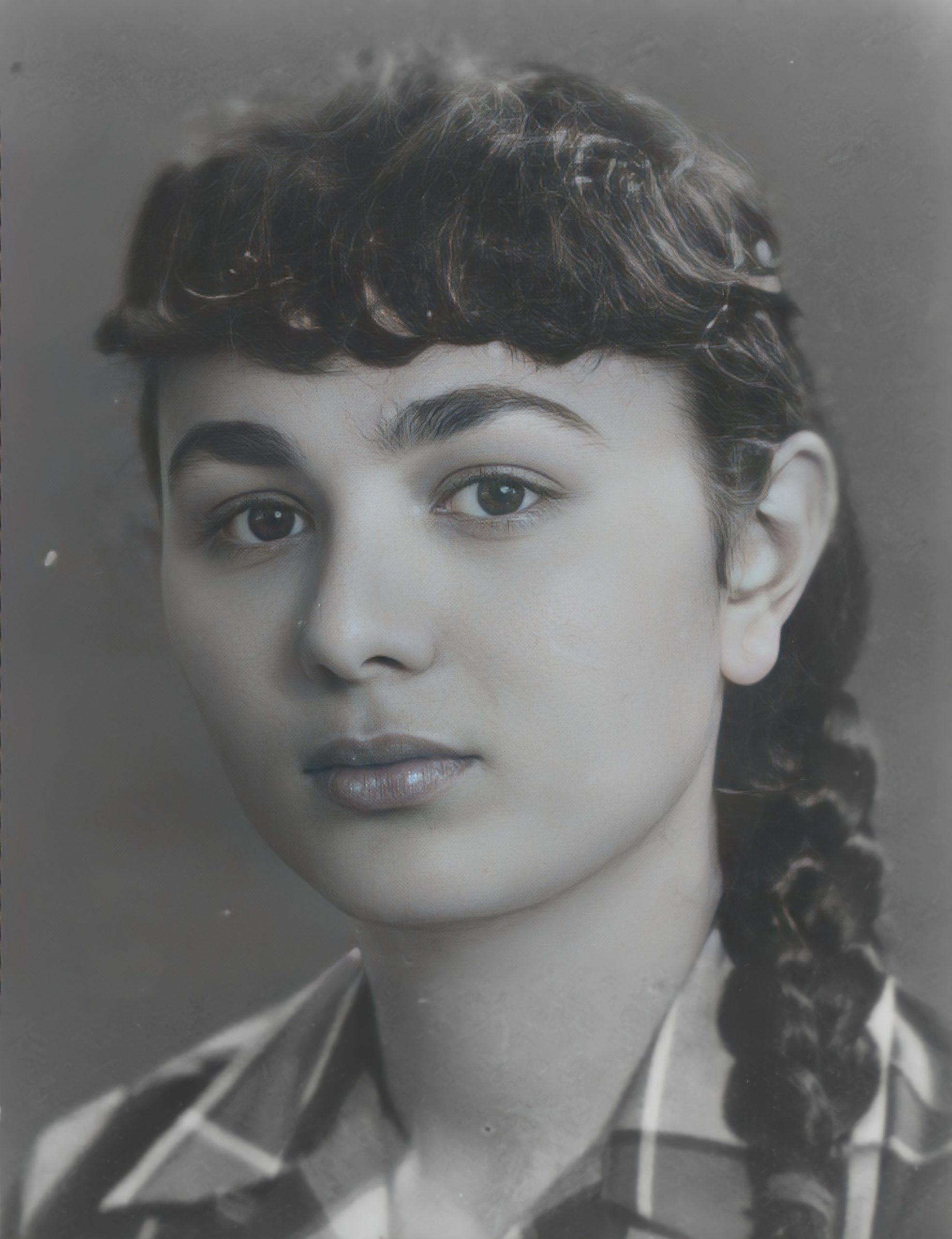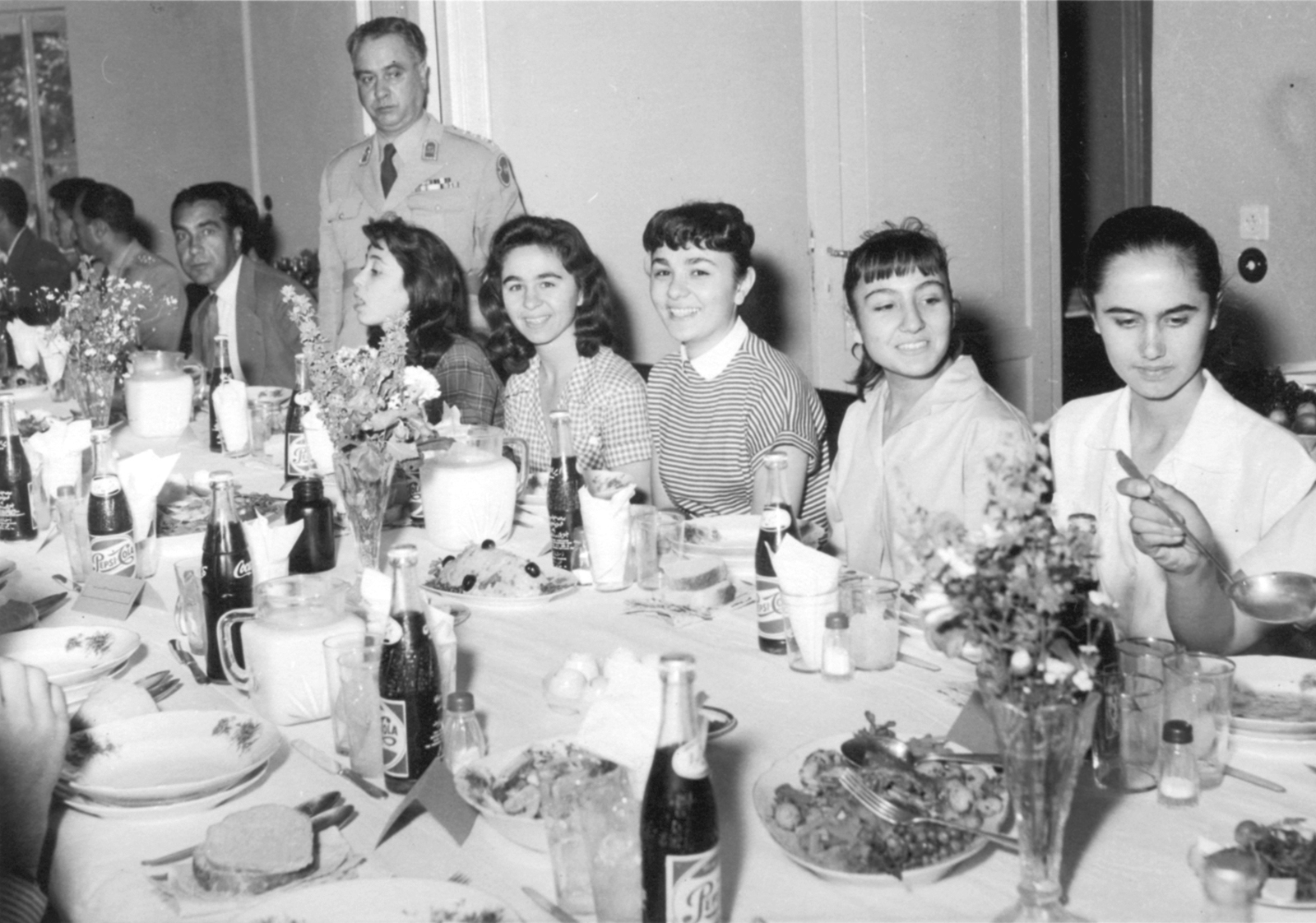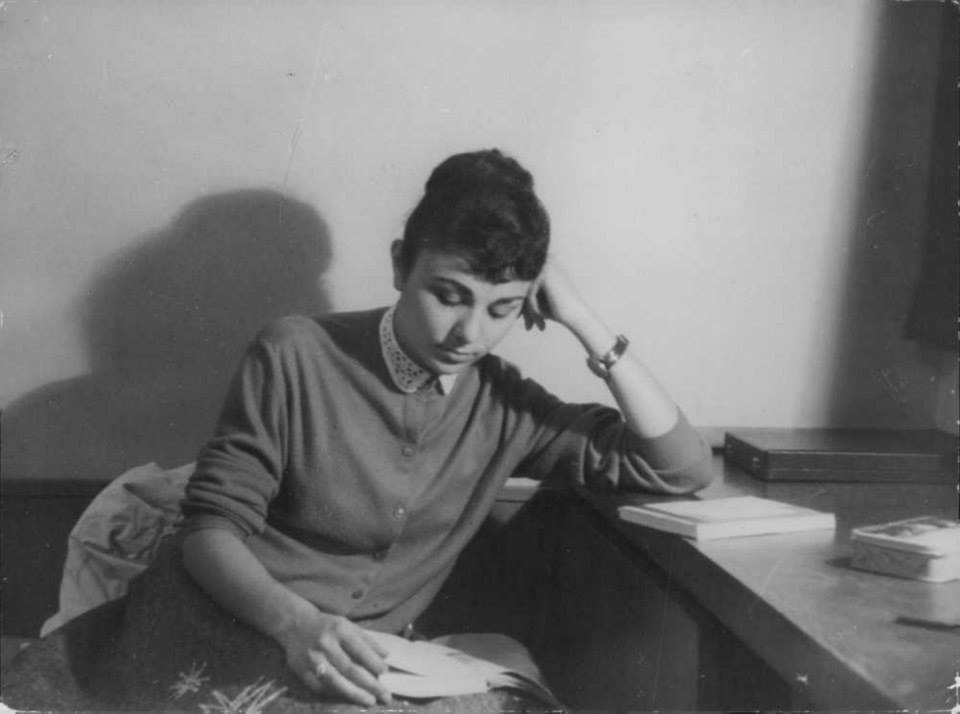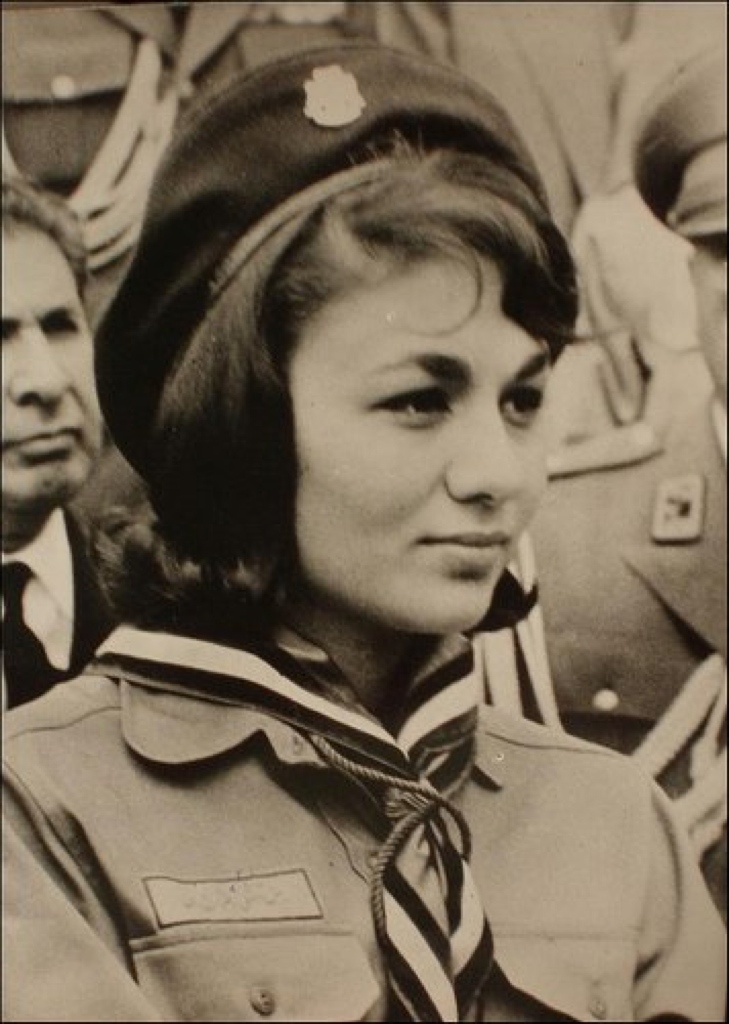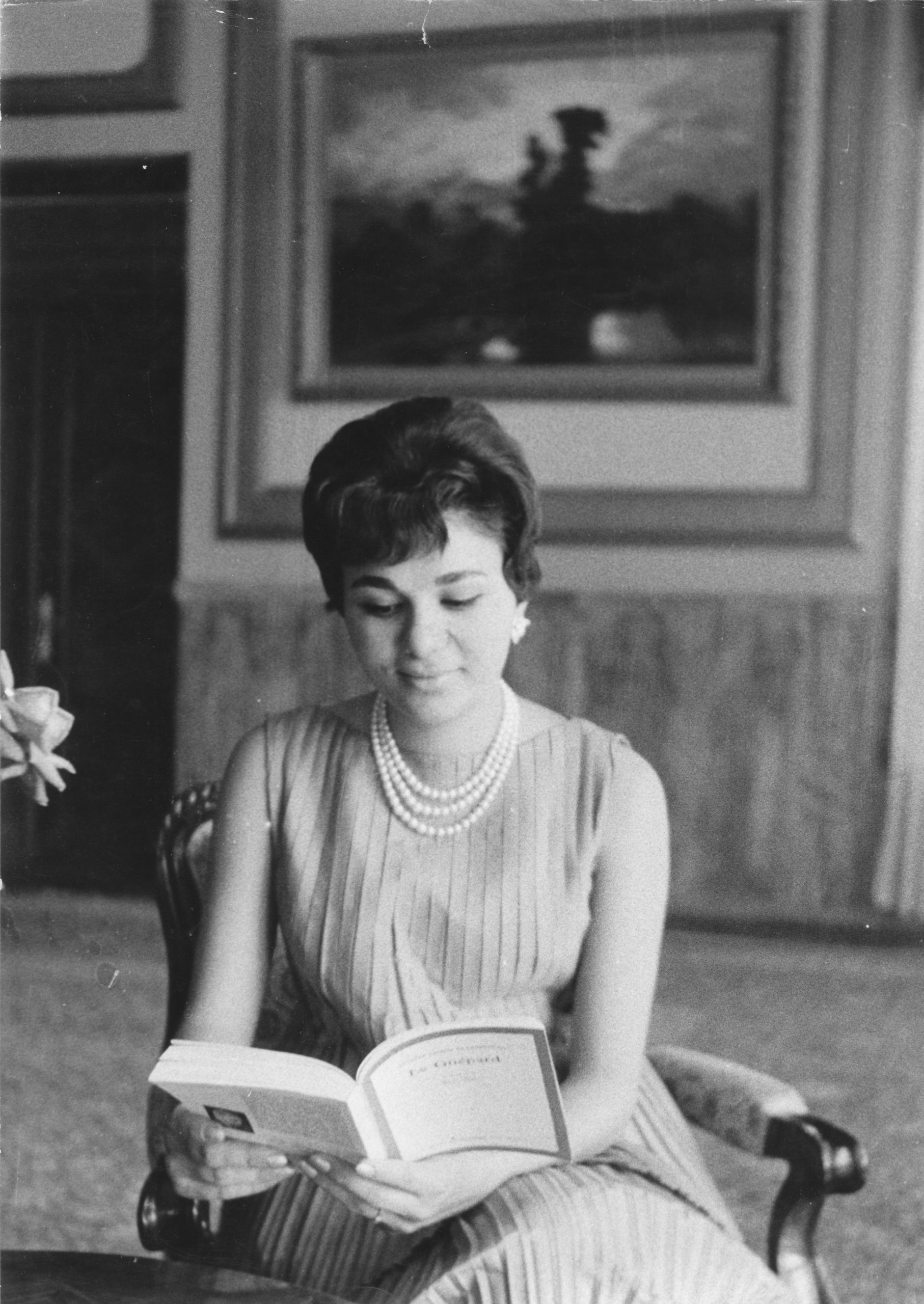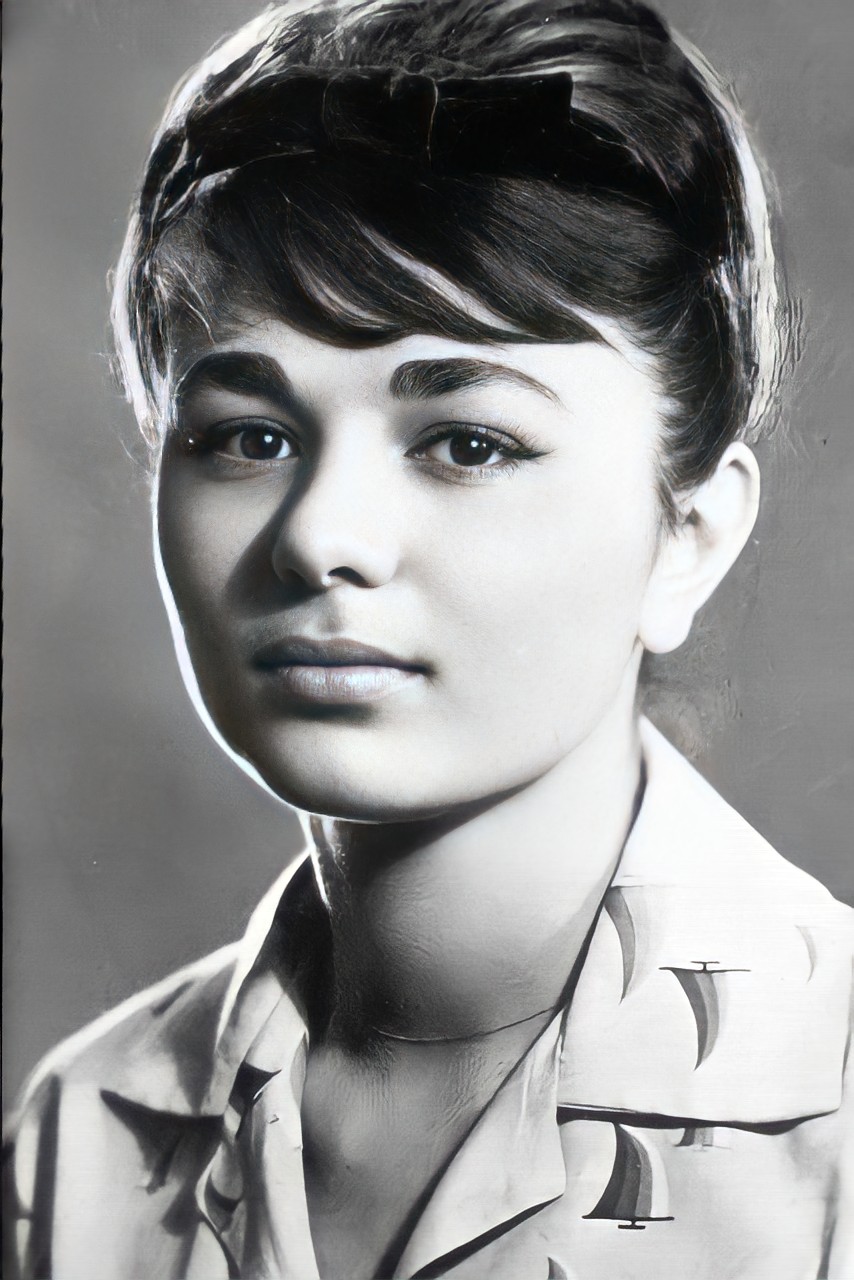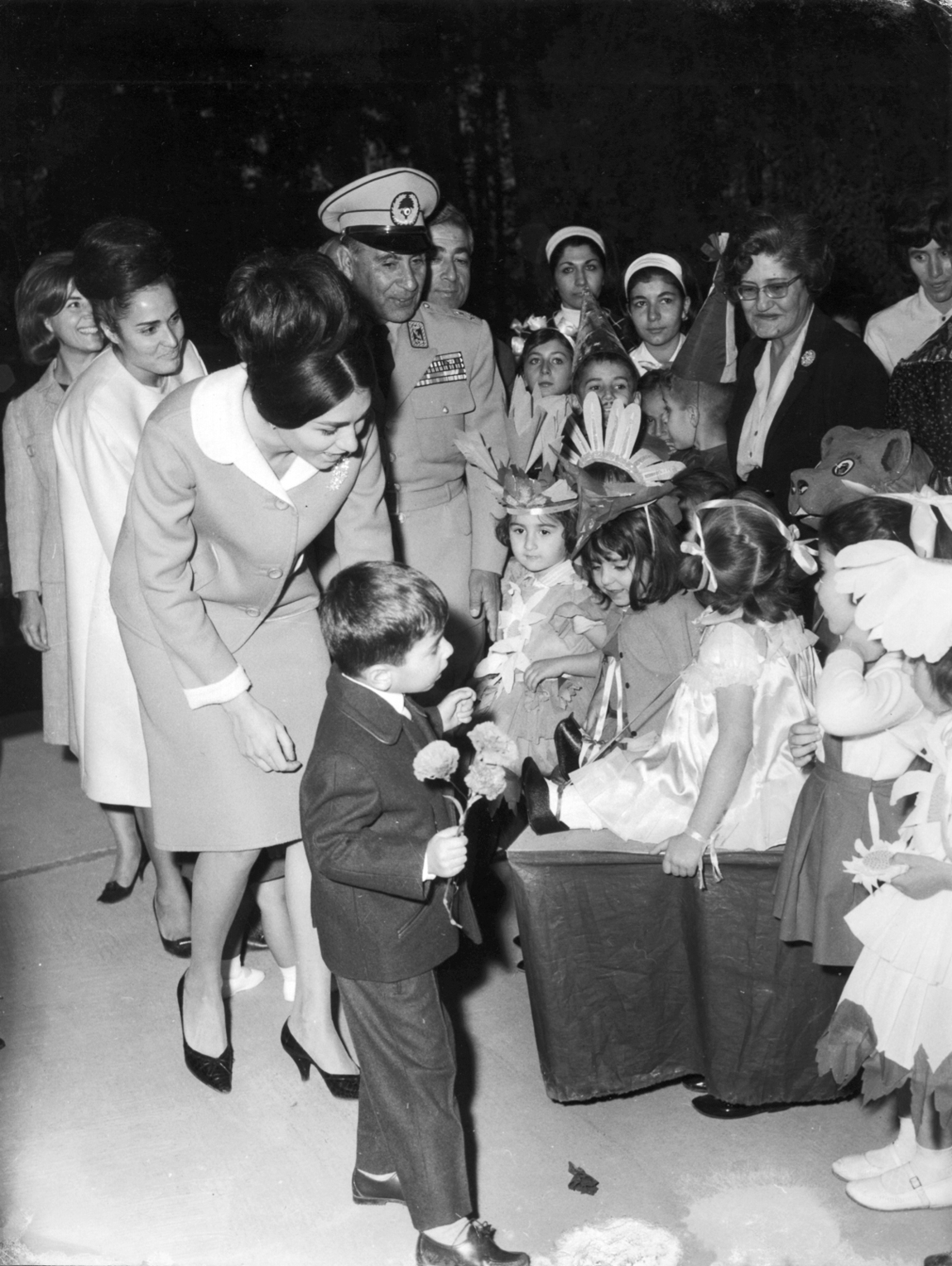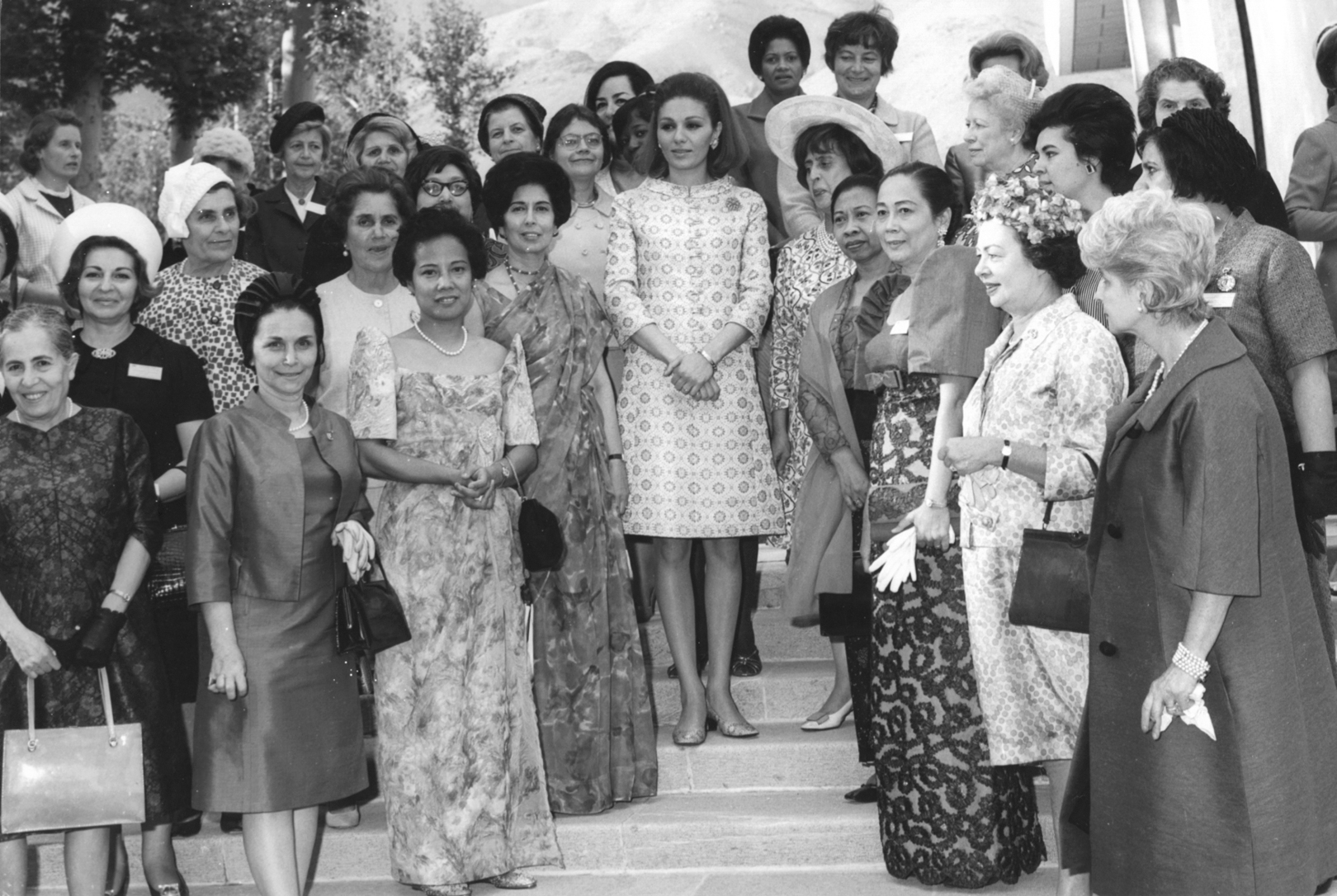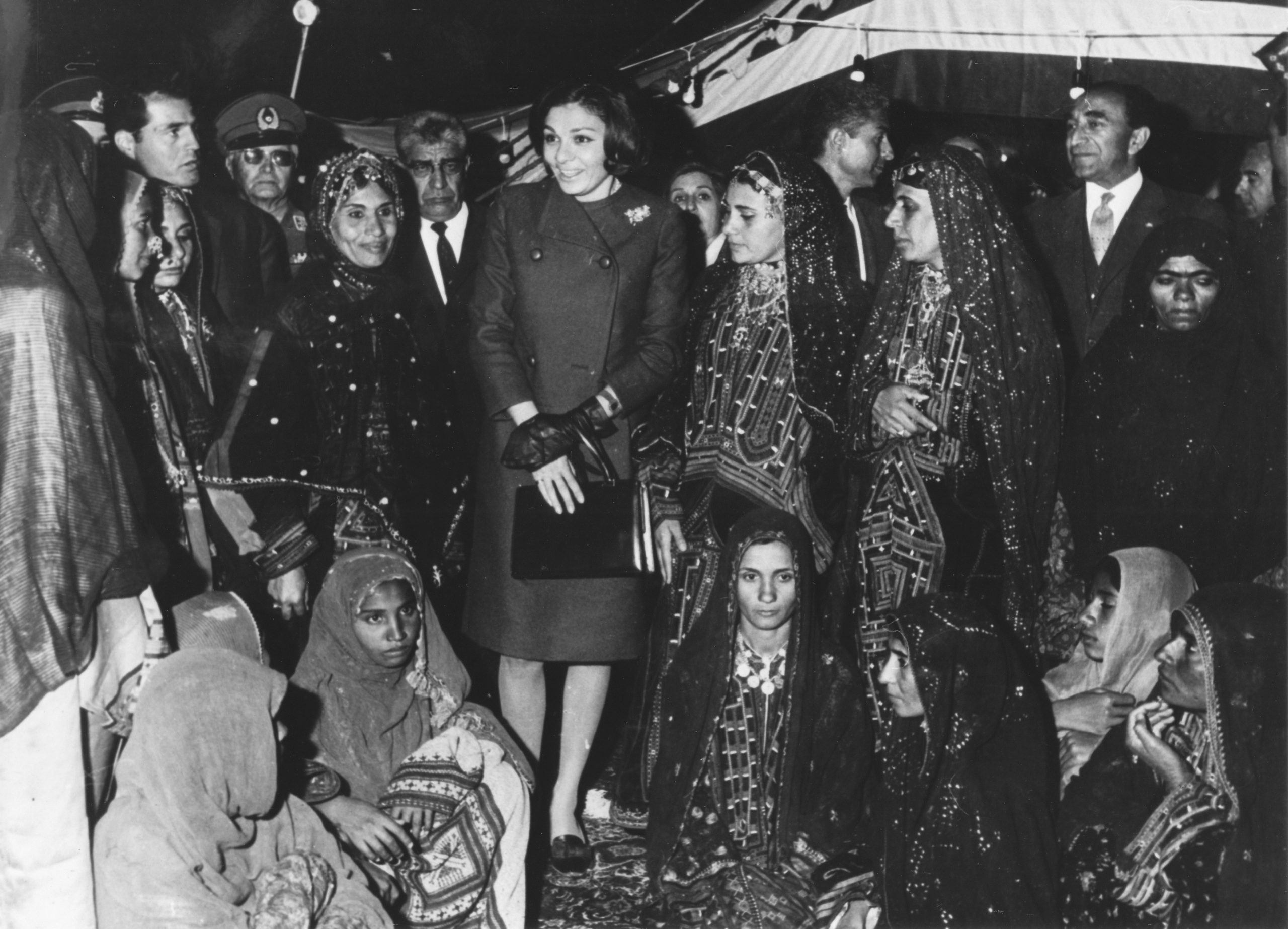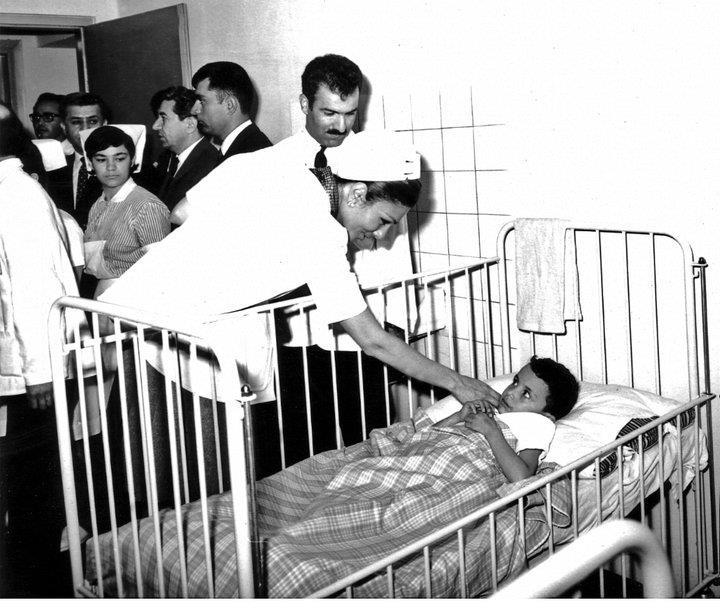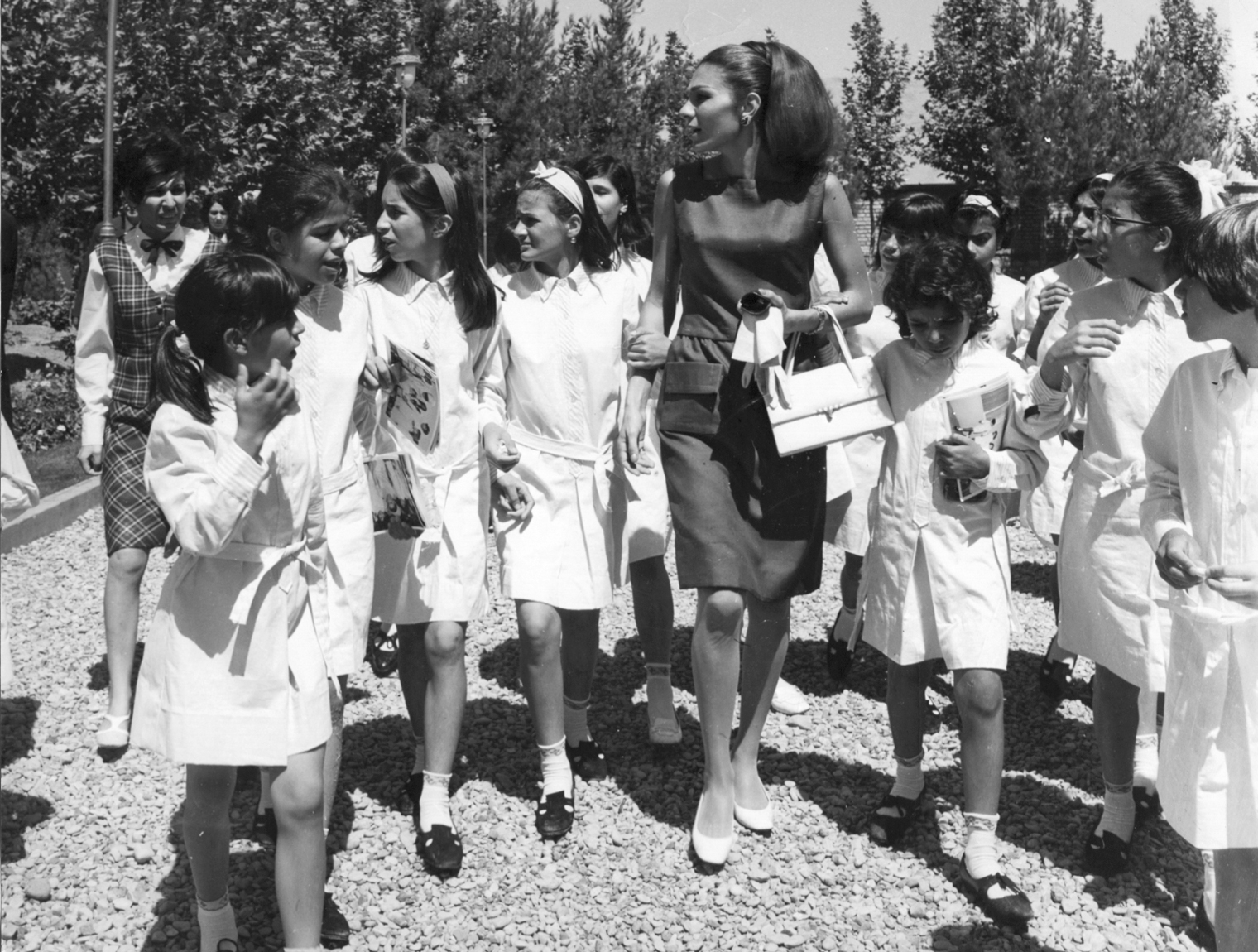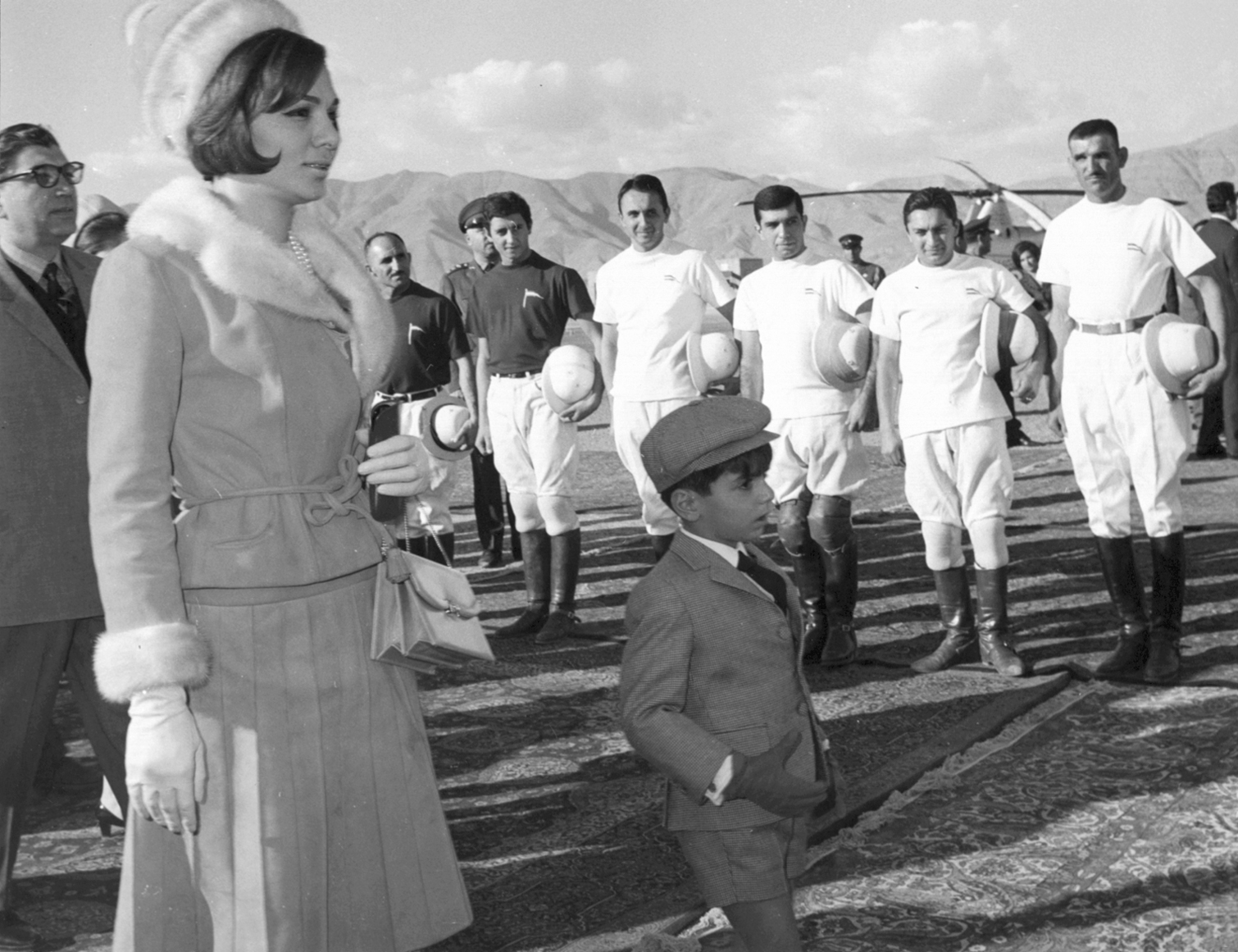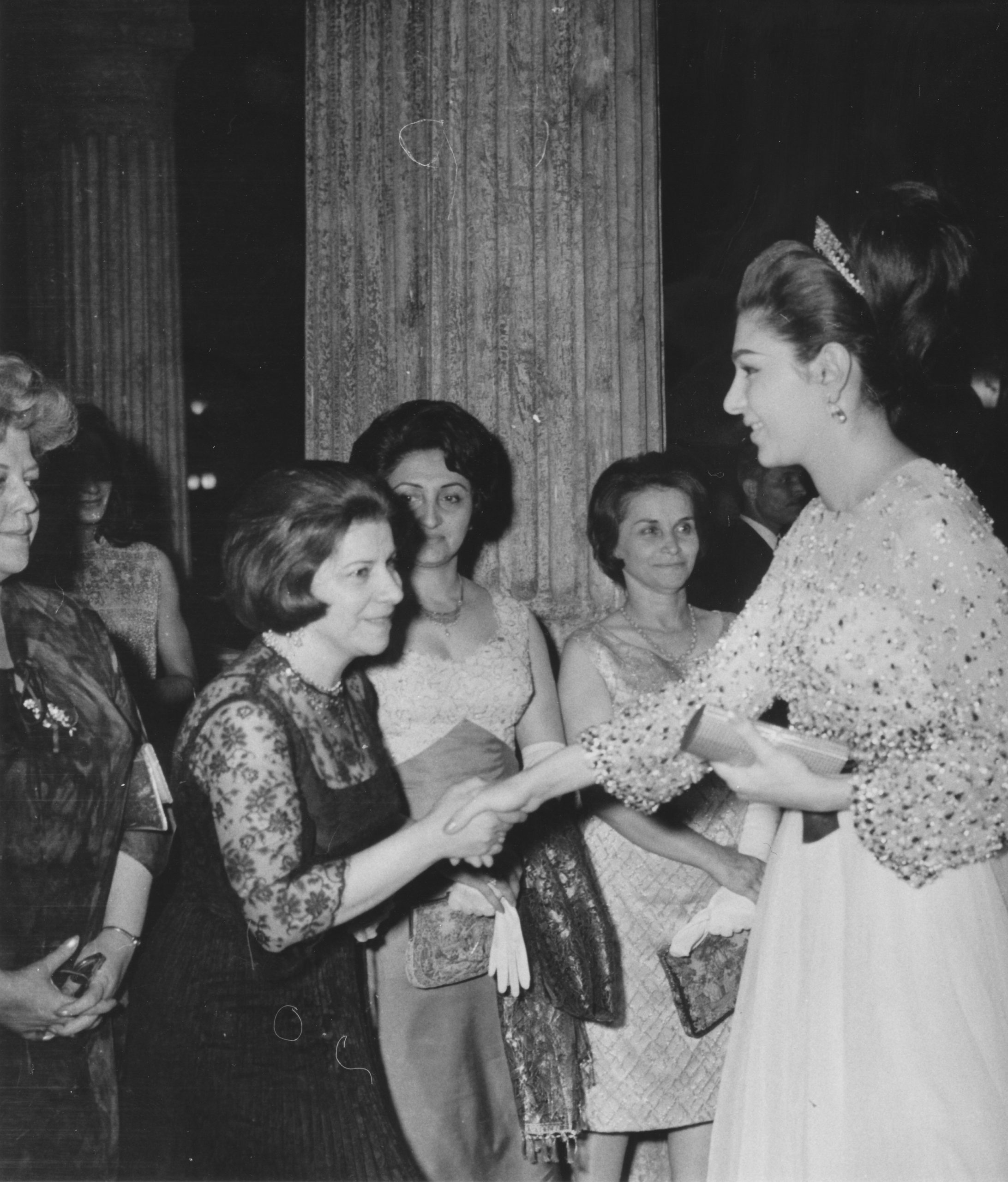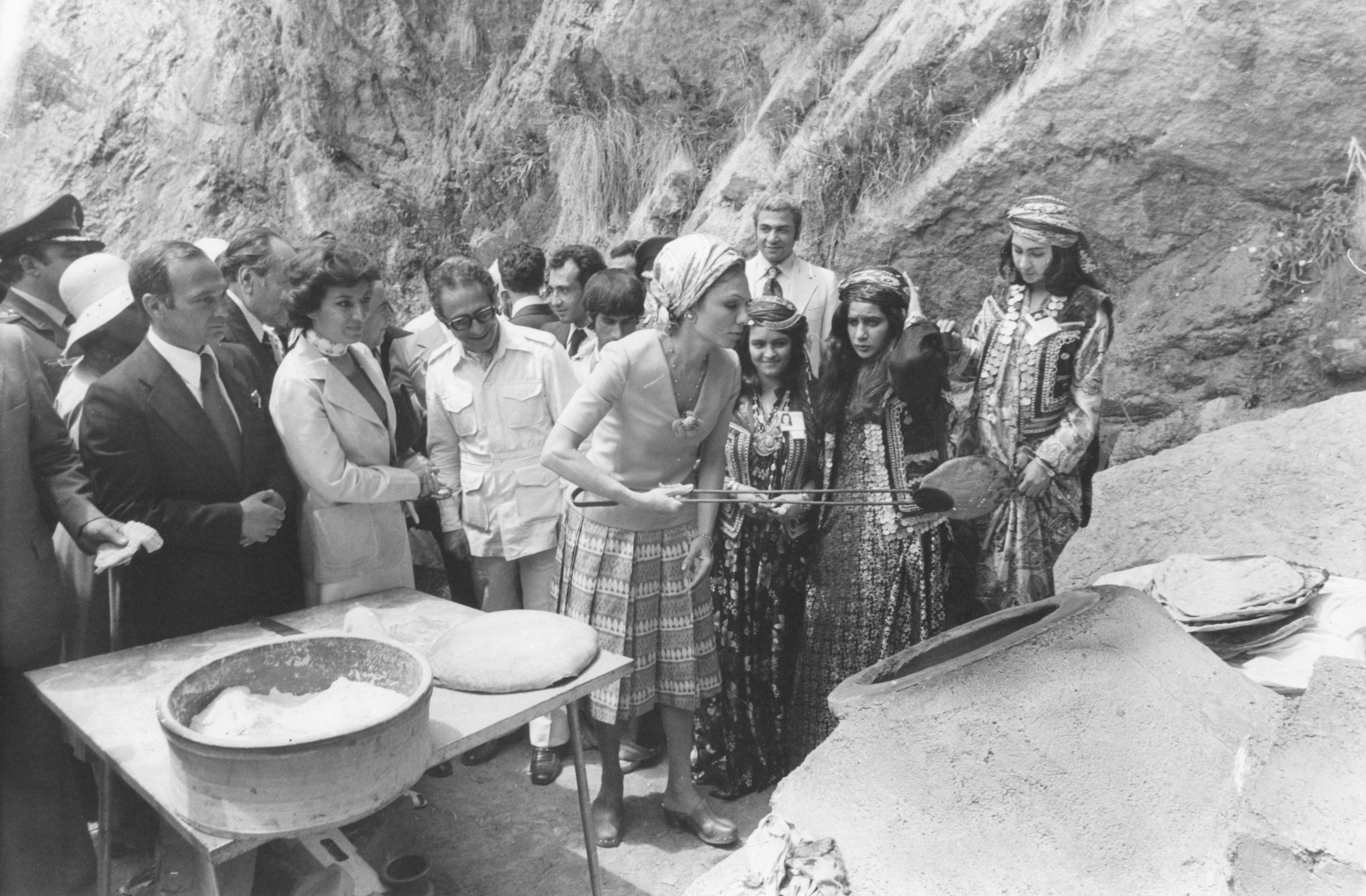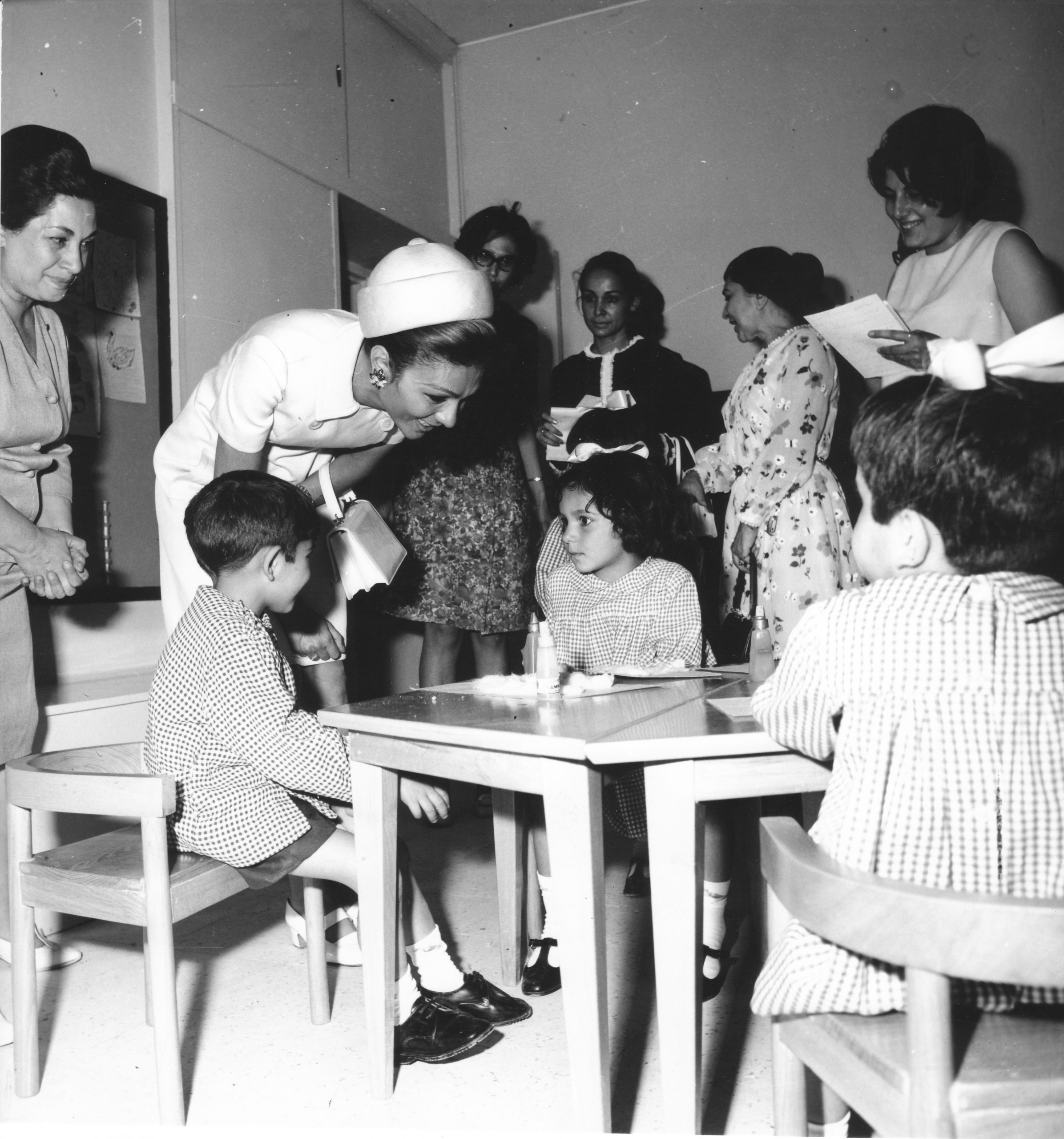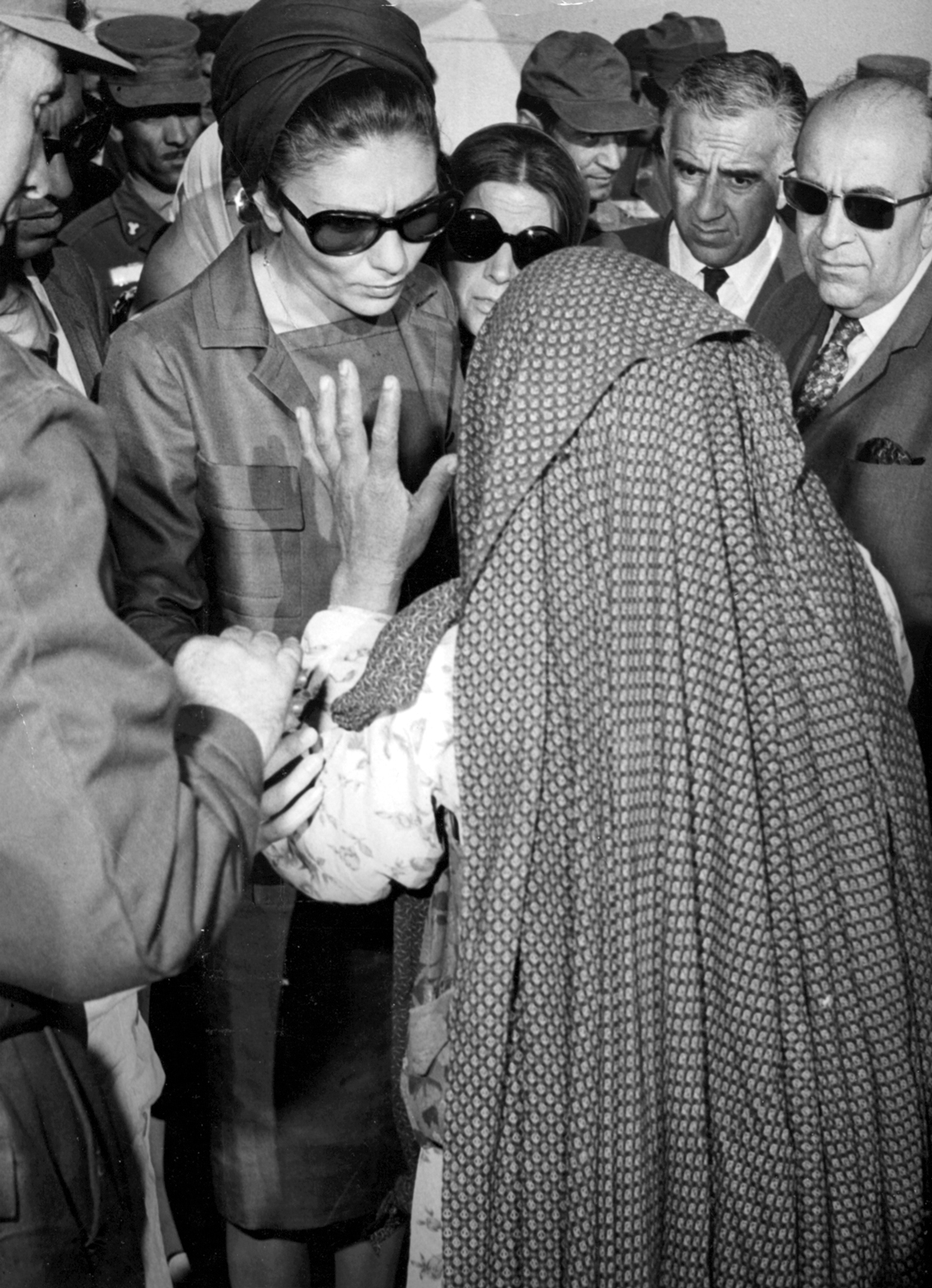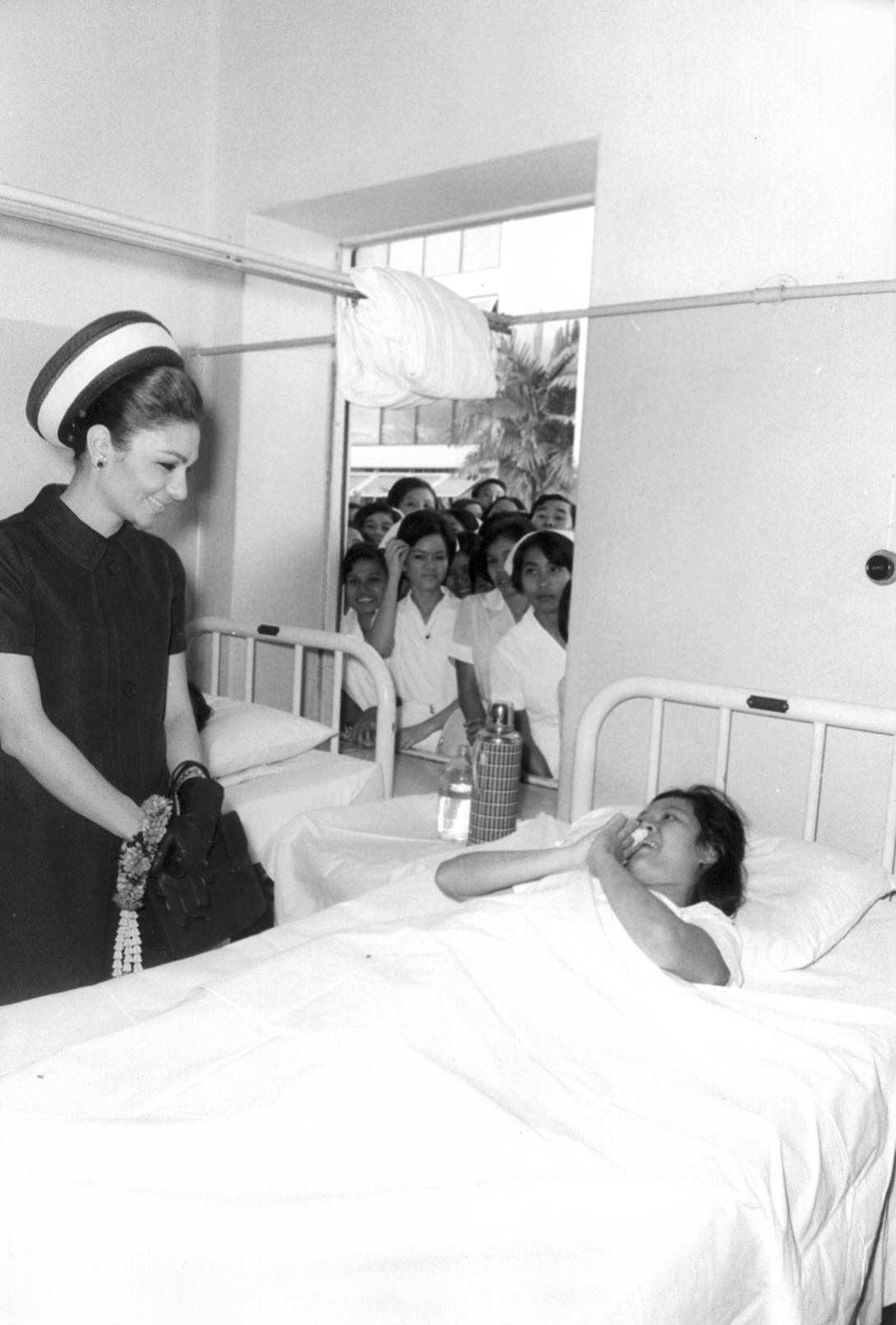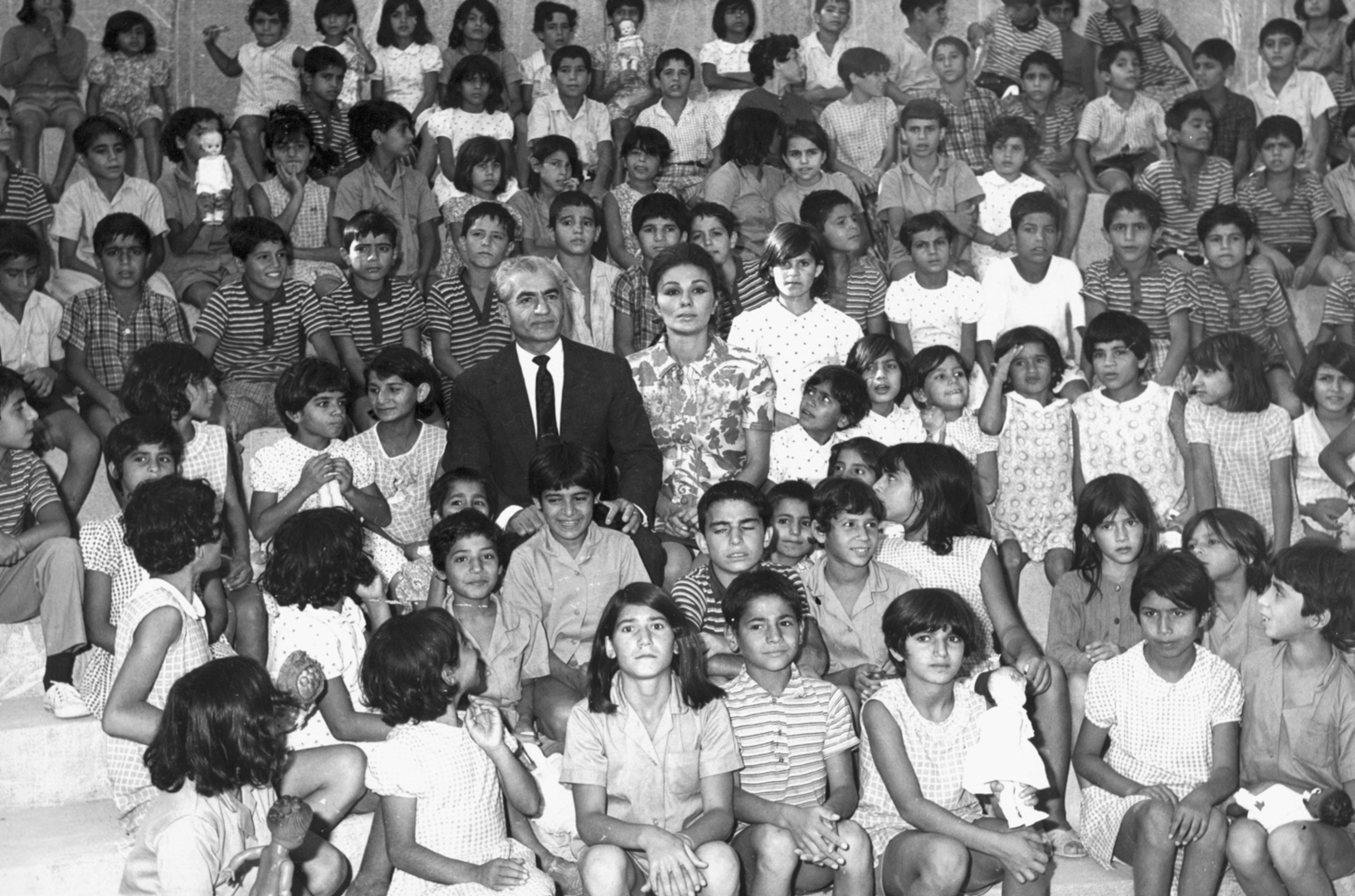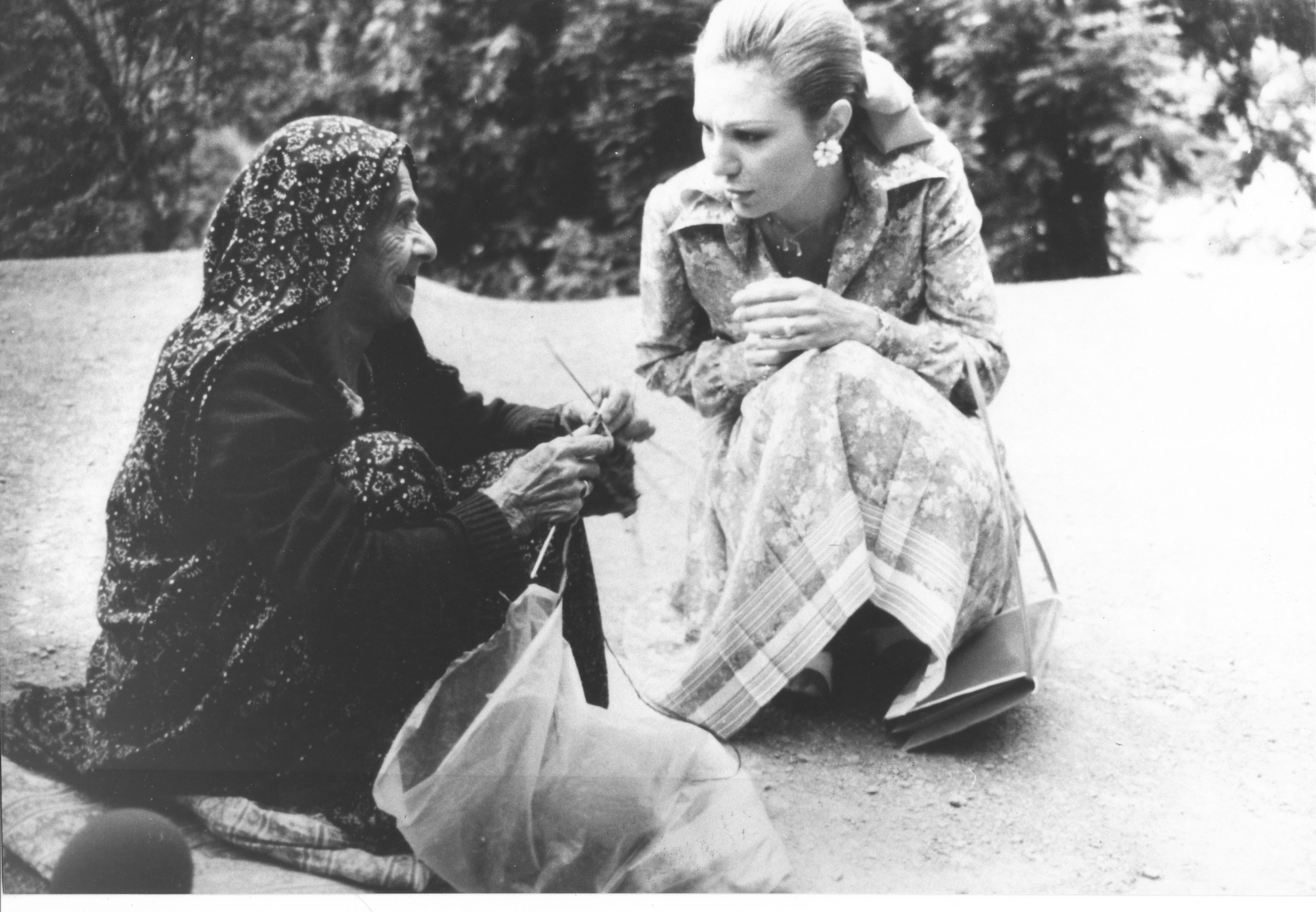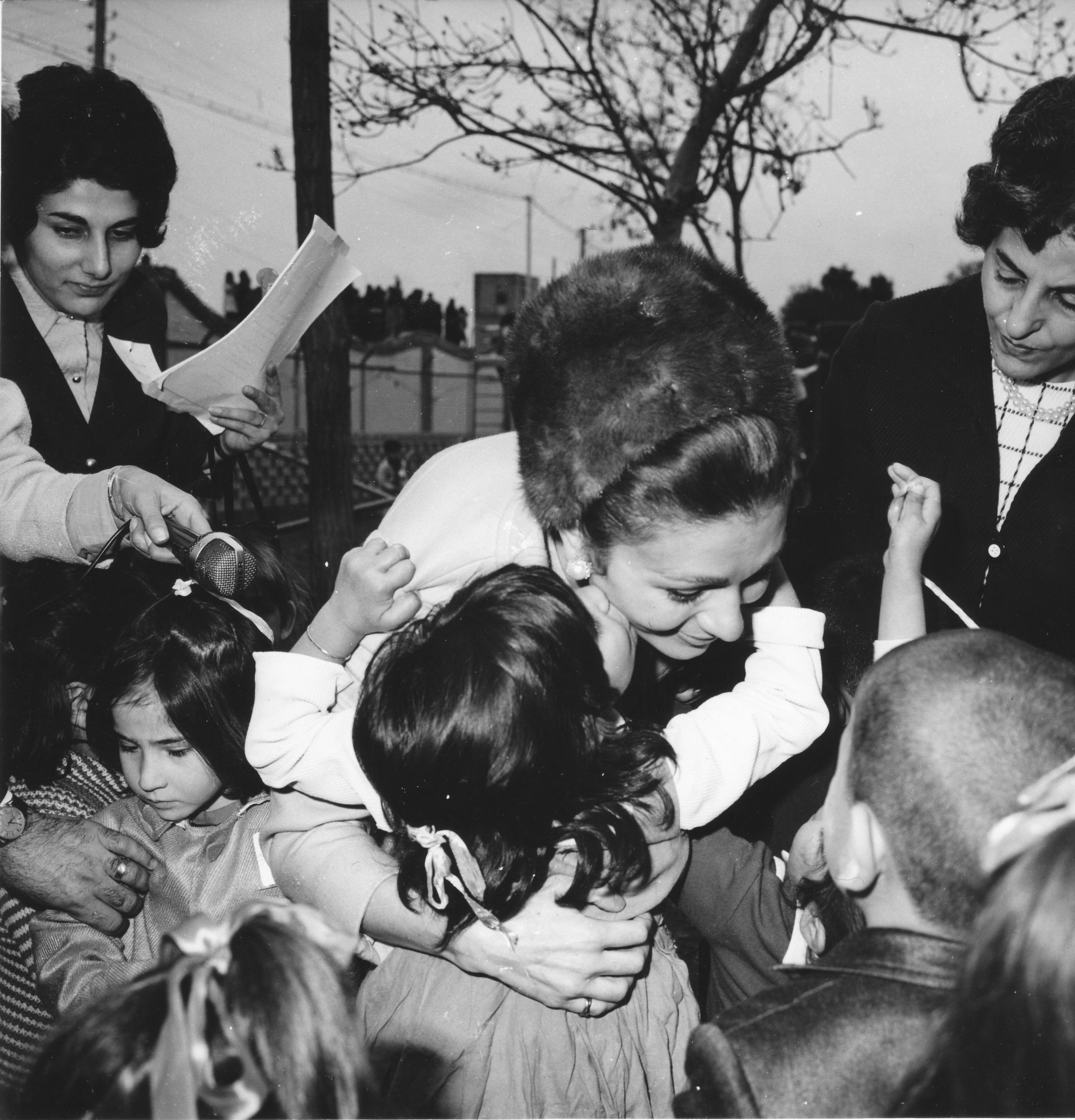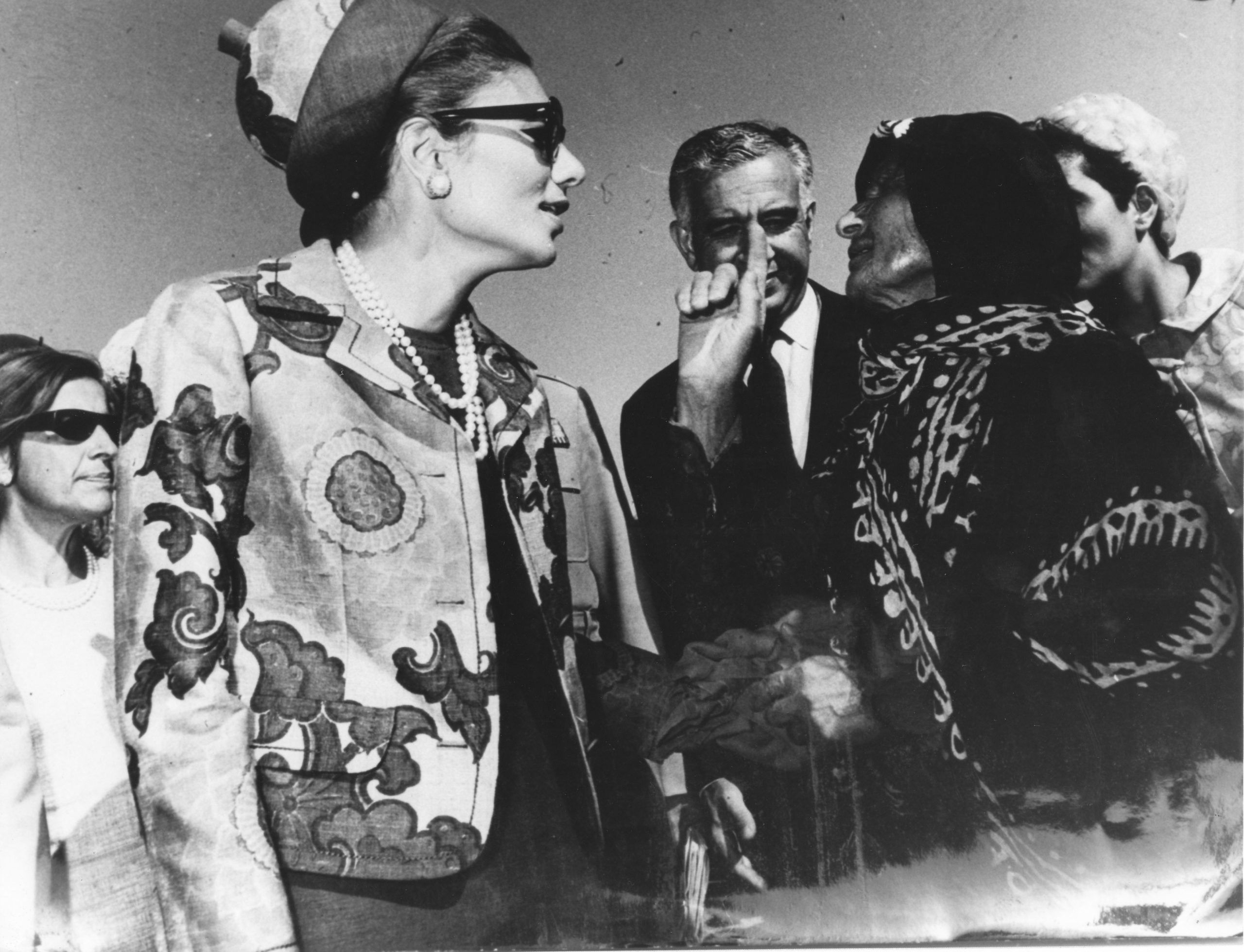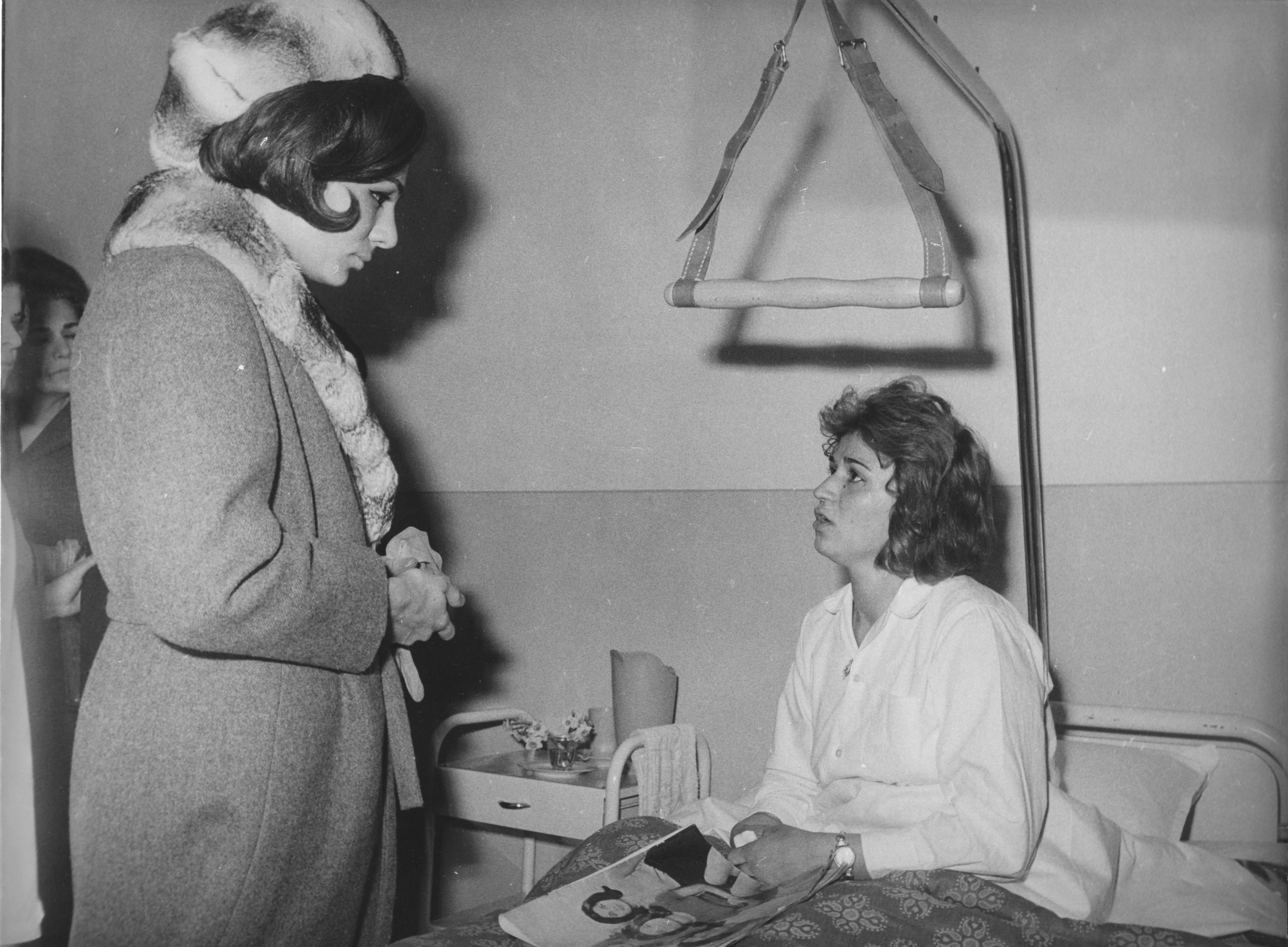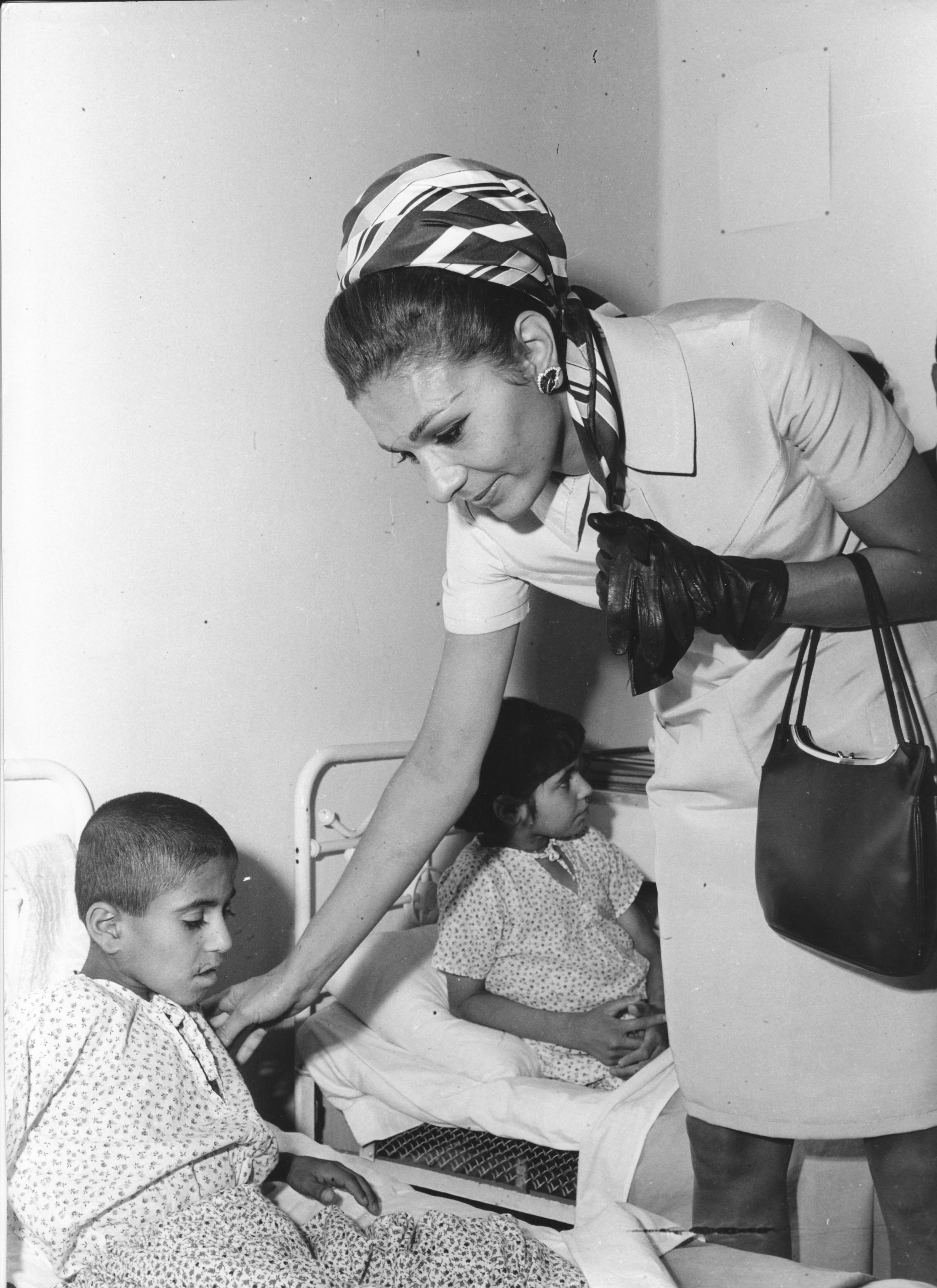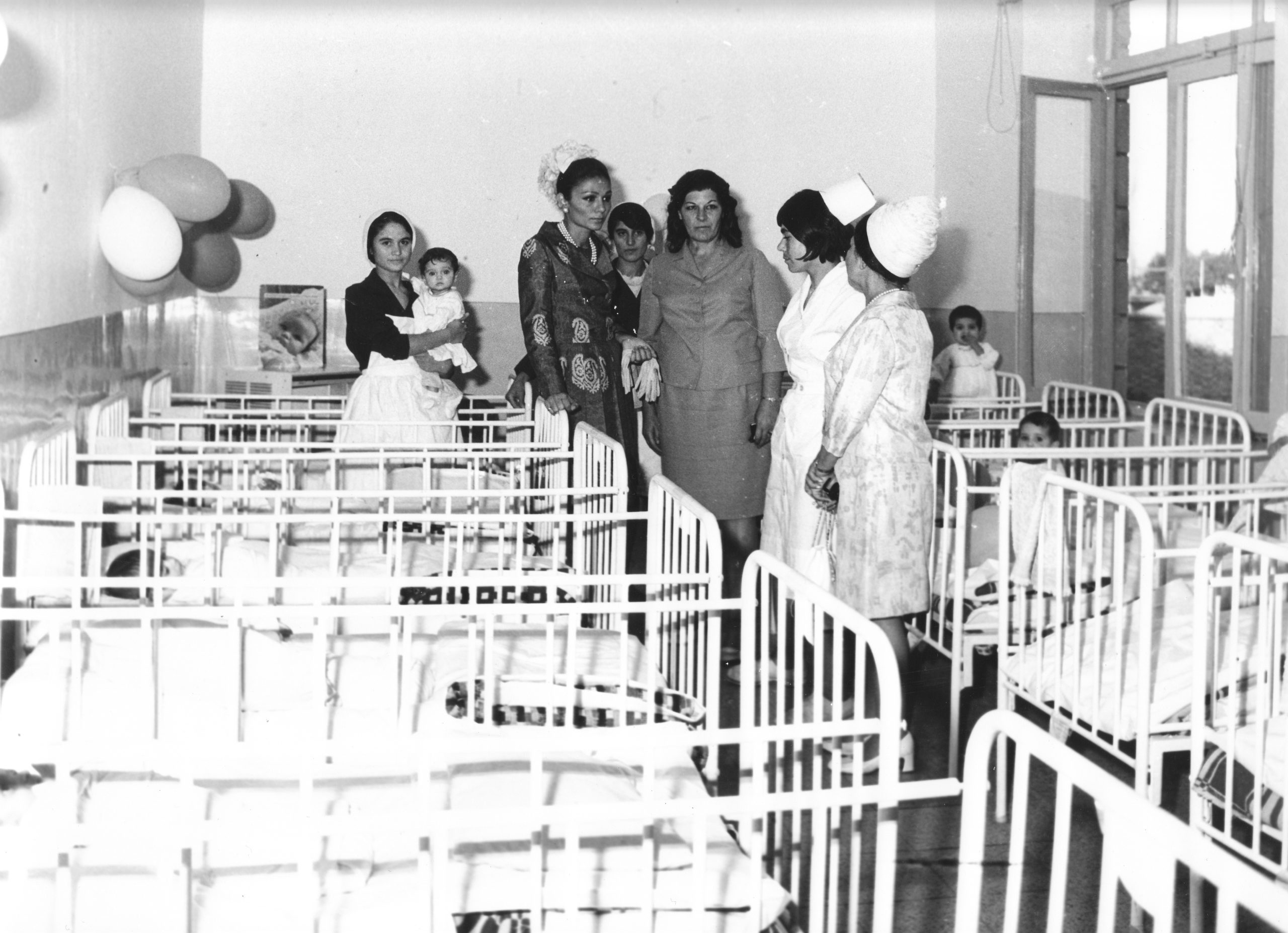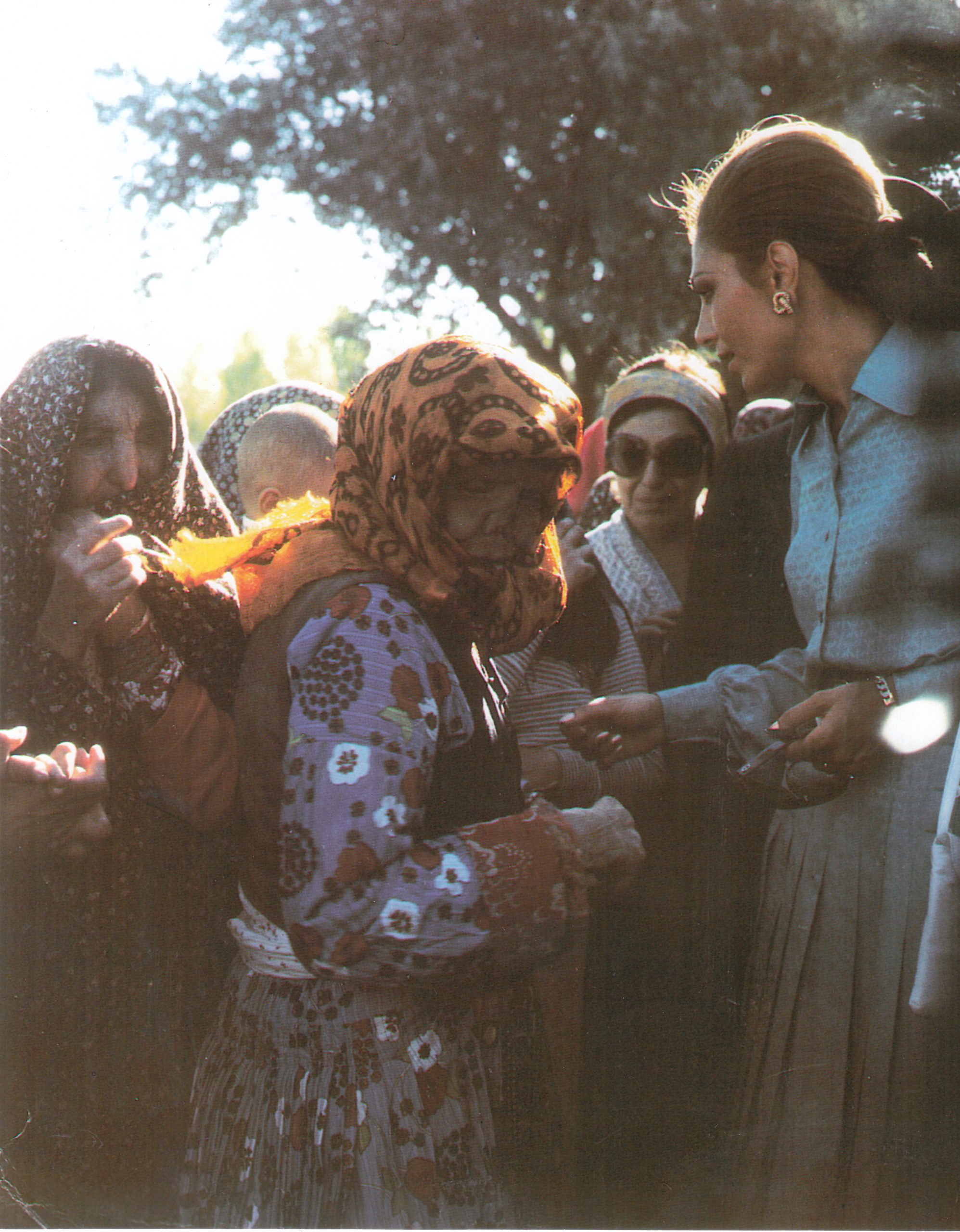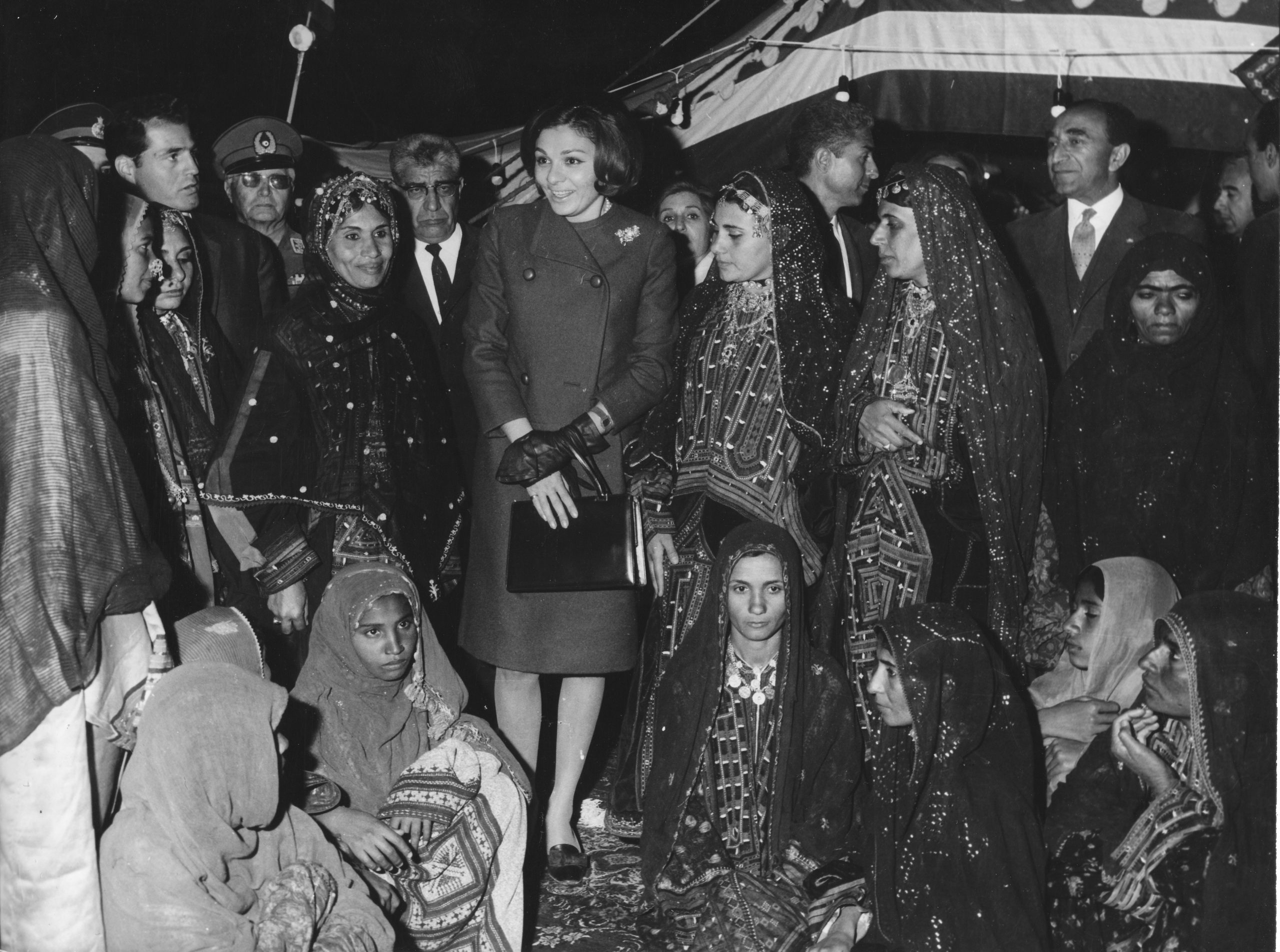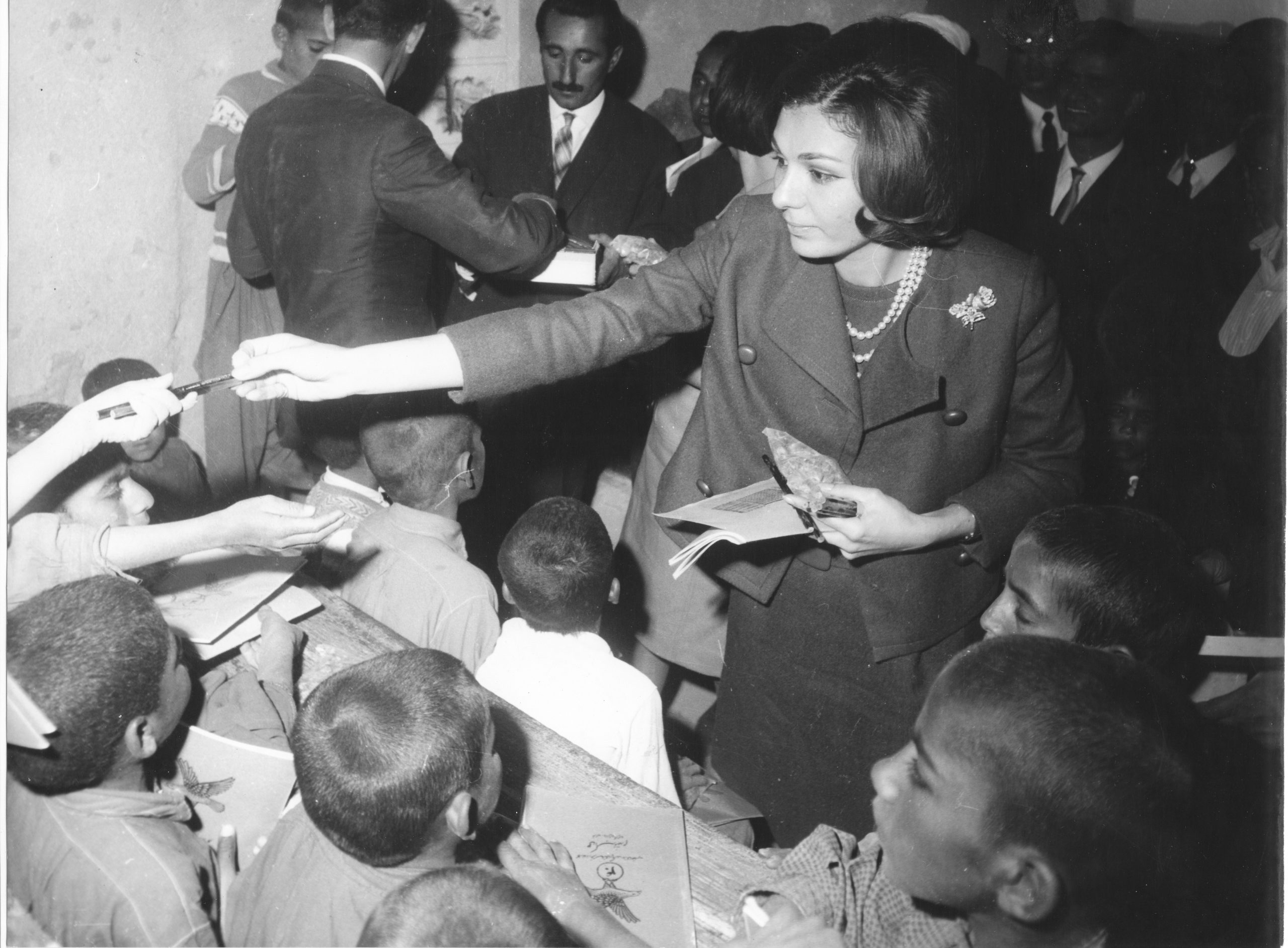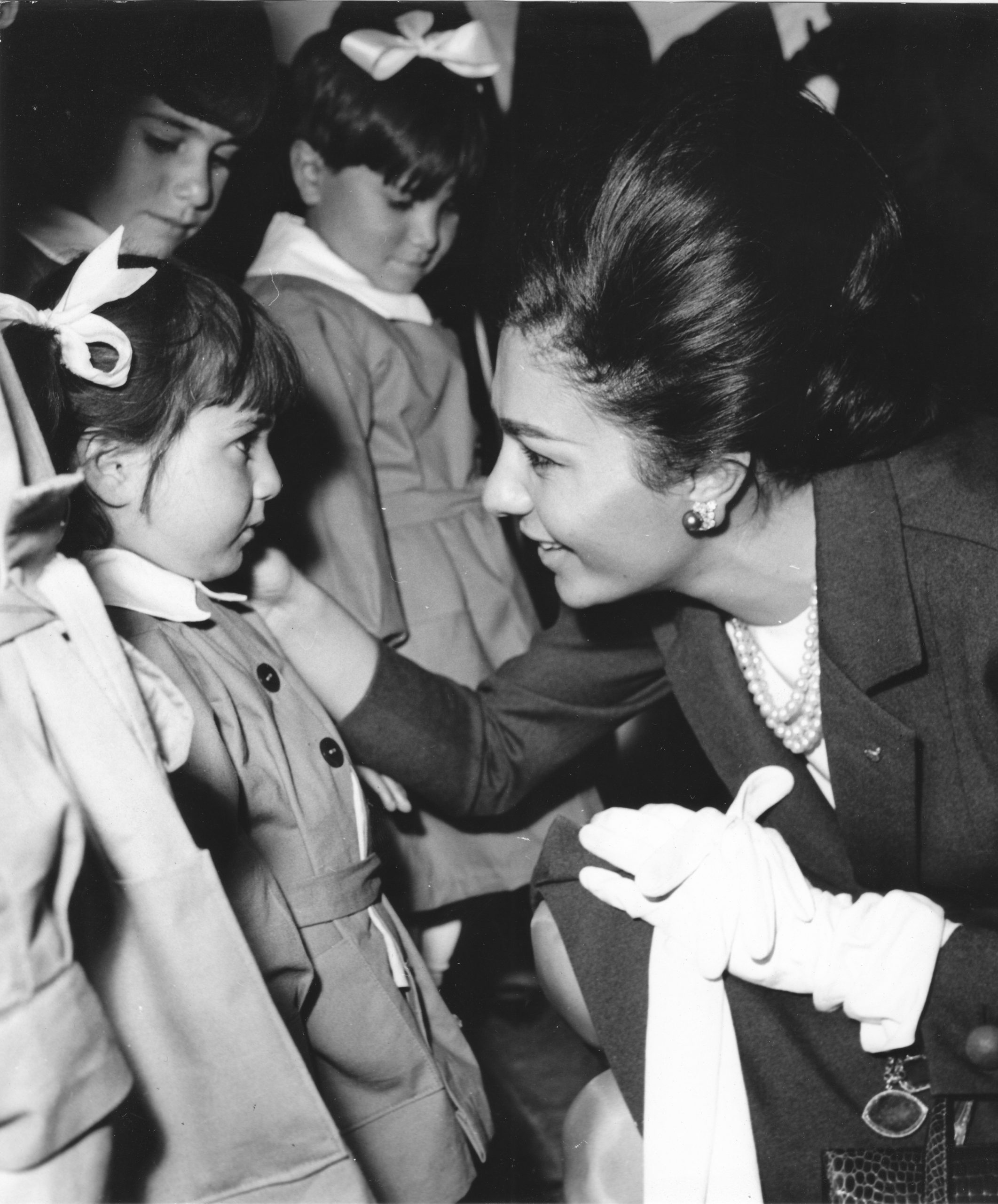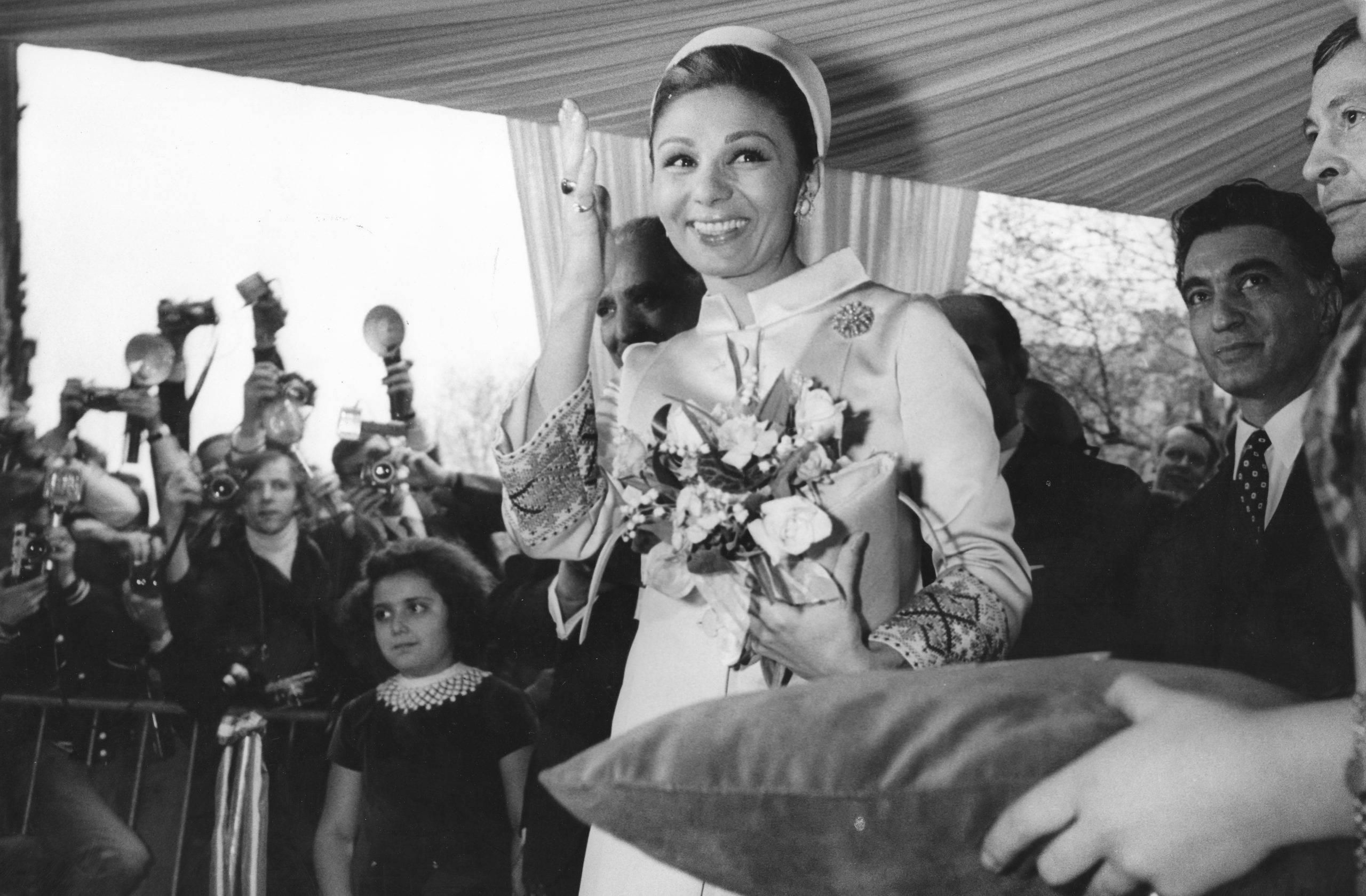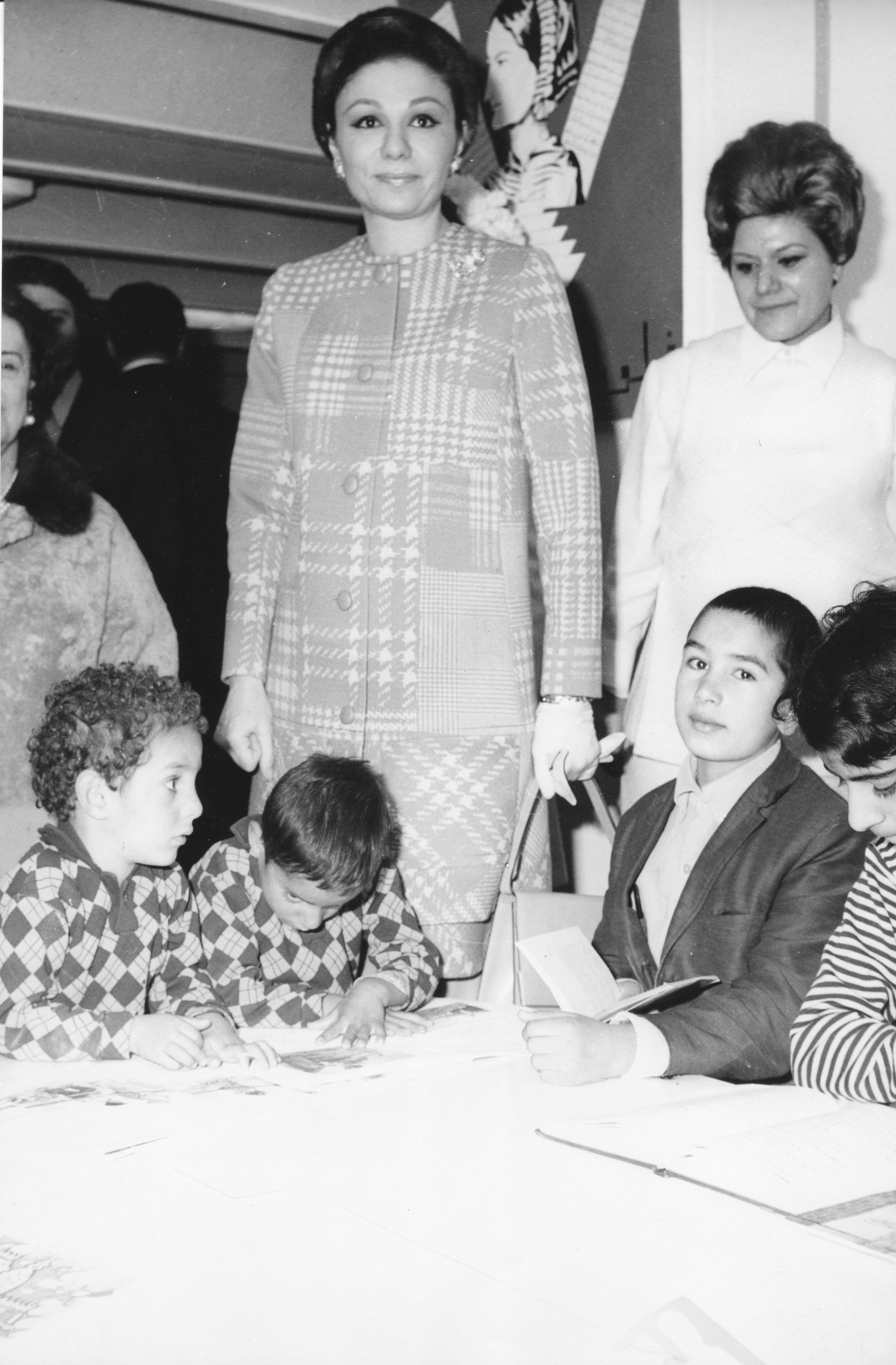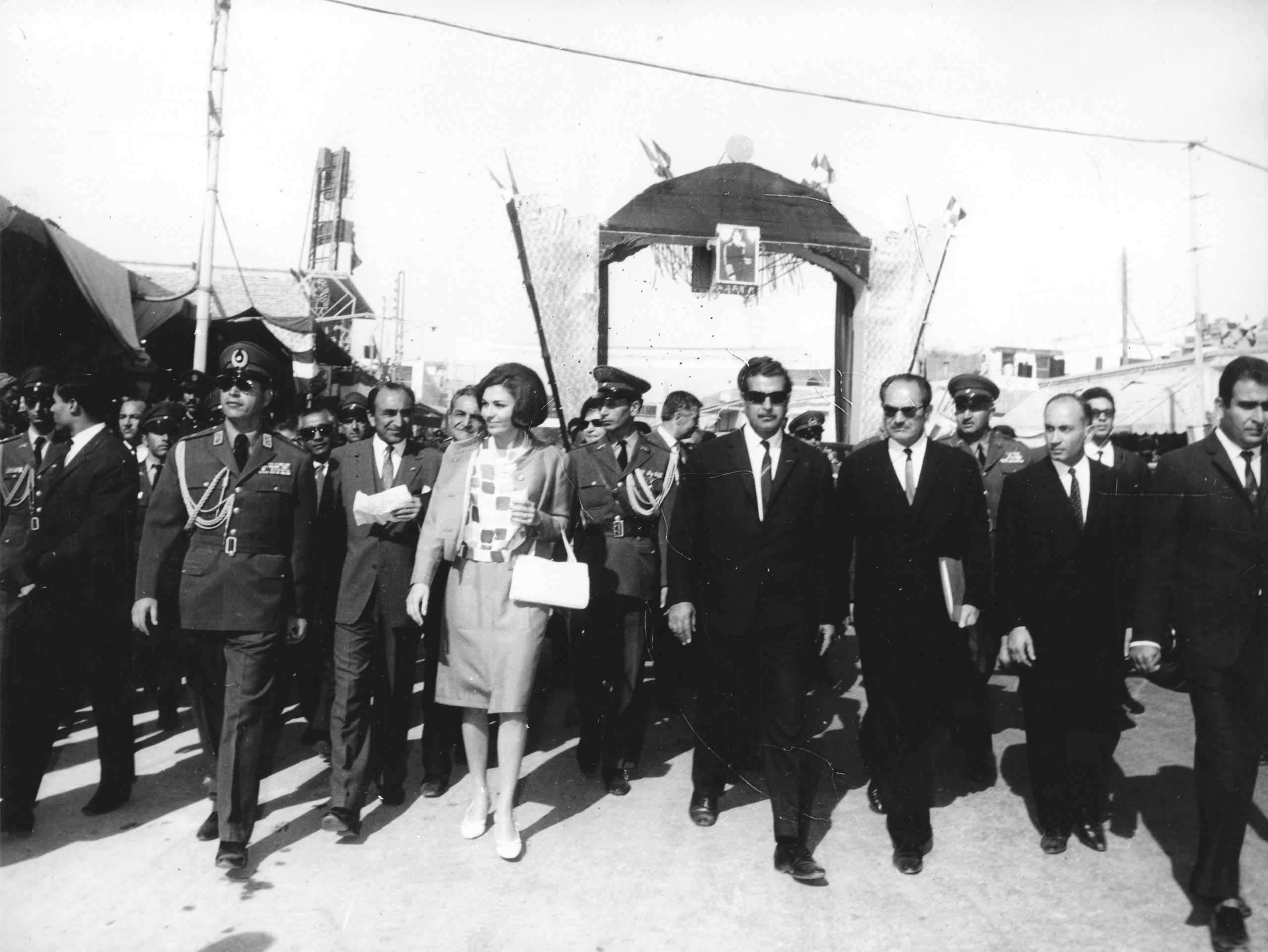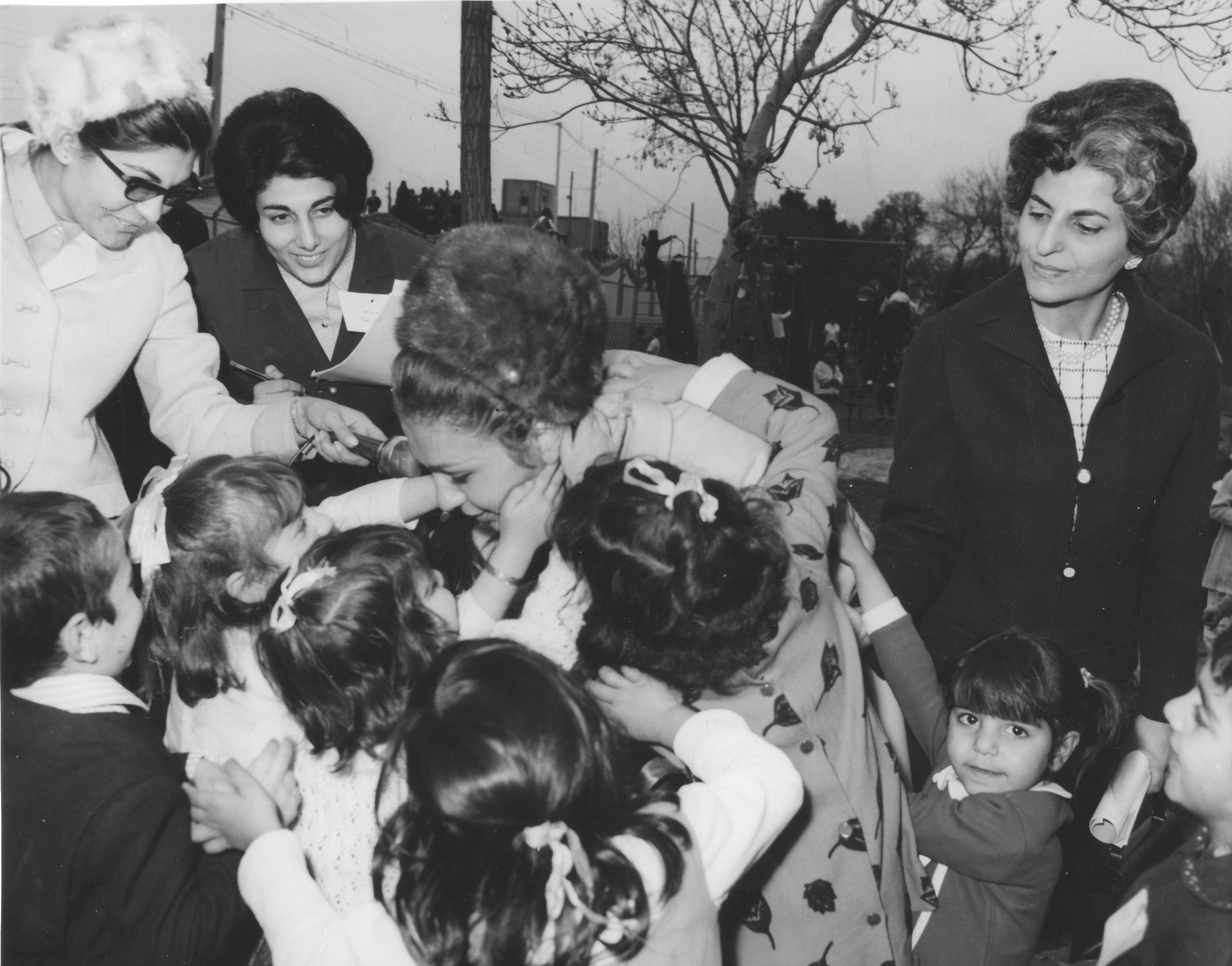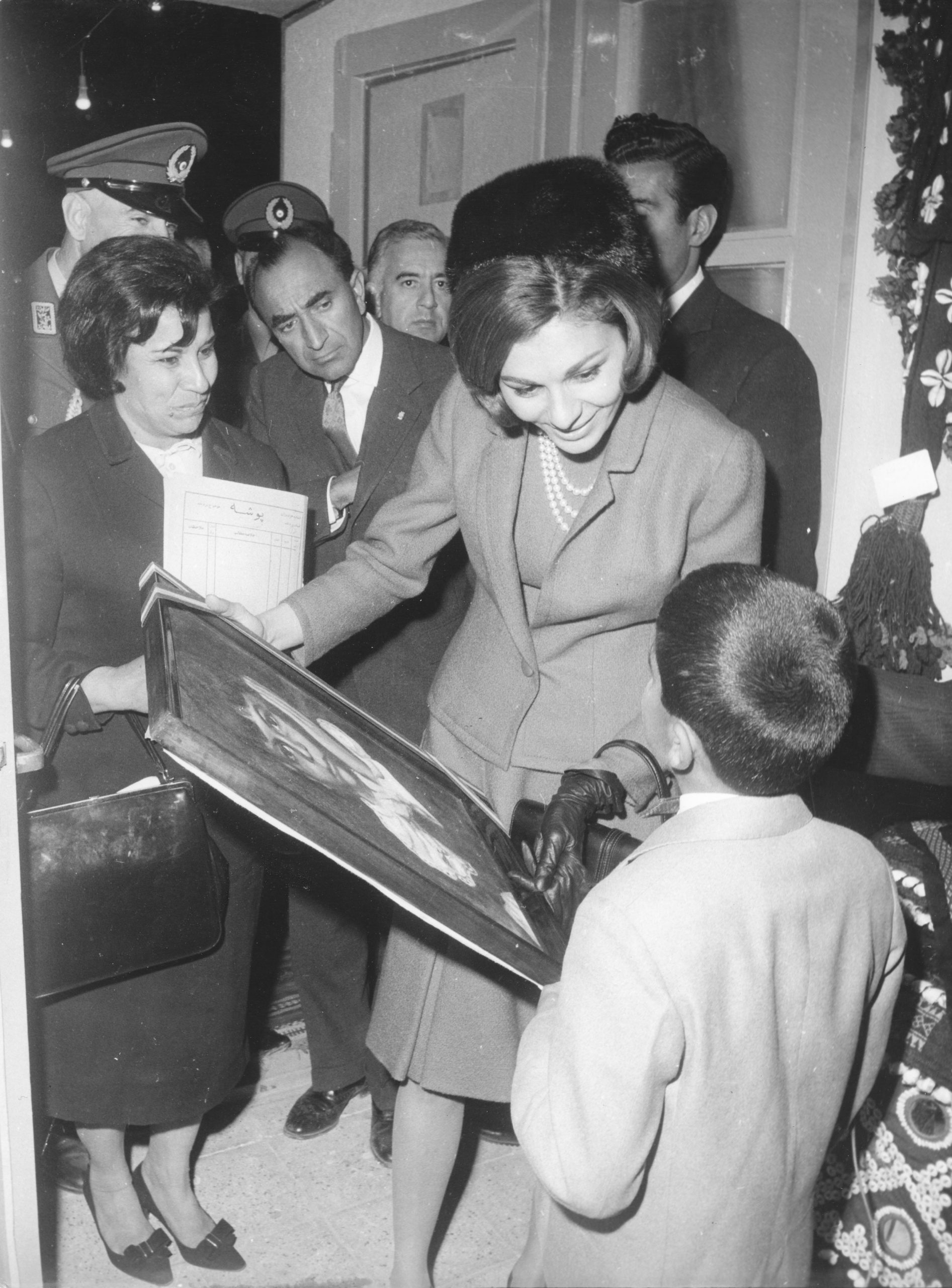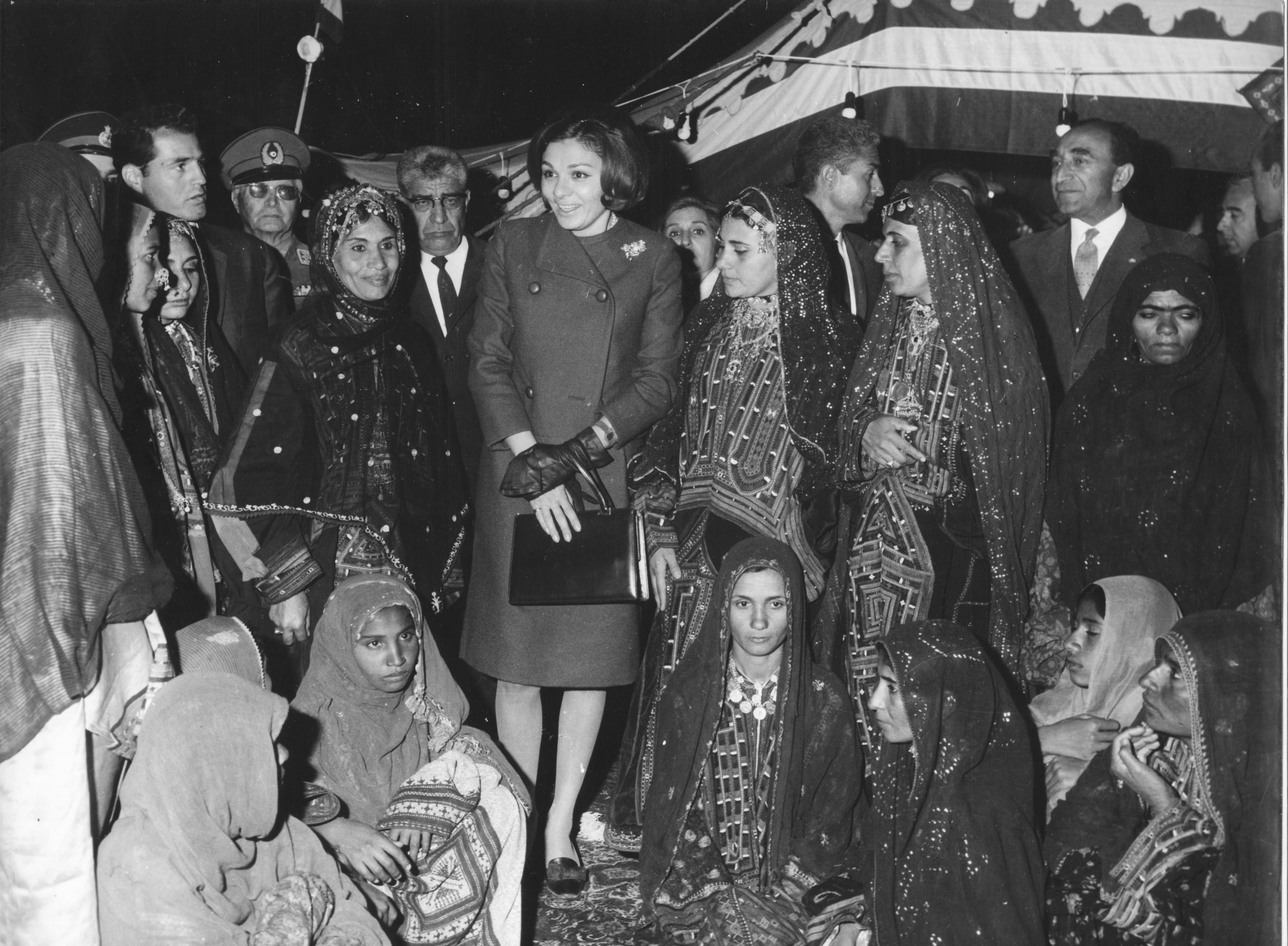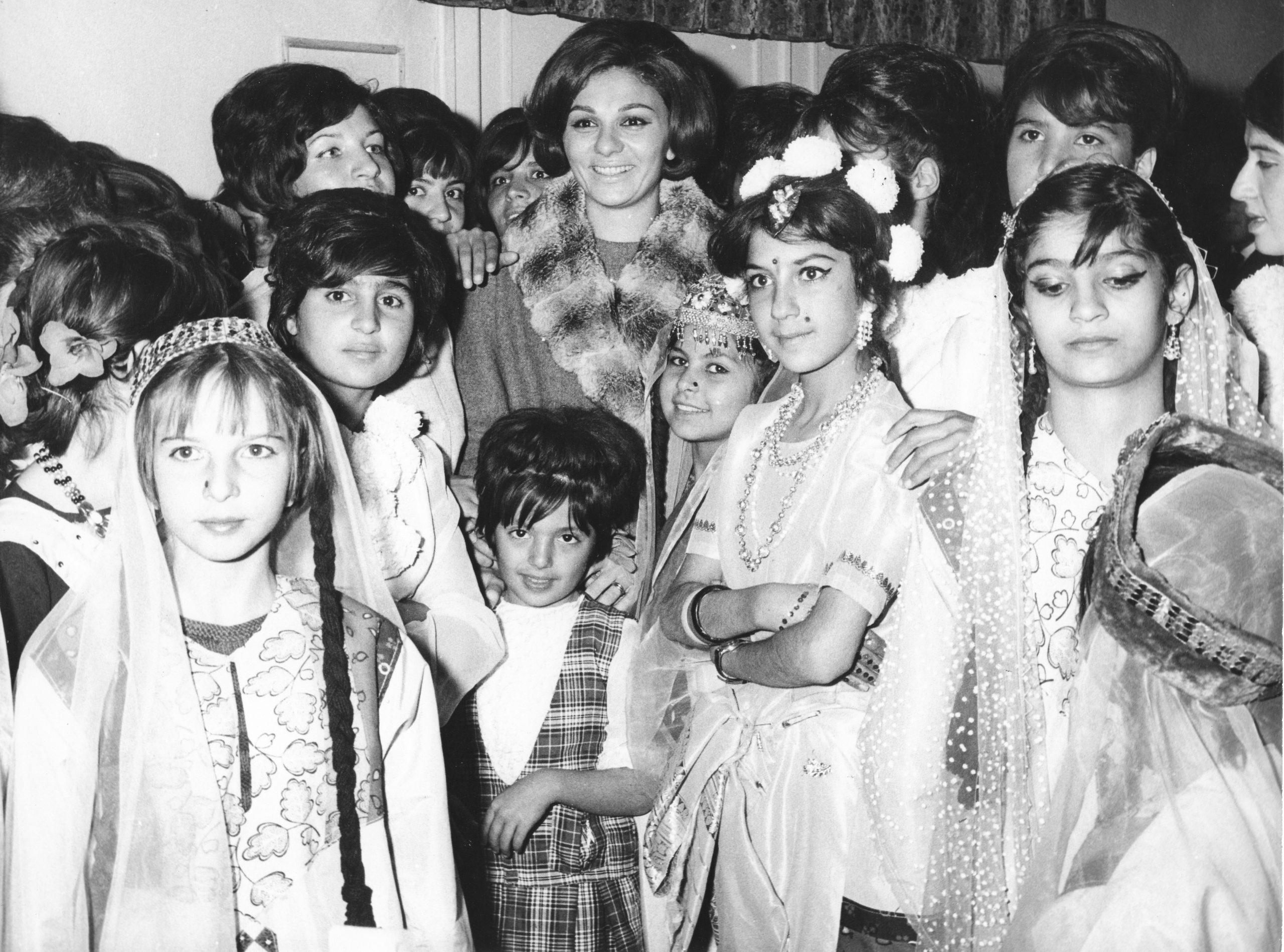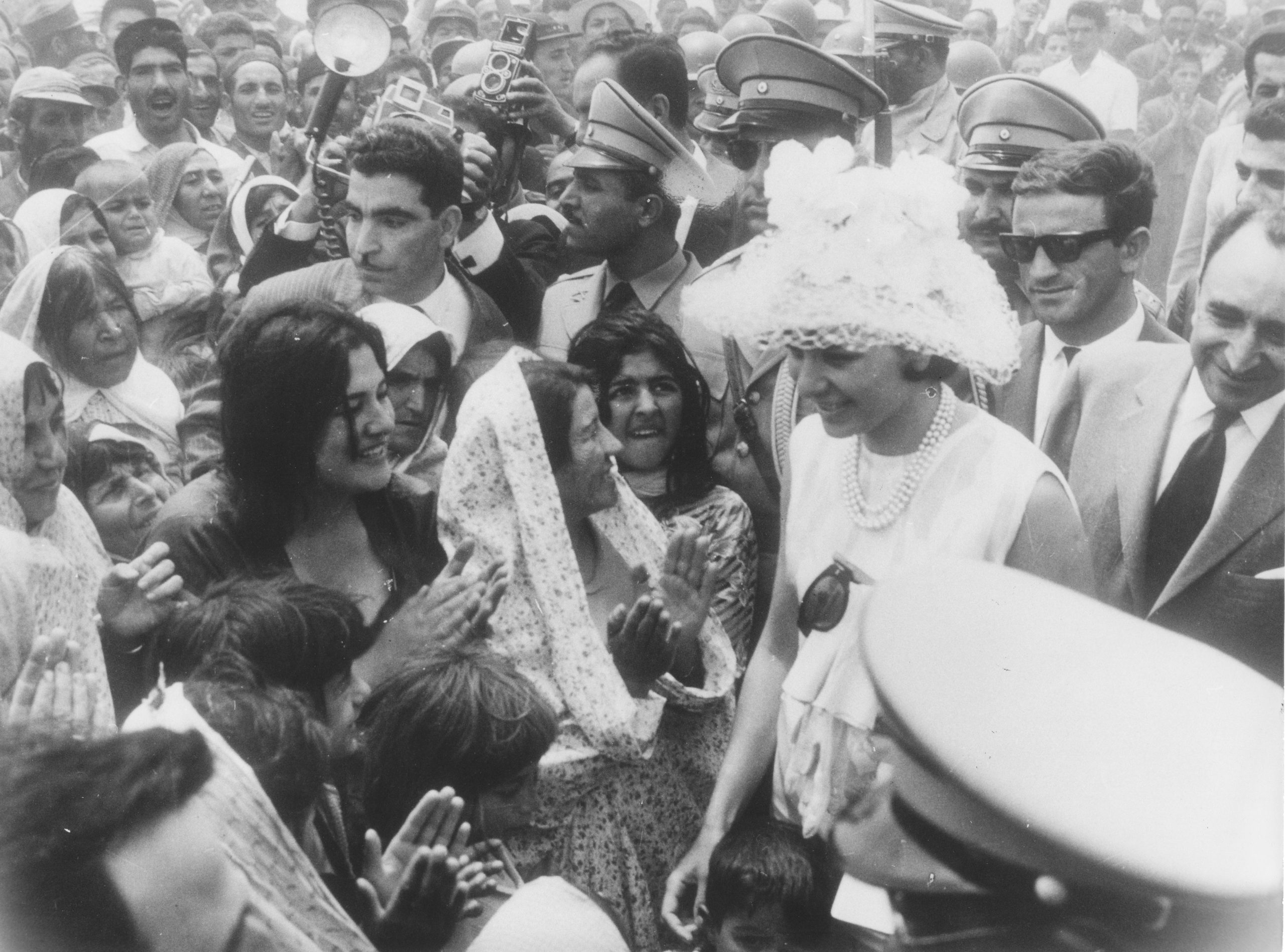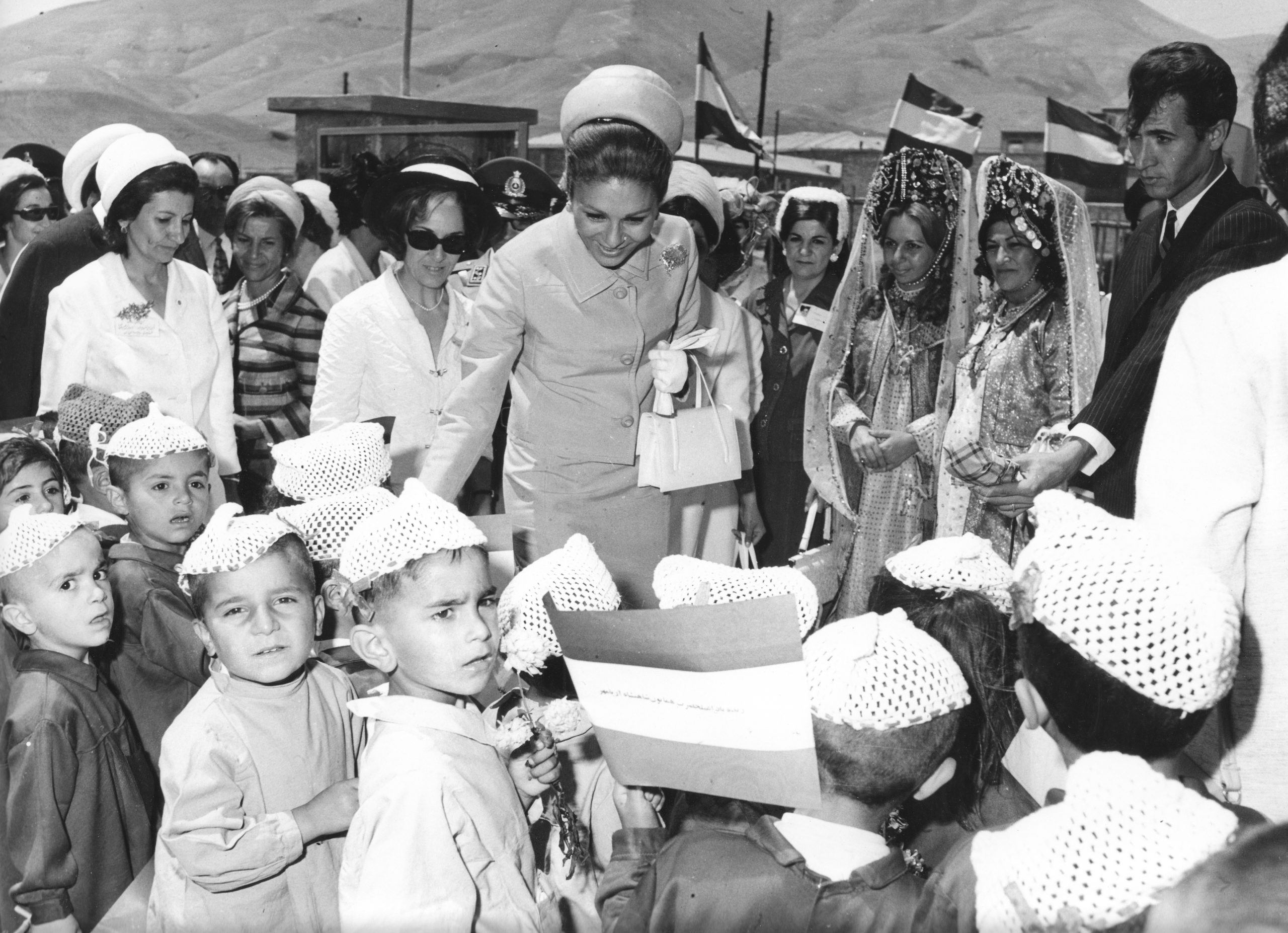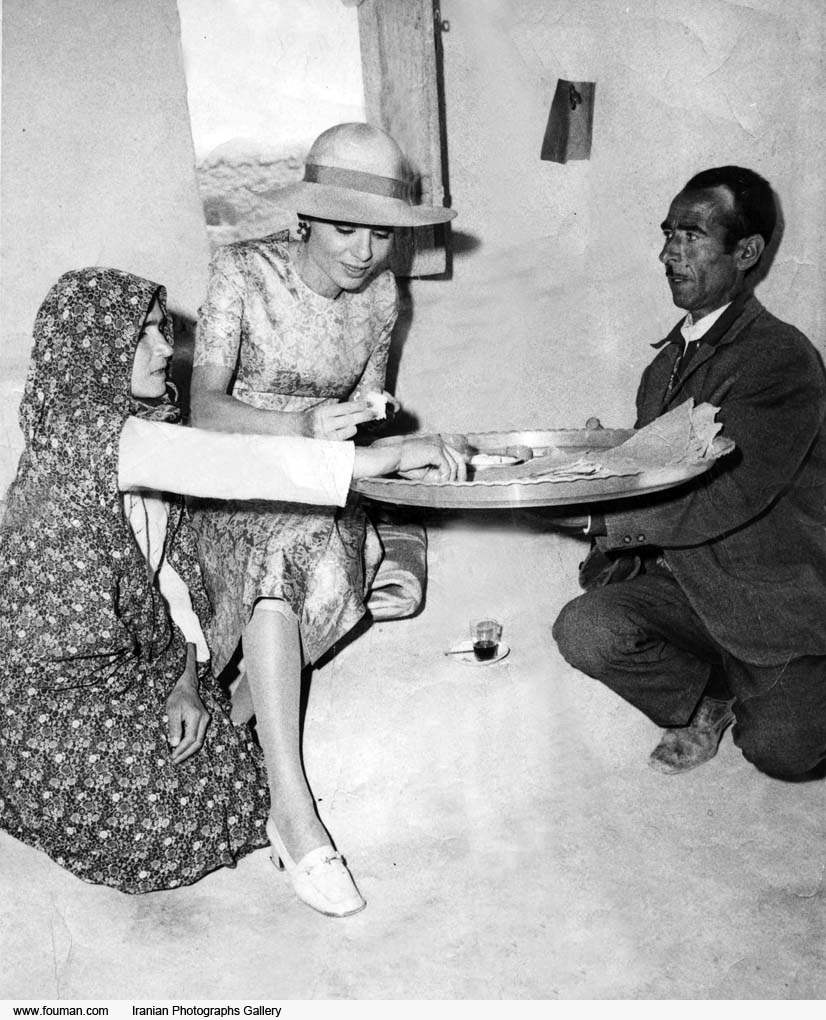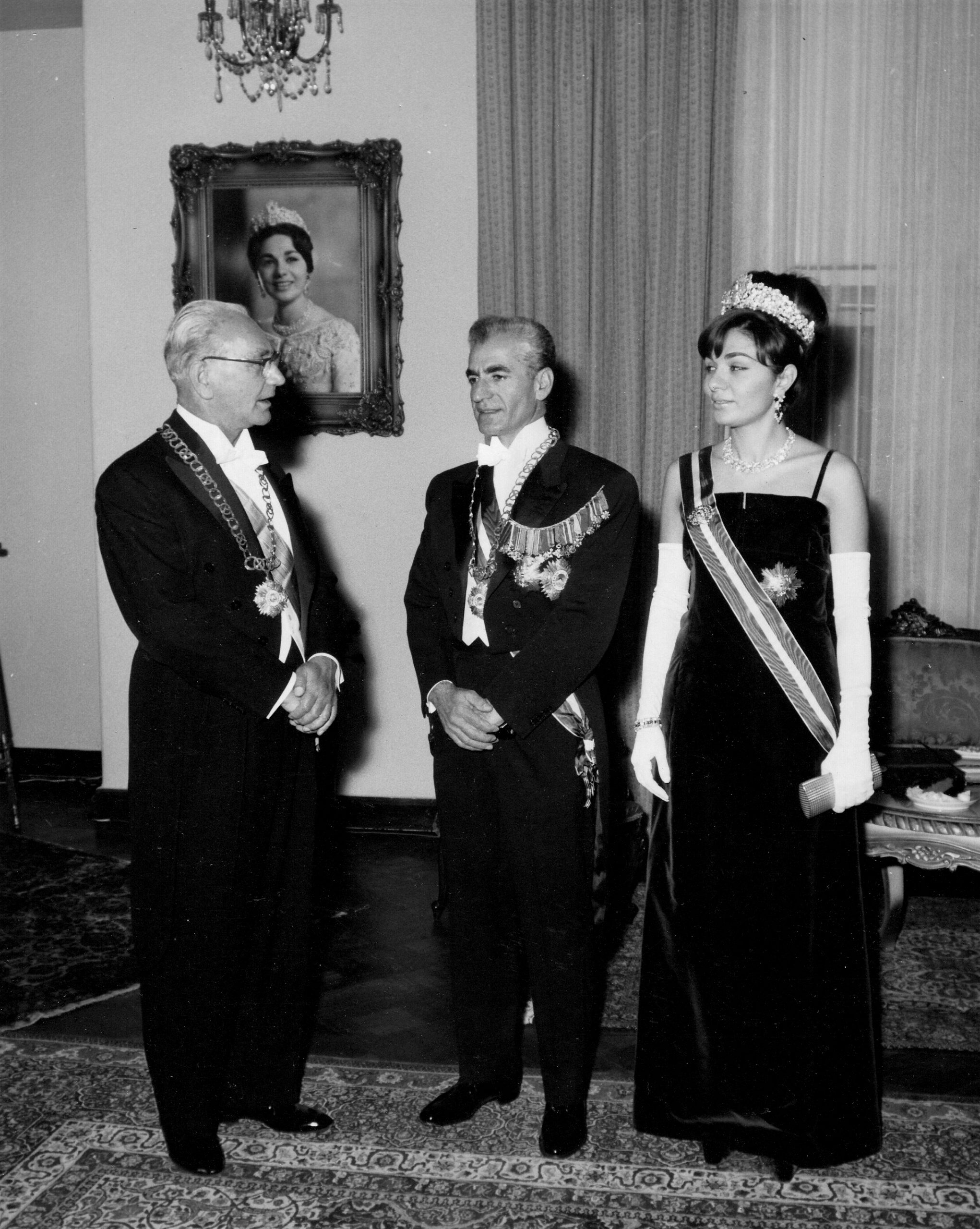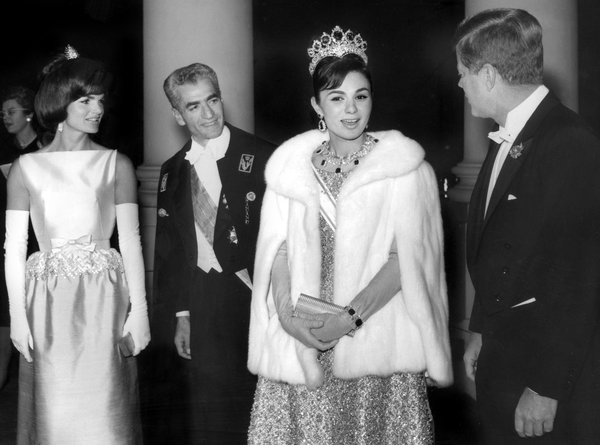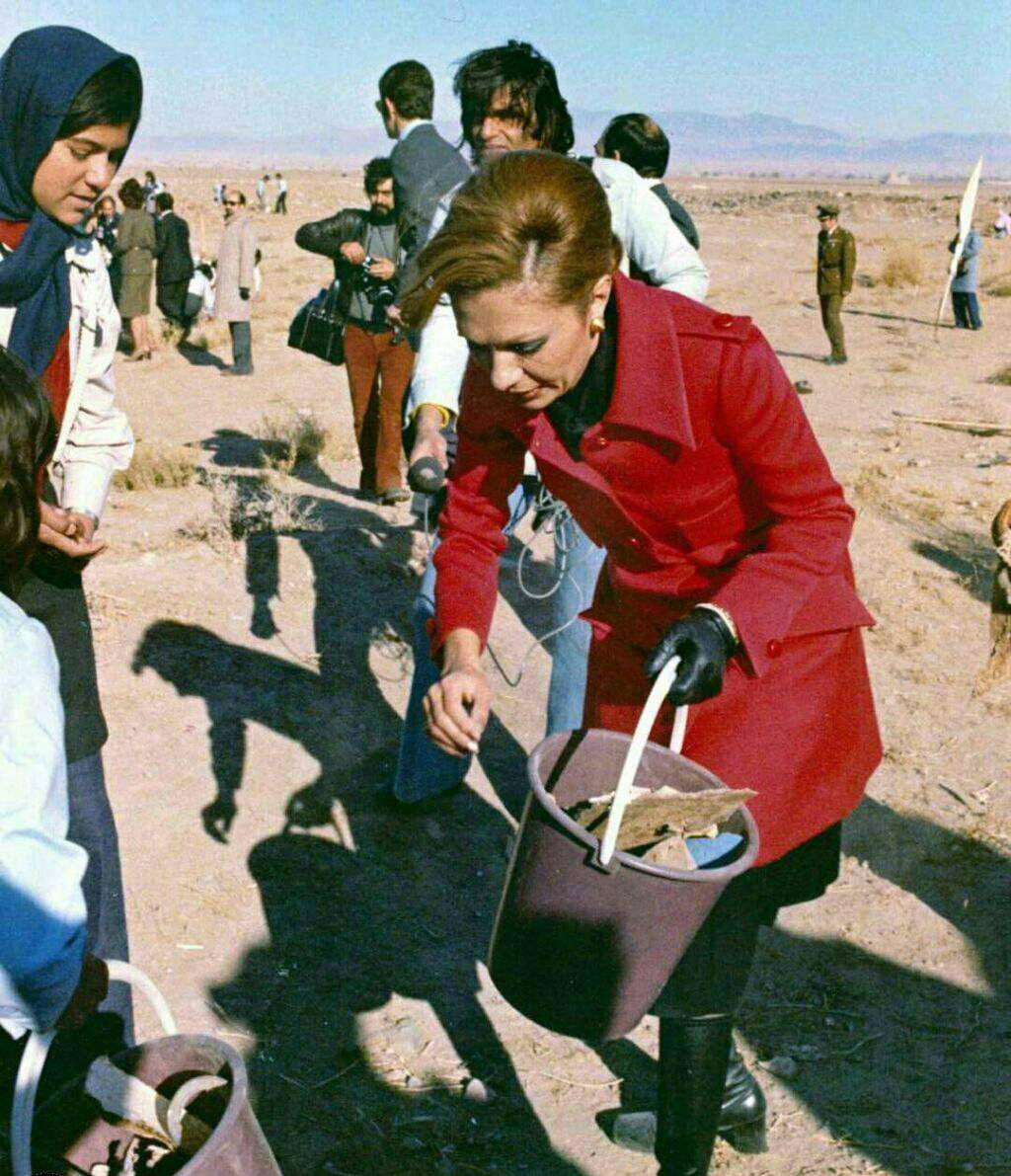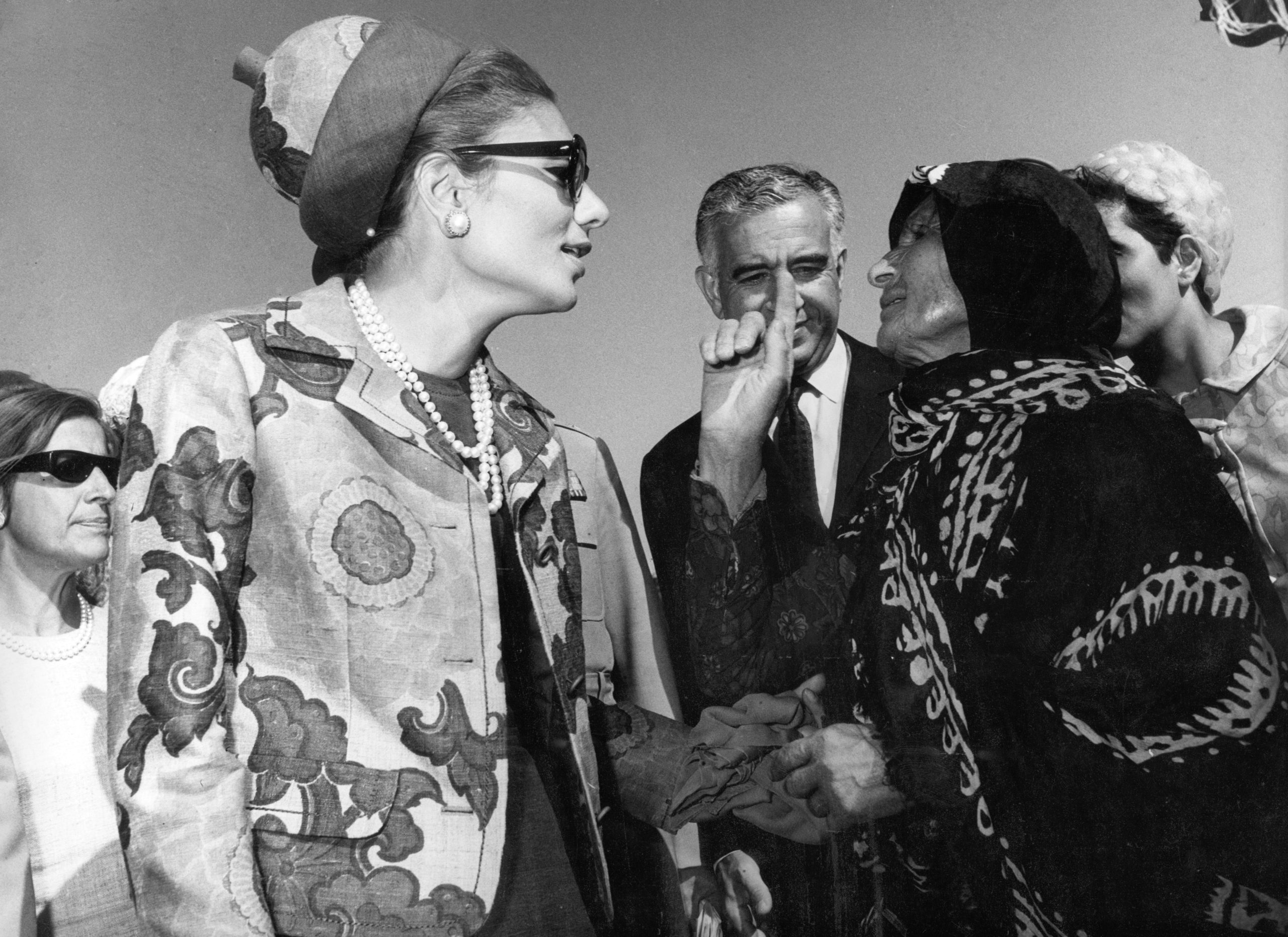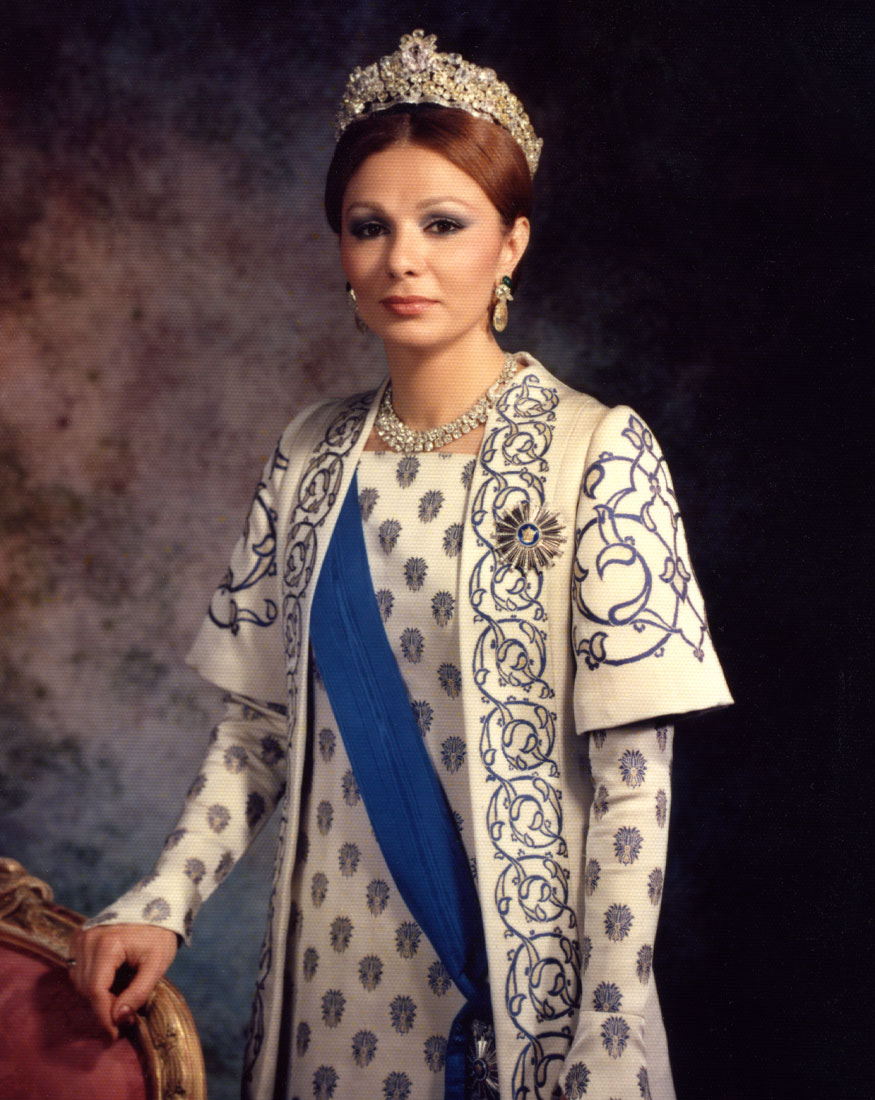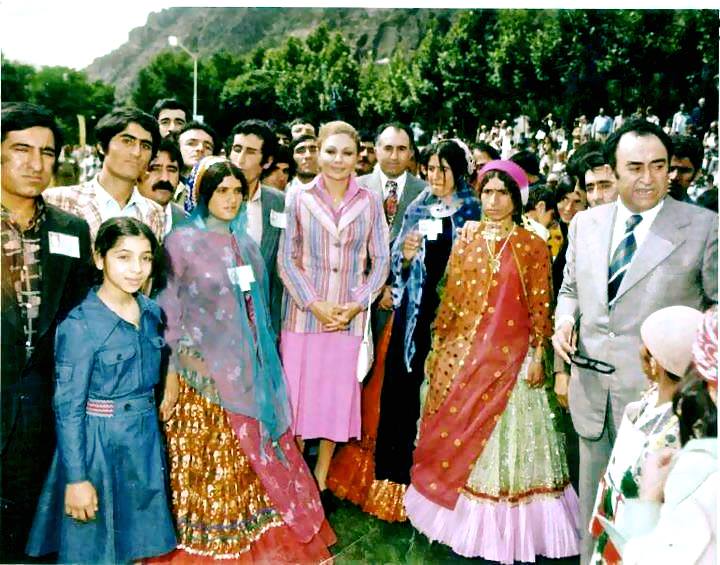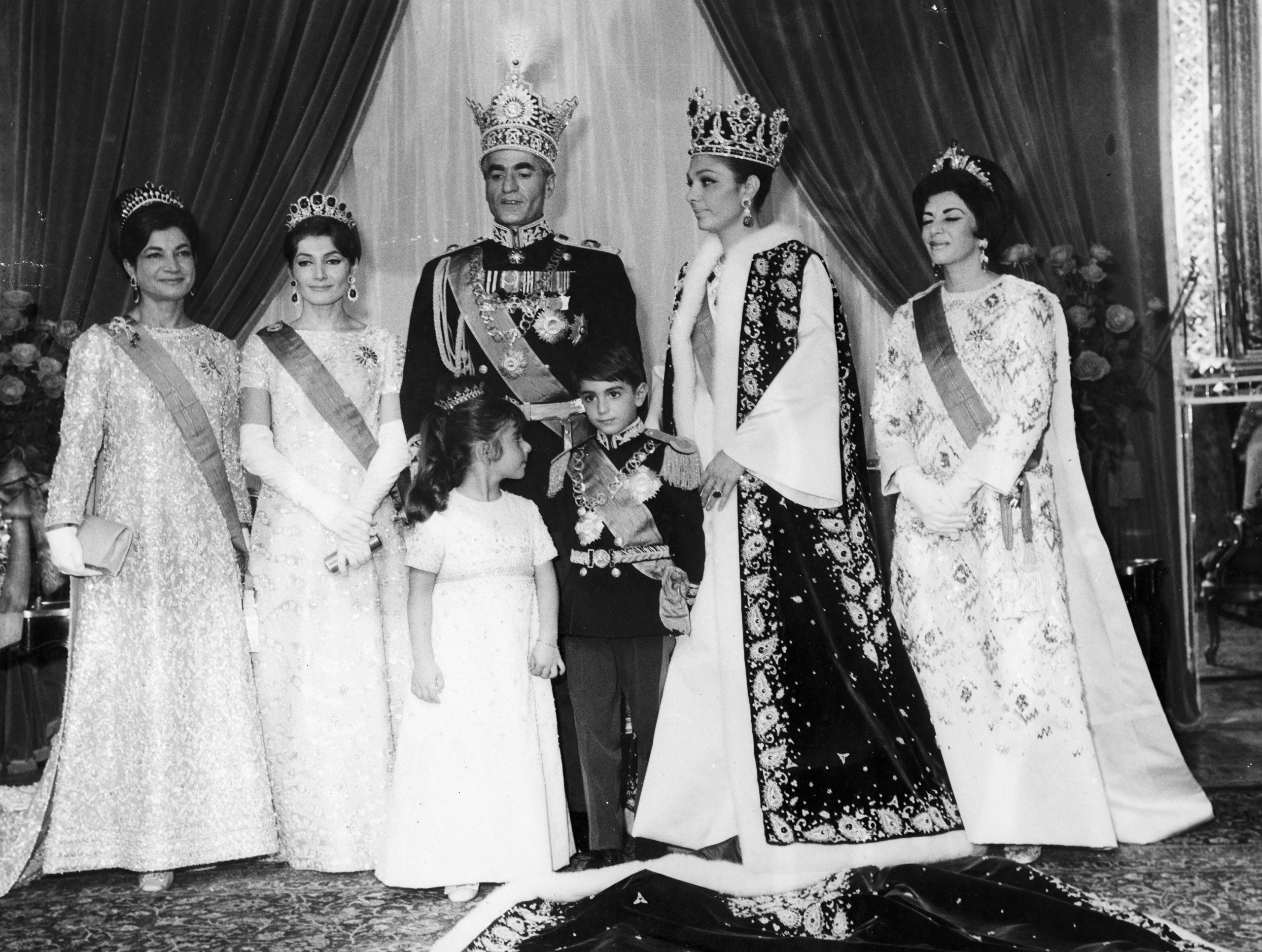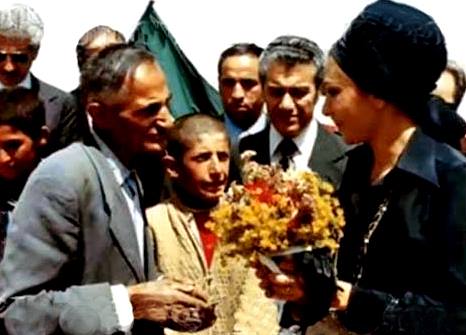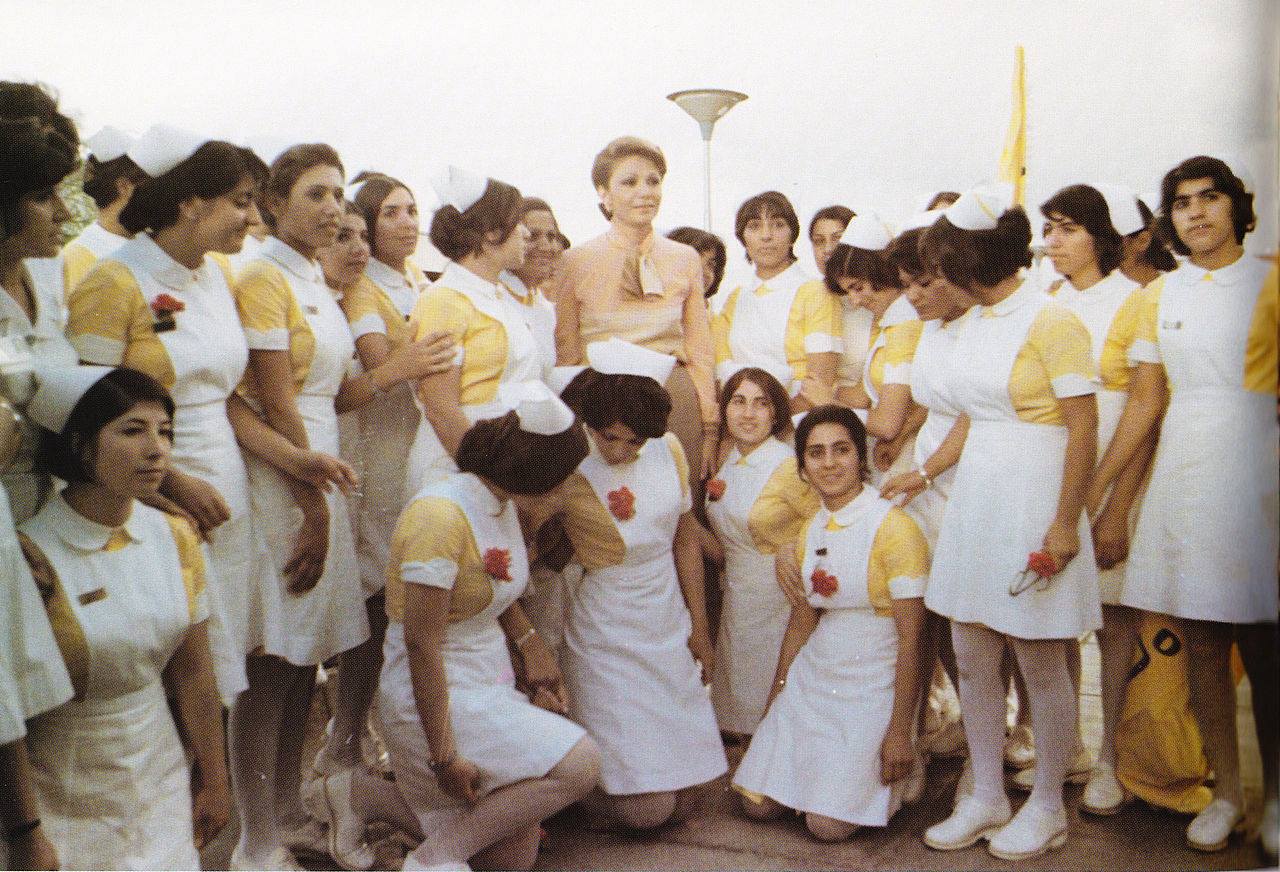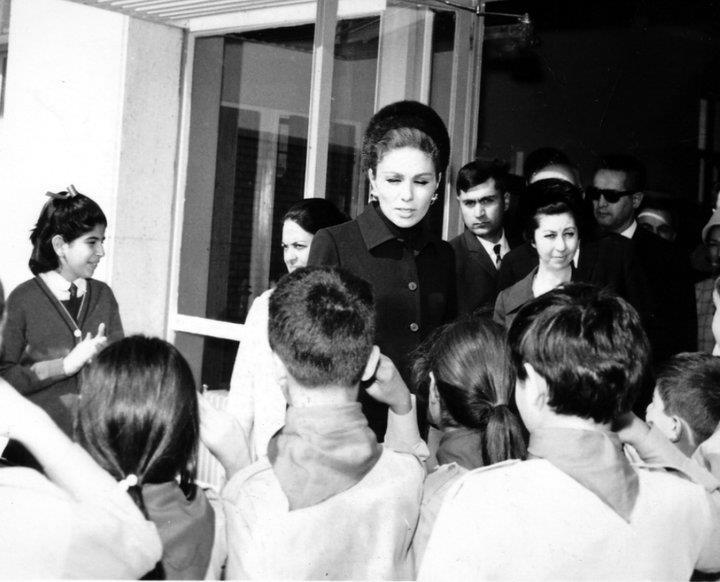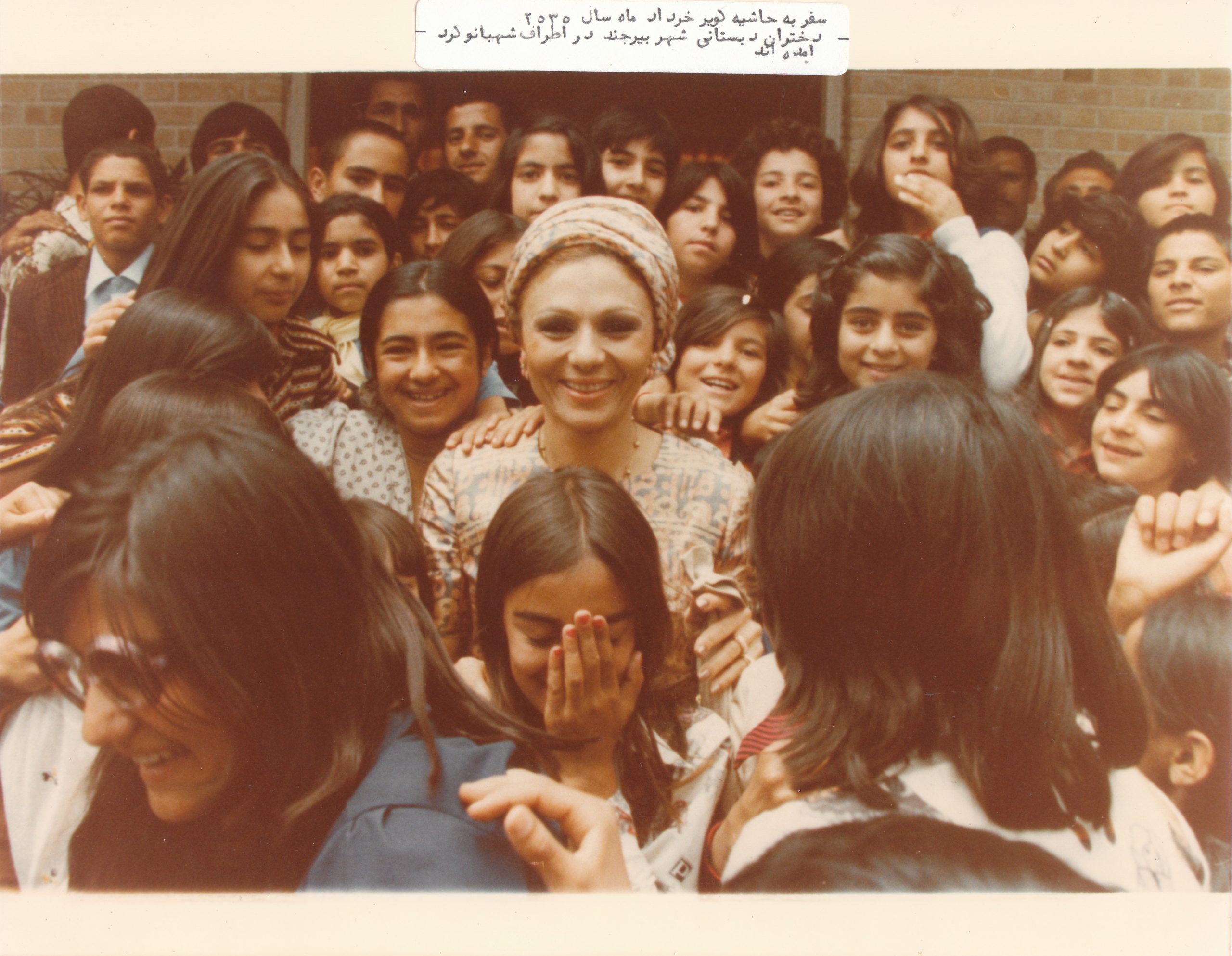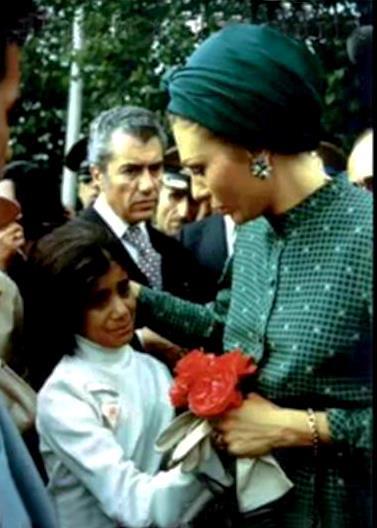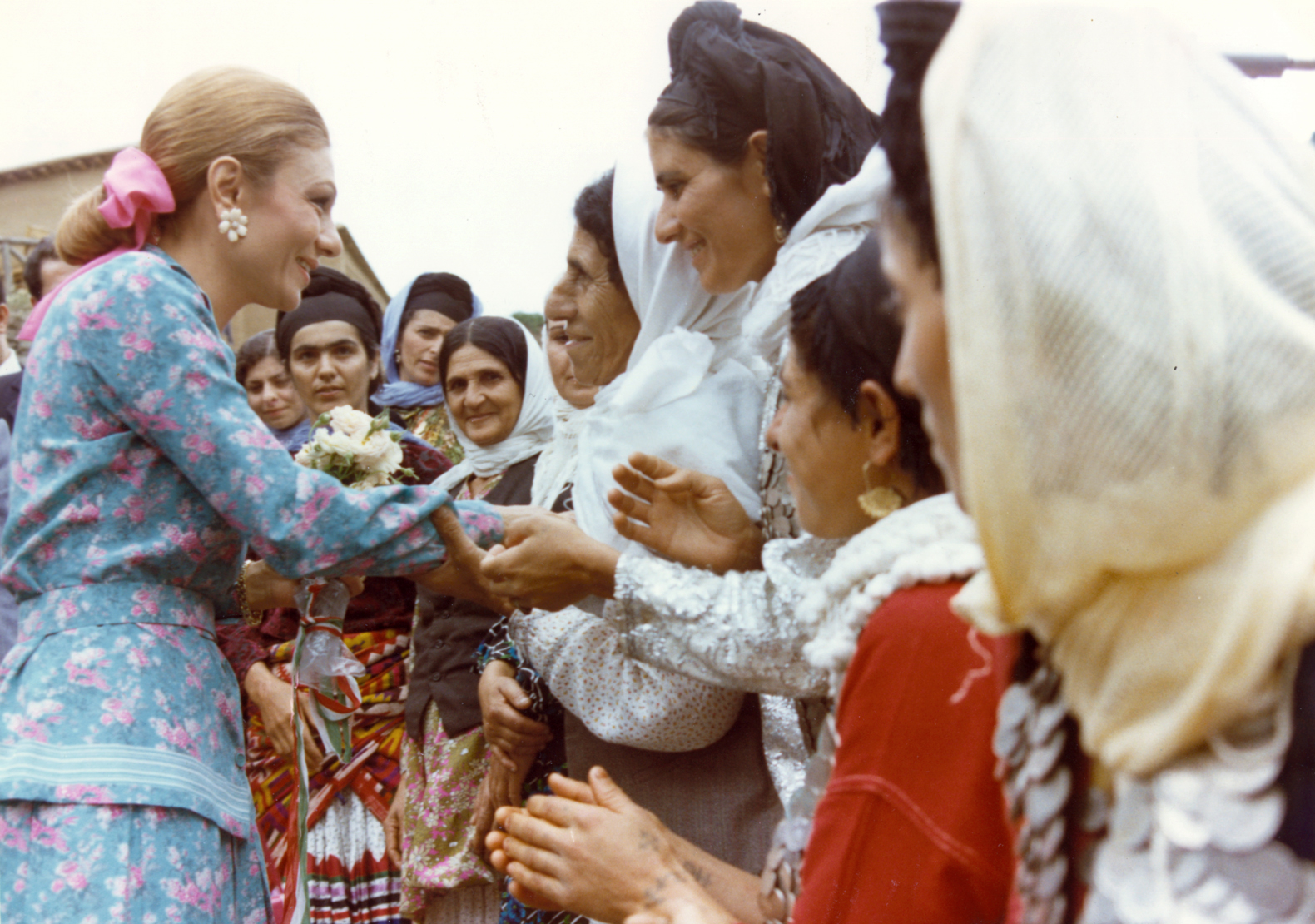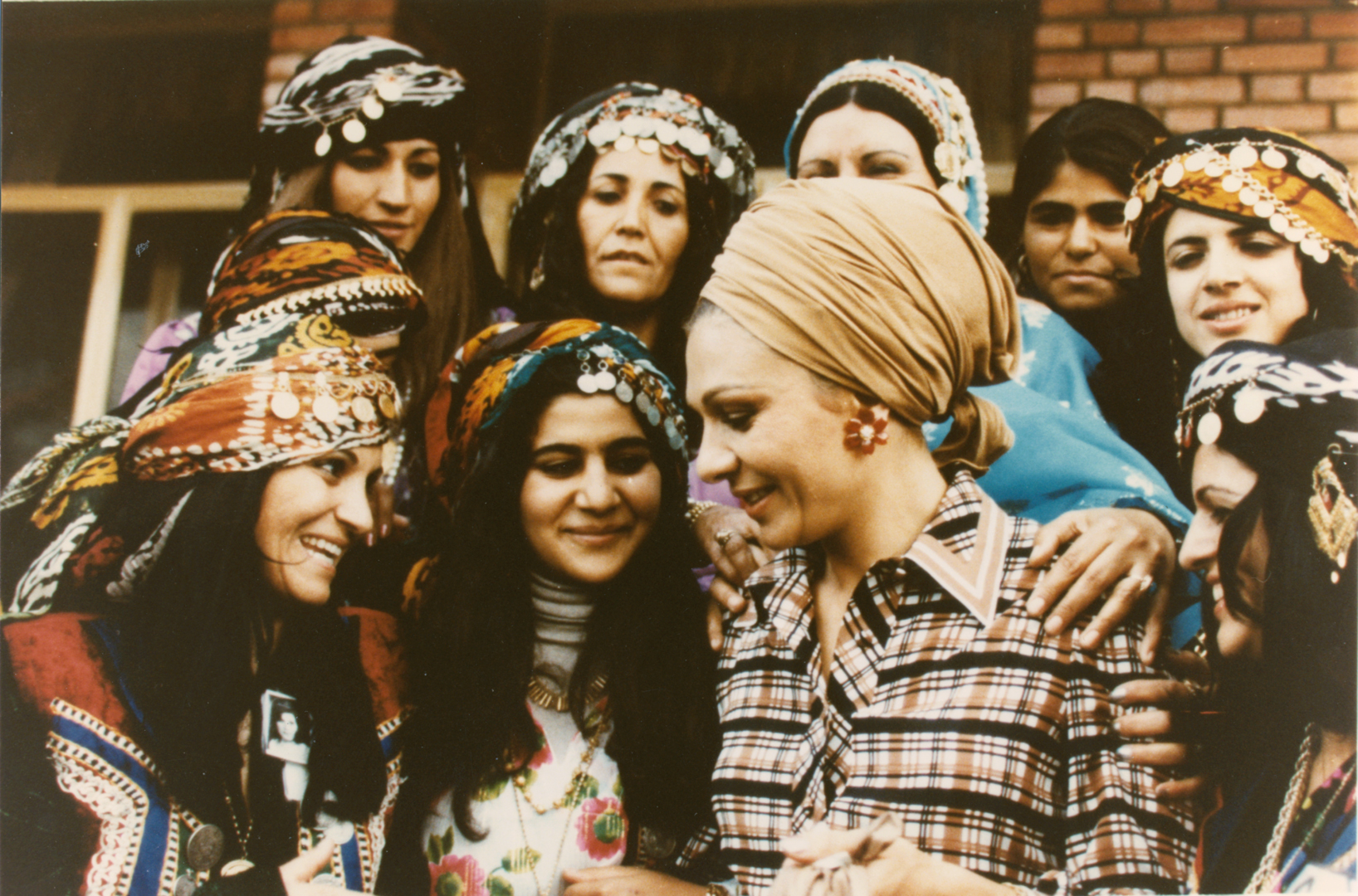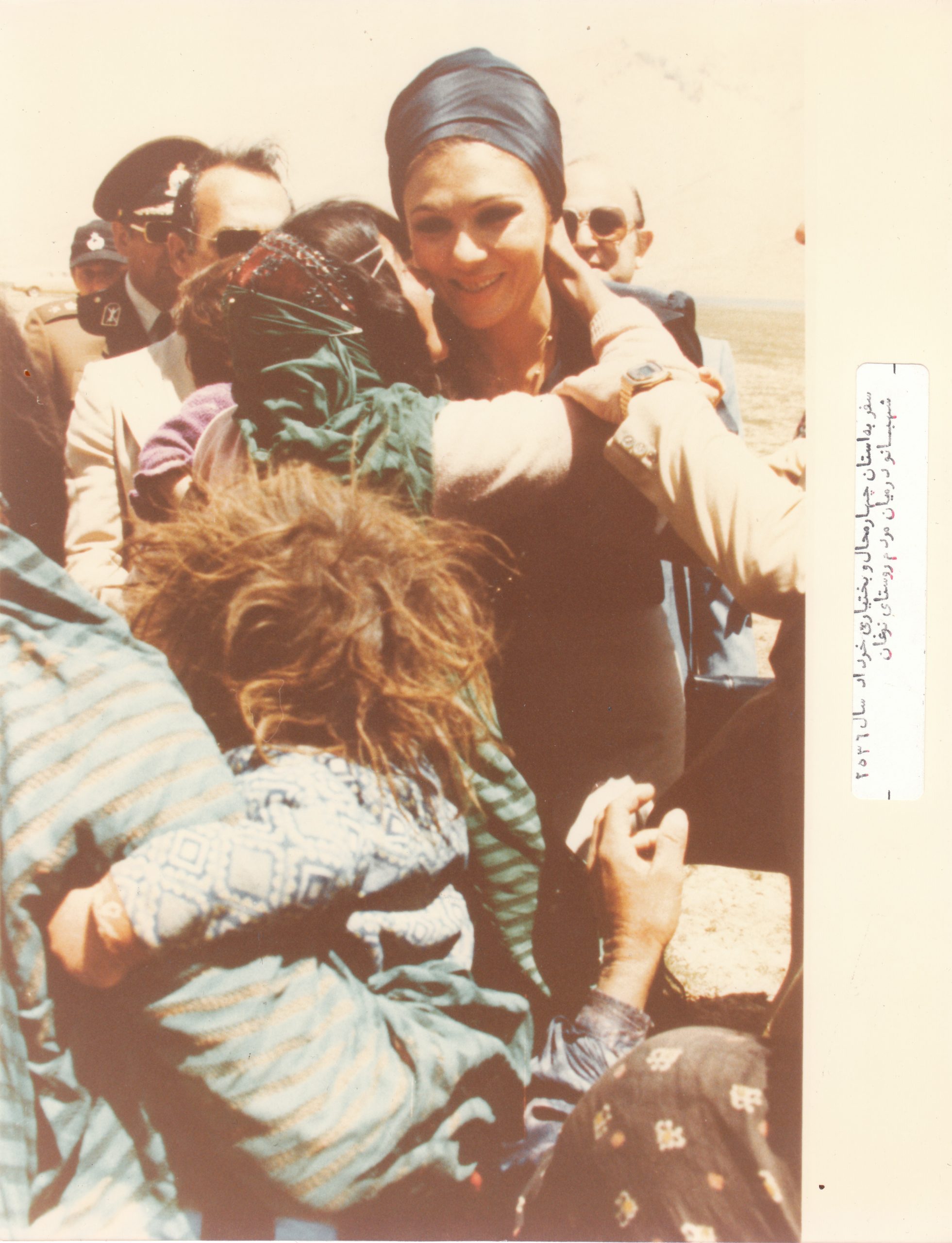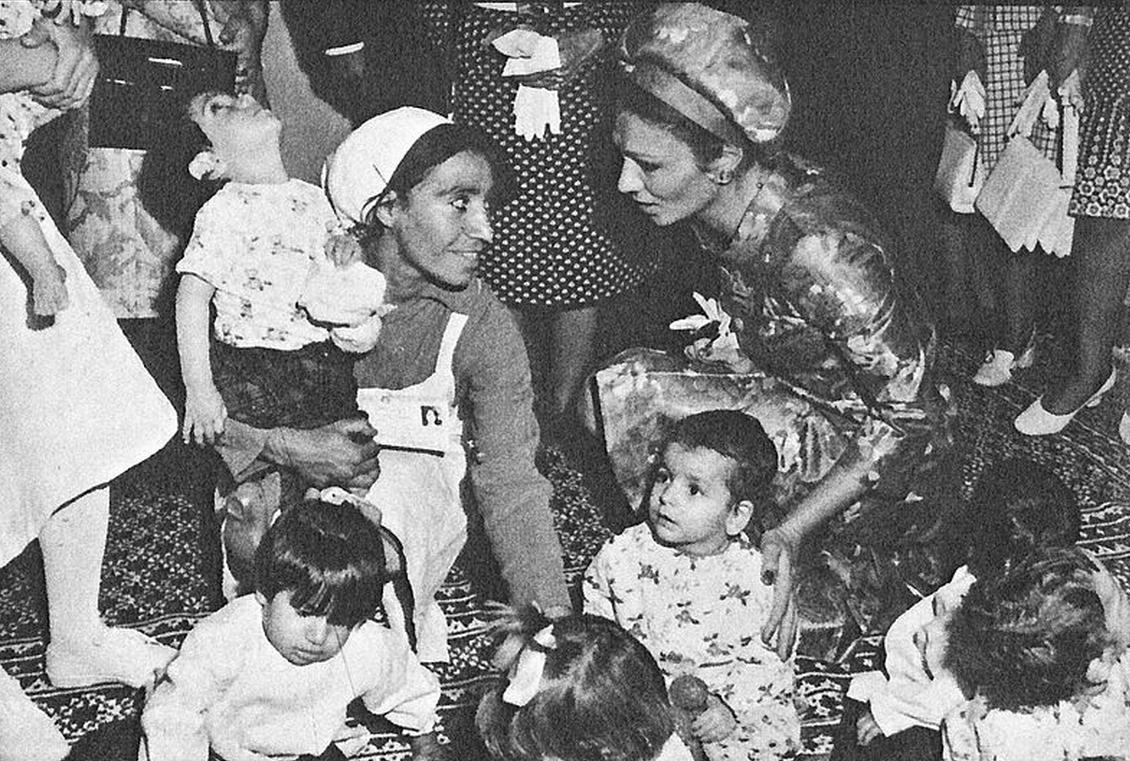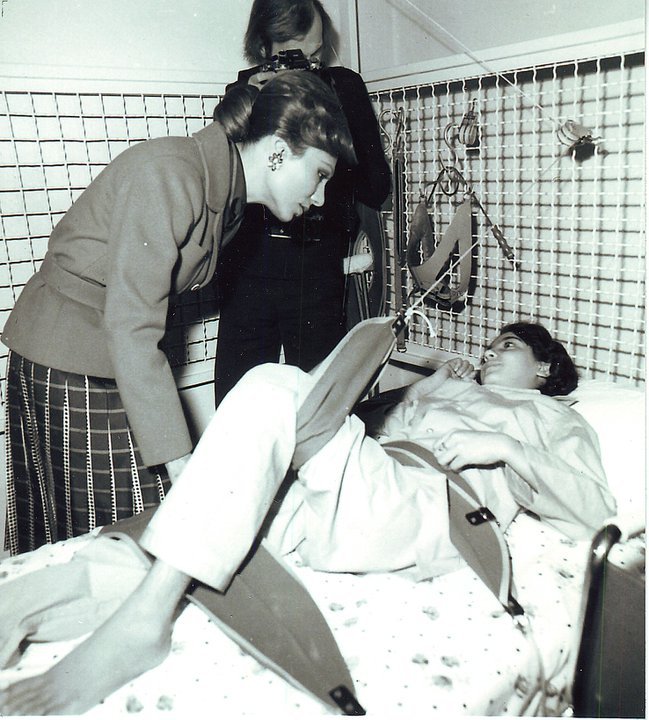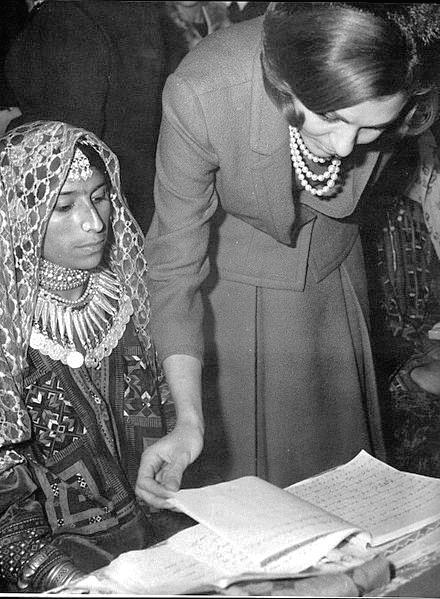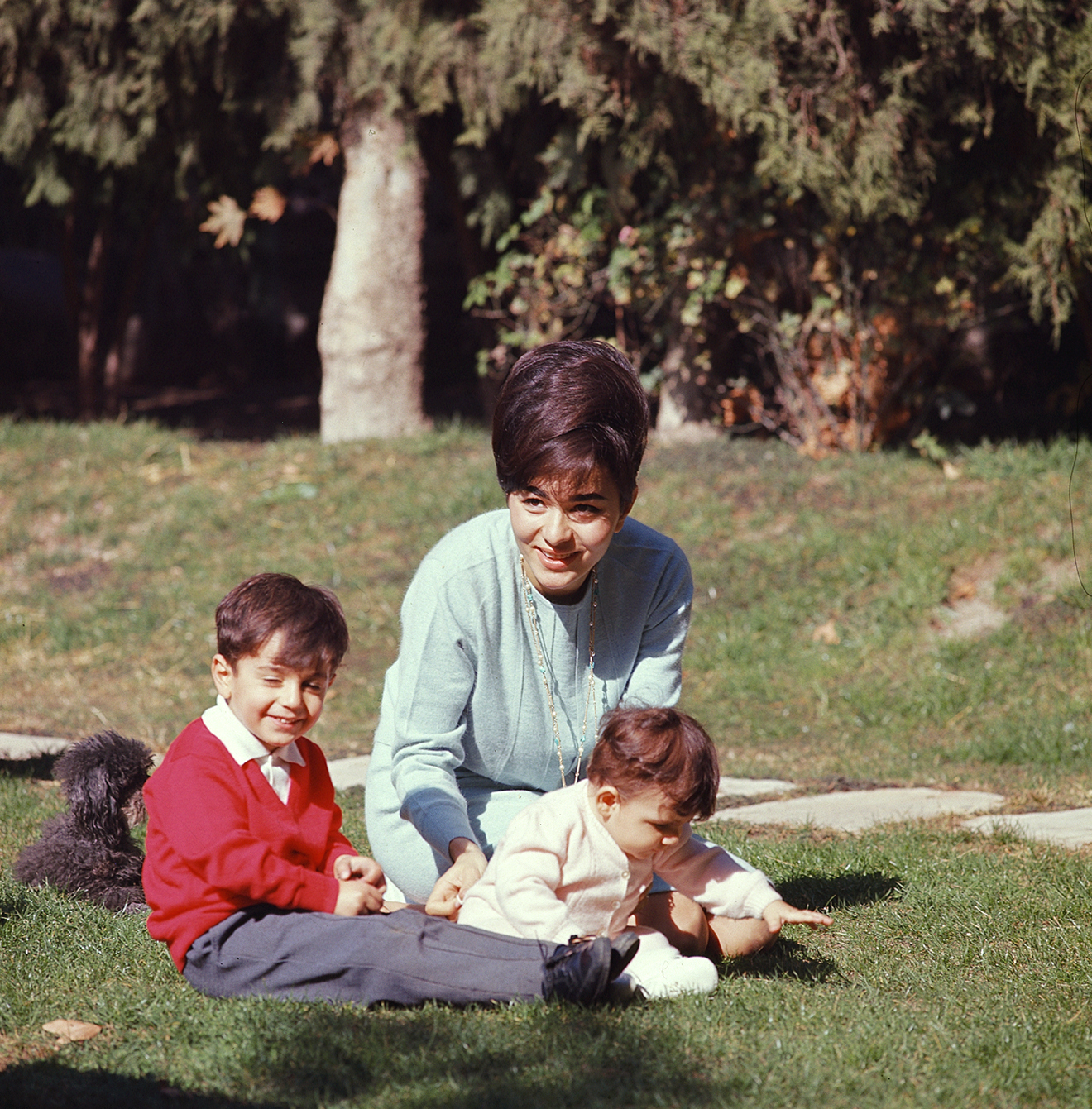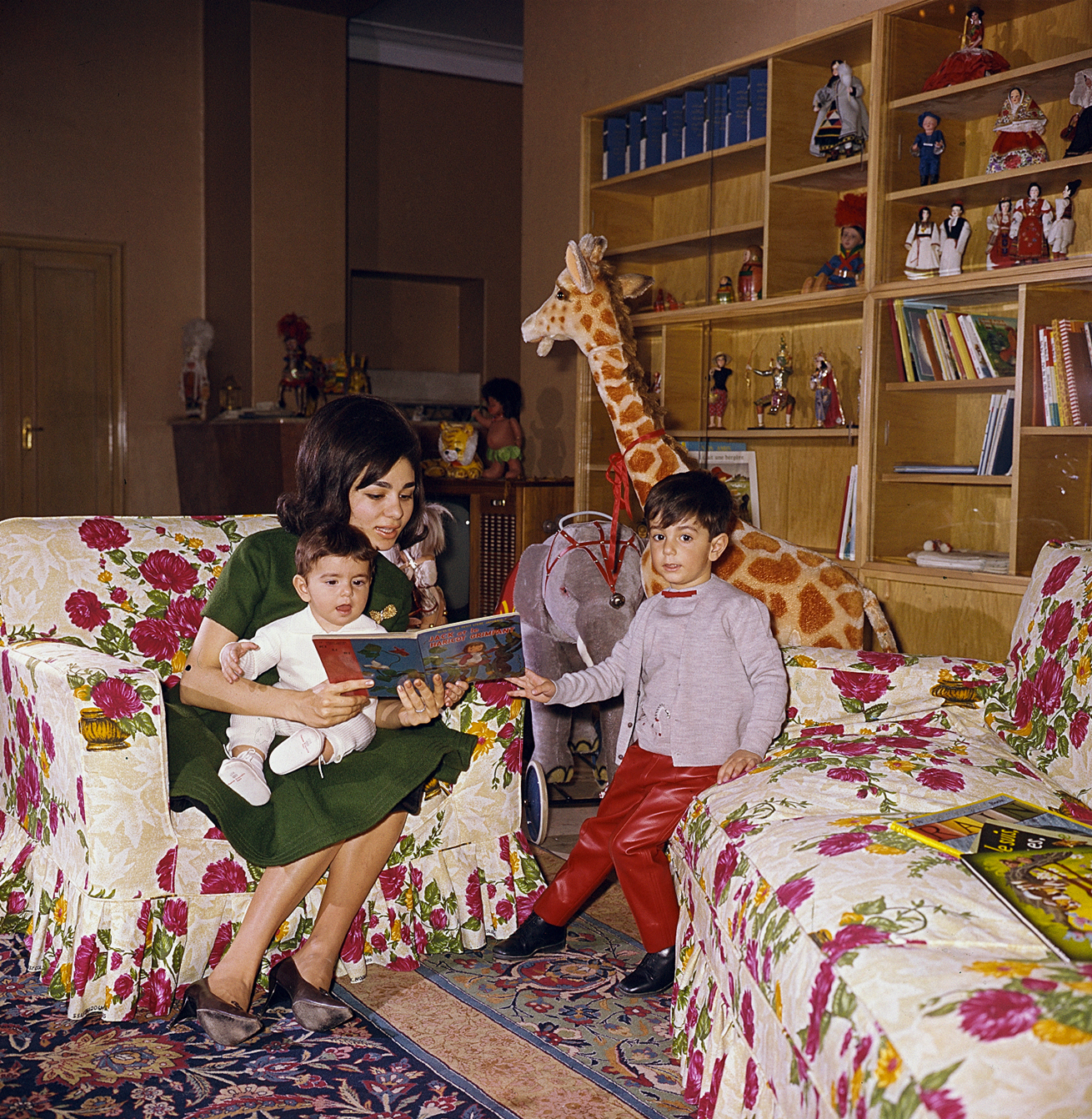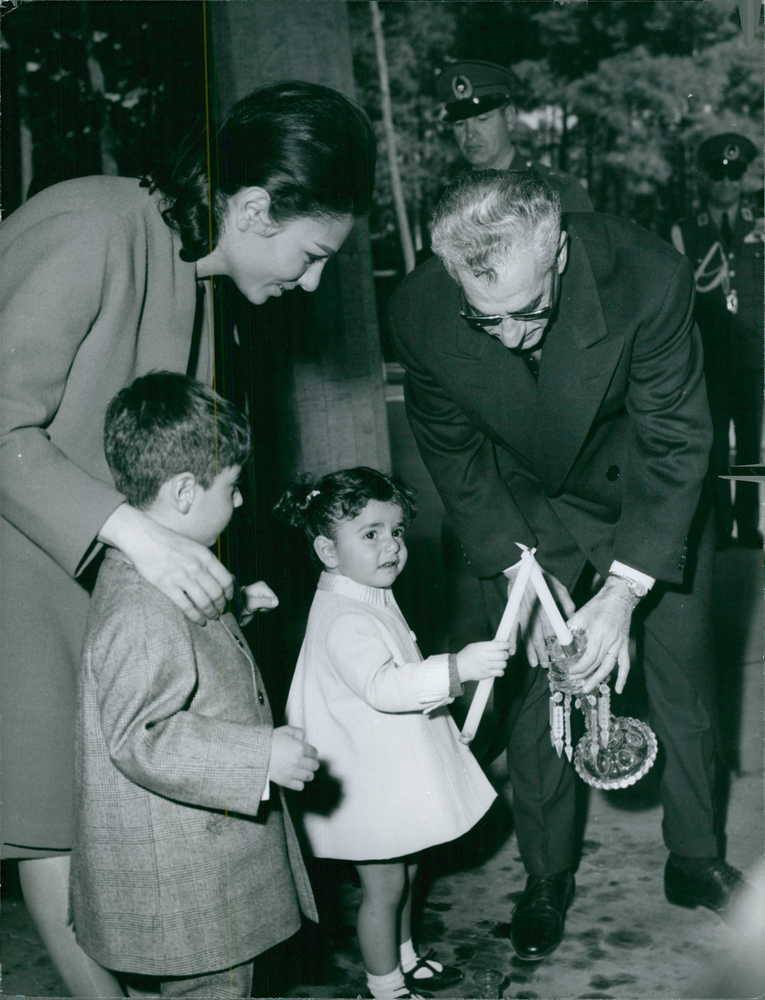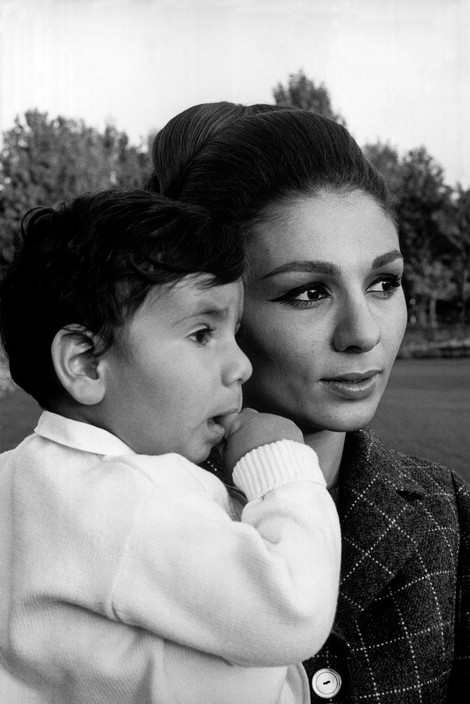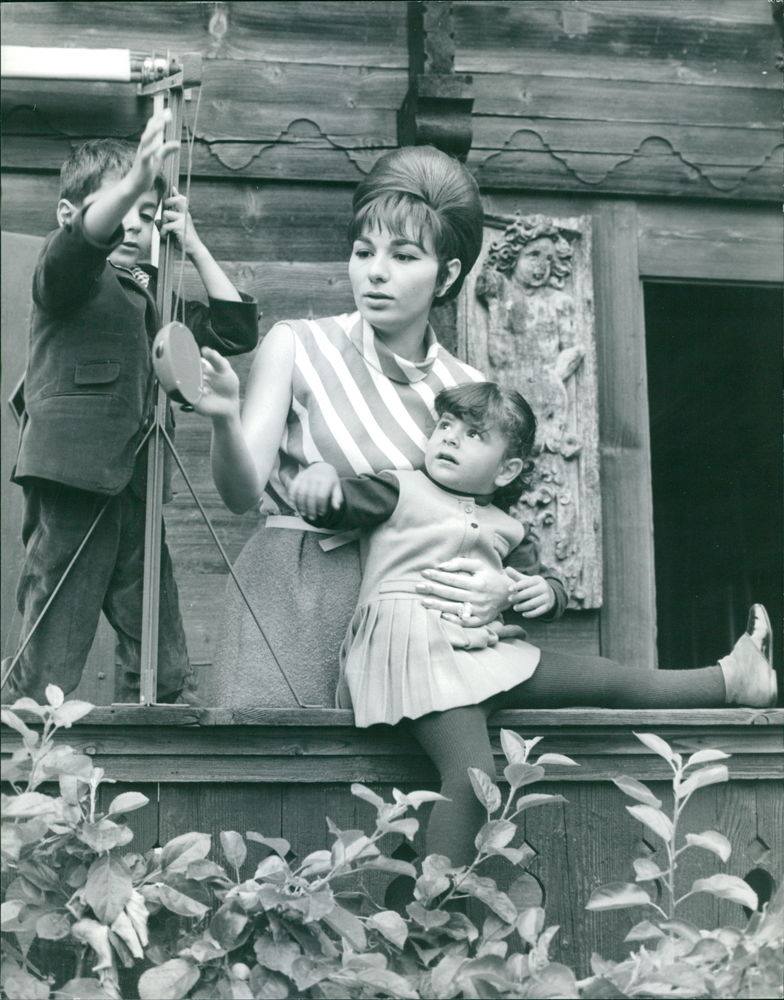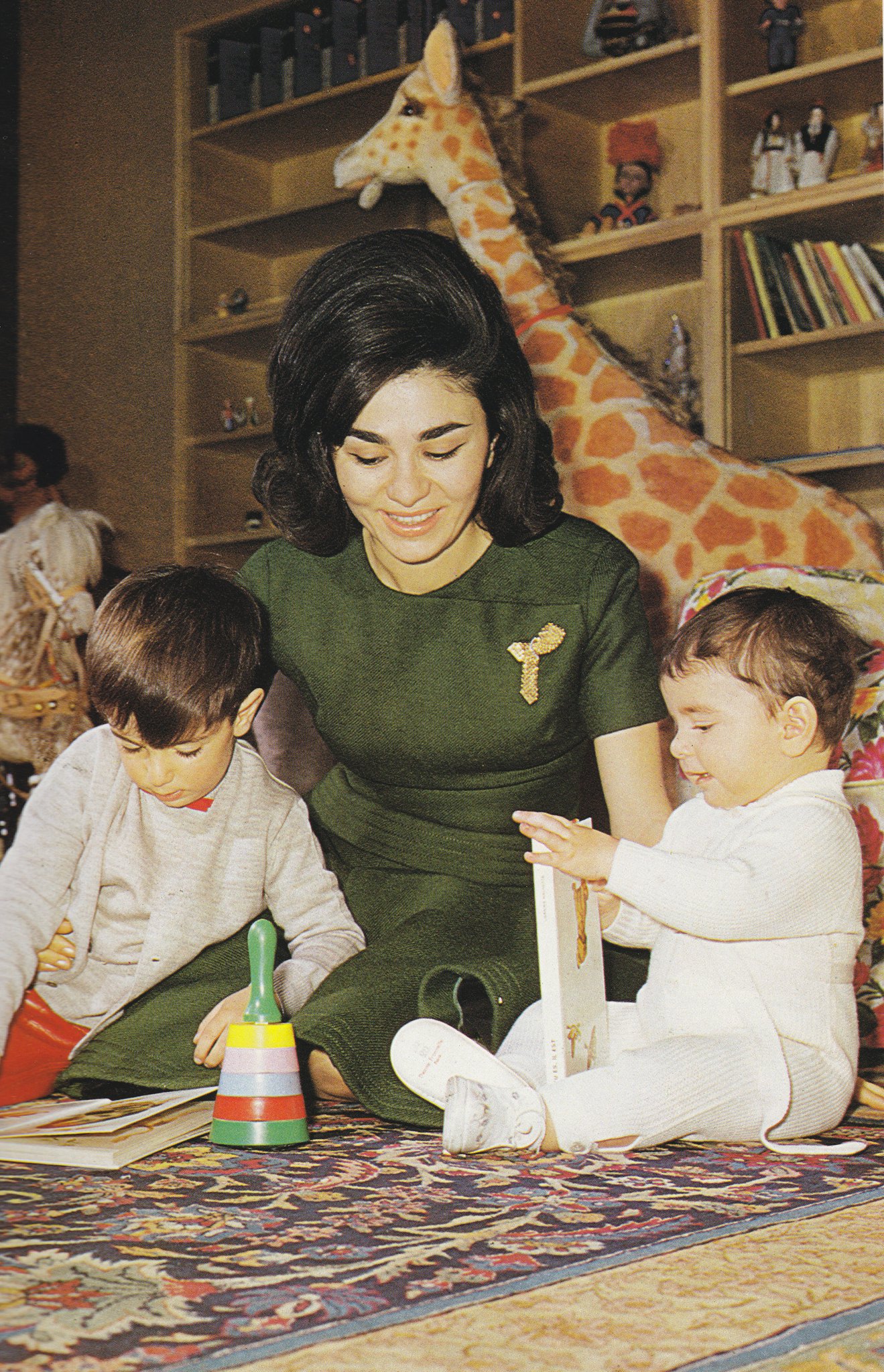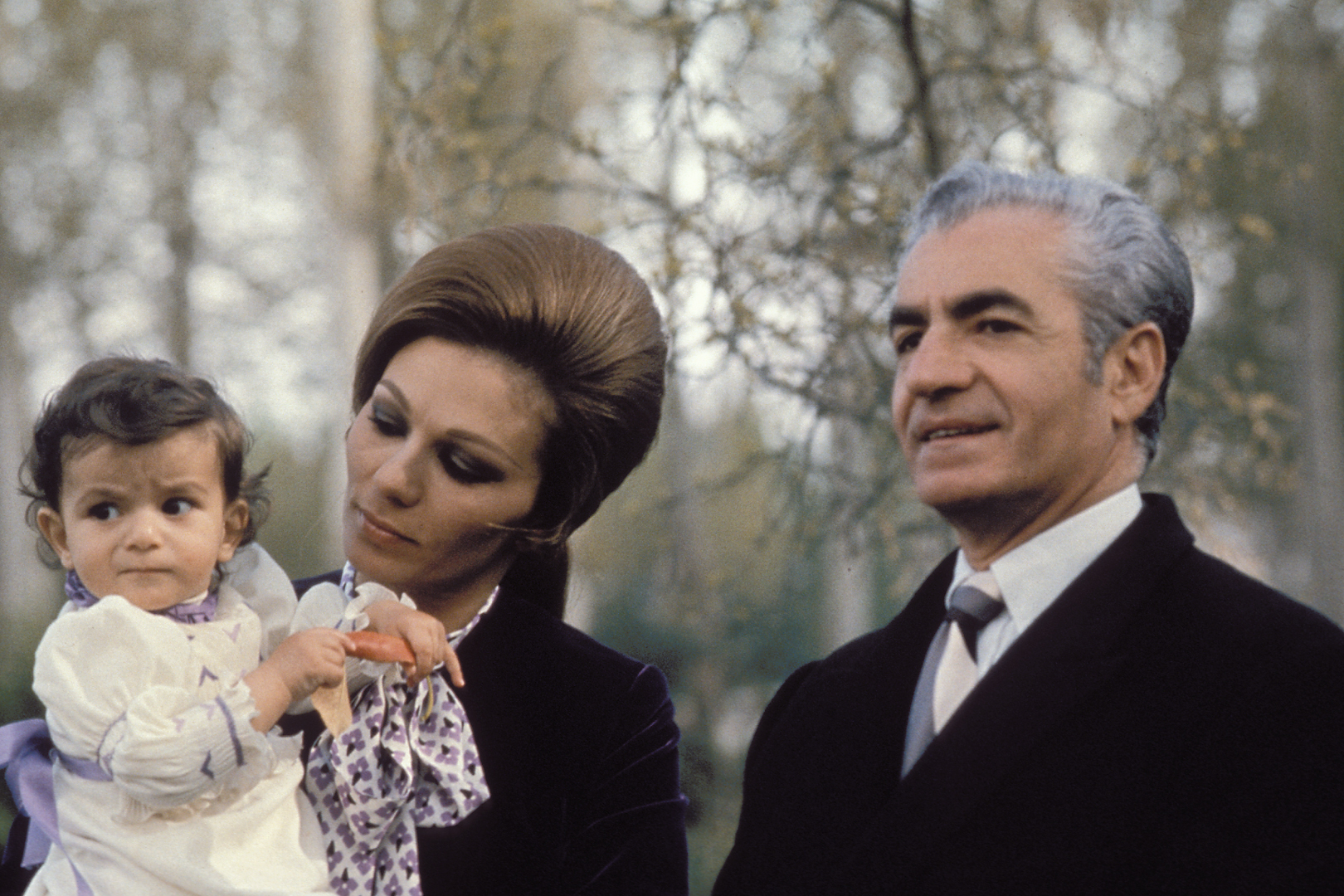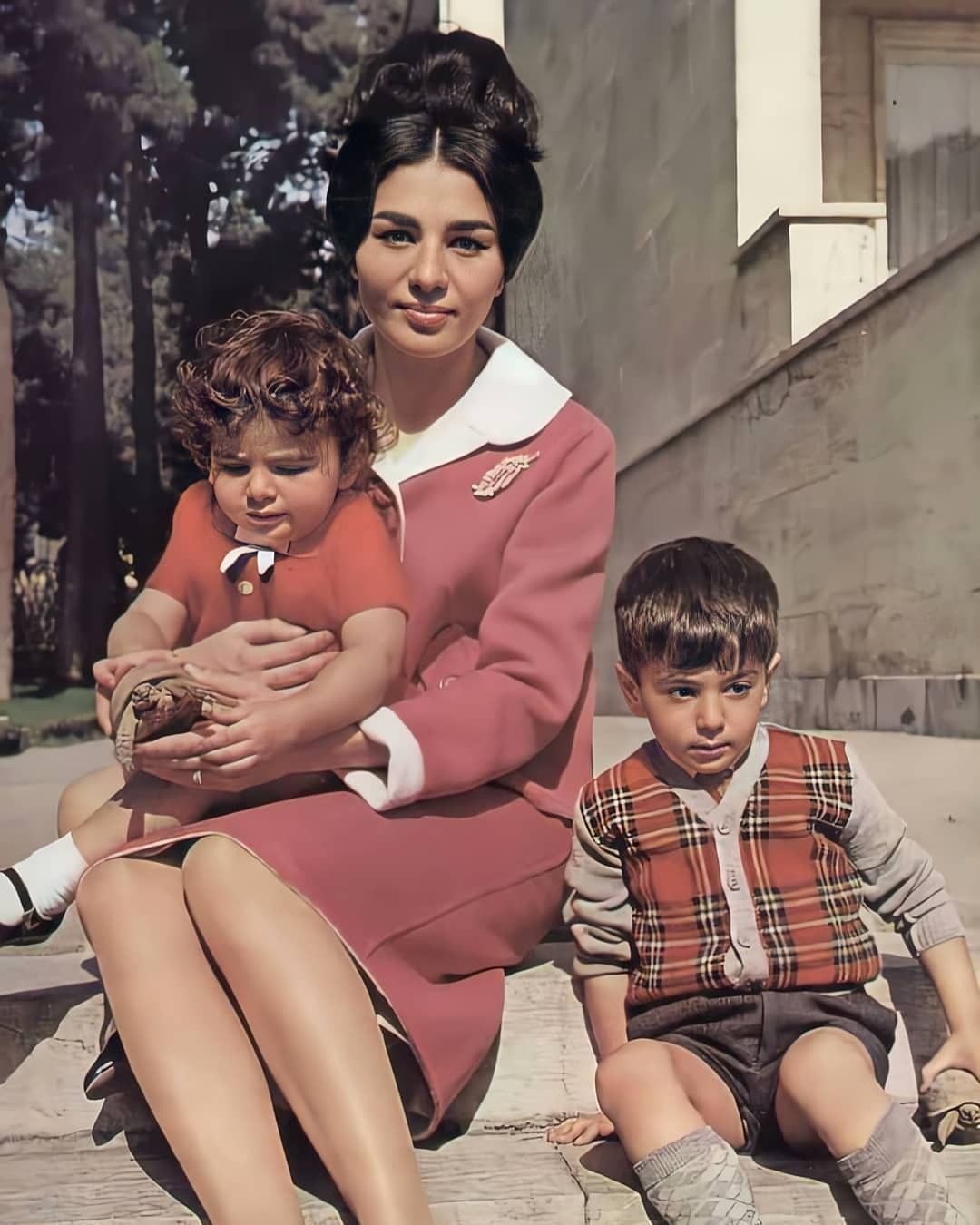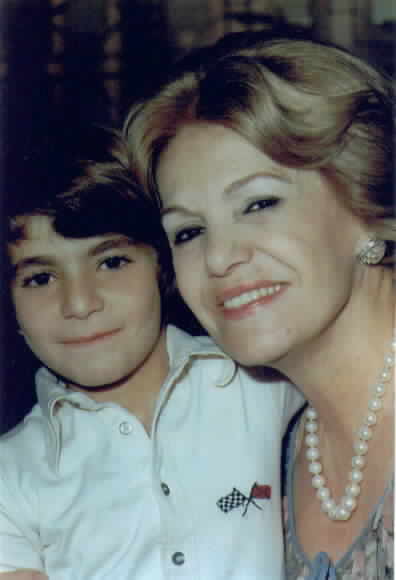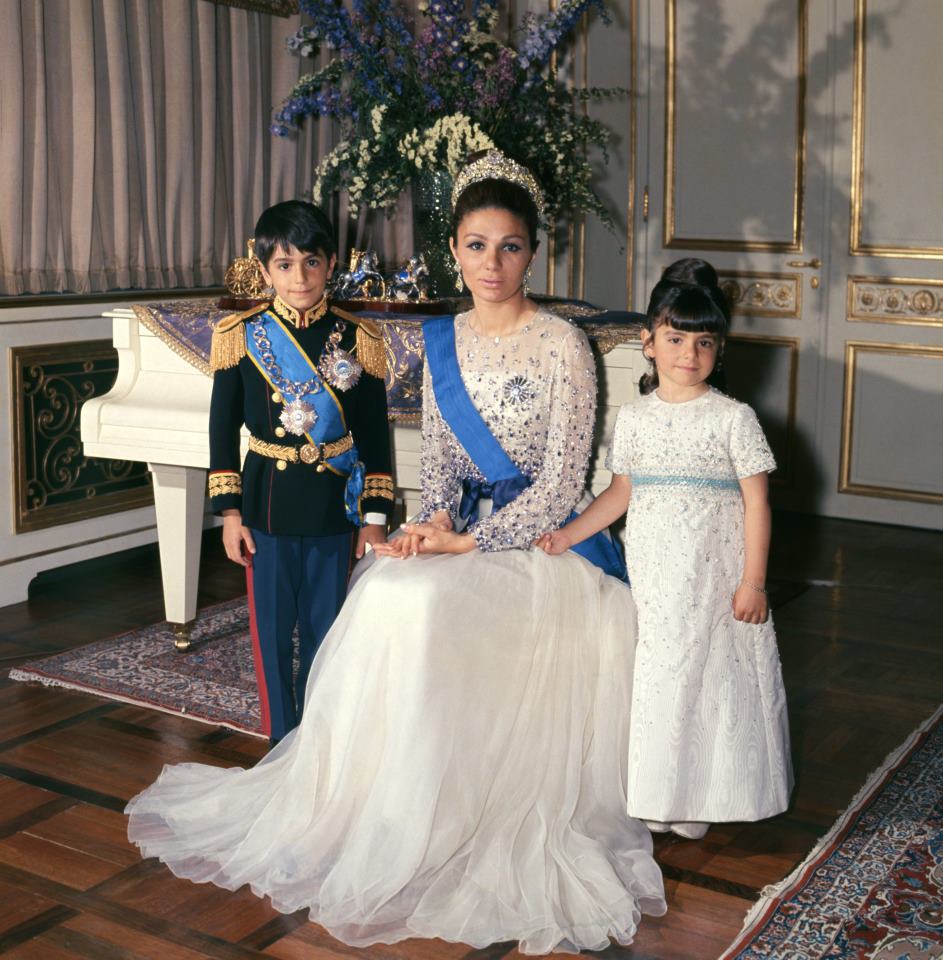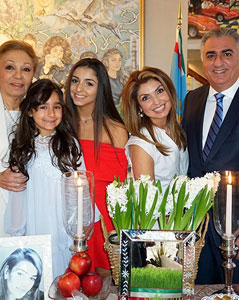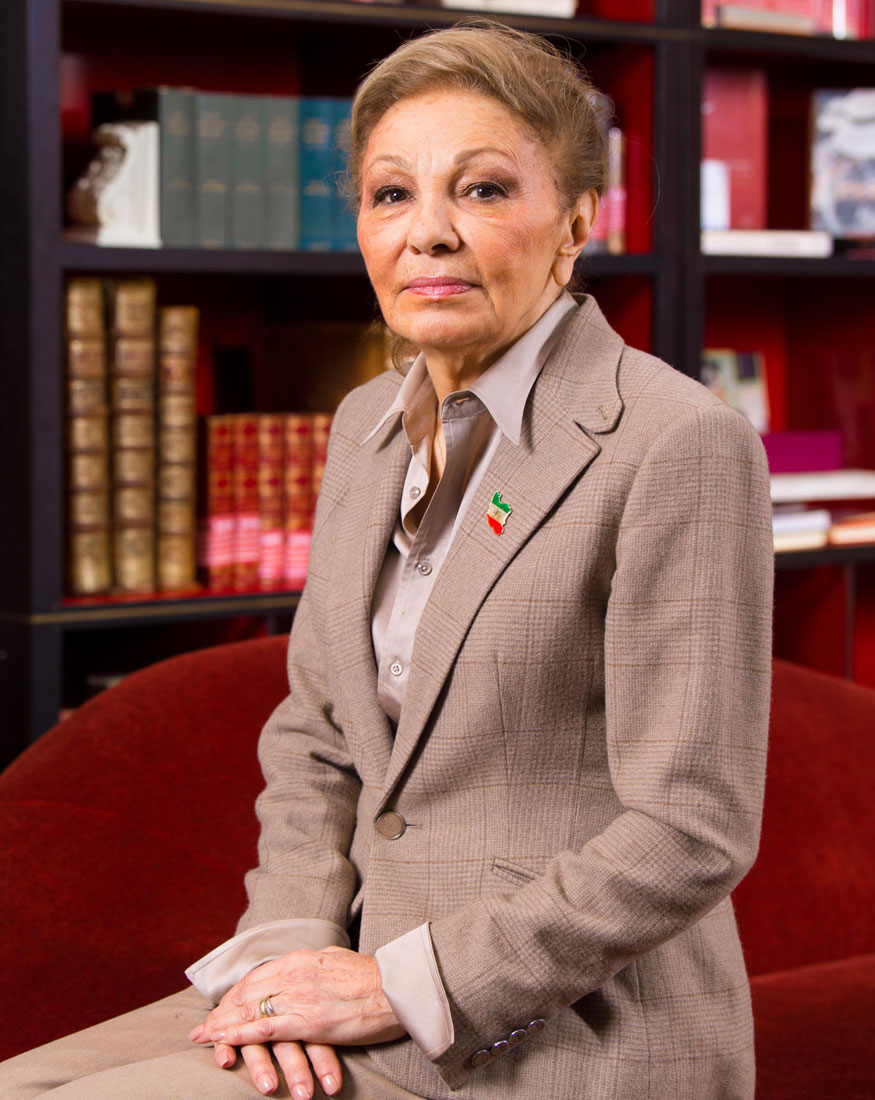
Her Imperial Majesty Queen Farah Pahlavi, Shahbanou of Iran was born in Tehran on October 14, 1938, the only child of Mr. Sohrab Diba and Farideh Diba Ghotbi.
Following the death of her father in 1947, Farah Pahlavi was educated at the Italian School and later the Jeanne D’Arc School. She obtained her baccalaureate from the Lycee Razi, a secular Persian and French High School in Tehran.
Farah Diba was studying architecture in Paris in 1959 when she was introduced to Mohammad Reza Shah Pahlavi of Iran at an embassy reception. The couple’s engagement was announced on December 1 and they were married three weeks later. Empress Farah gave birth to Crown Prince Reza in 1960, Princess Farahnaz in 1963, Prince Alireza in 1966, and Princess Leila in 1970.
In the 1960s and ‘70s Empress Farah traveled widely within Iran to support her husband’s social and economic reforms to advance the rights of women and children, the disabled and the handicapped, culture and the arts, science, and medicine, and architecture and the environment. Under the patronage of the Farah Pahlavi Foundation, she financially supported a network of museums, art centers, and dozens of charities. She worked tirelessly to champion Iranian culture and the arts and to encourage community-based village enterprises to revitalize traditional handicrafts. She established a series of landmark events to celebrate contemporary and modern Iranian art and culture including the Shiraz Festival of Arts, the Isfahan Festival of Popular Traditions, the Kerman Traditional Music Festival, the Tehran International Film Festival, and the Children’s Film Festival. Empress Farah spearheaded an effort to promote children’s literacy by establishing children’s libraries in the cities and the countryside. She put her training as an architect to good use when she lobbied to save historic buildings from demolition, and by preserving open land from development so that parks and green spaces became a feature of crowded urban centers. She headed up the South Tehran Redevelopment Corporation which aimed to alleviate poverty and improve living conditions in Tehran southern suburbs.
Empress Farah broke many barriers during her two decades on the throne. She was Iran’s first crowned female sovereign and the first woman crowned anywhere in the Muslim world. She was the first woman in a Muslim country to publicly donate blood. As her husband’s ambassador abroad, Empress Farah represented Iran in countries as varied as China, the United States, and Senegal, delivering major policy addresses and attending international conferences. Empress Farah is most proud of her ground-breaking work on behalf of Iran’s lepers who had previously been subjected to discrimination. The Empress visited leper colonies in the late sixties and persuaded her husband to donate a parcel of land so that the lepers could be housed in a model community, receive an education and earn a working wage. She invited medical specialists from around the world to come to Iran to work with the lepers and advocated community-based methods to help them. Empress Farah’s efforts to change popular perceptions about leprosy were recognized internationally as a force for progressive change.
On January 16, 1979, Empress Farah and the Shah left Iran for exile. Today she divides her time between France and the United States where her children and grandchildren live. She continues to work and speak out on behalf of her signature causes and is an enthusiastic supporter of Iranian artists and writers. She closely follows events back in Iran and is in daily contact with compatriots who write and express their support and friendship. Empress Farah has received numerous honorary doctorates and diplomas from many international institutions. She is also the recipient of numerous awards for her humanitarian efforts.
*Style & Titles: The Consort of the Sovereign: Shahbanou, i.e. Empress, with the style of Her Imperial Majesty.
*Shahbanou: The title of Shahbanou was devised especially for Empress Farah at the Coronation of 1967.
Tenure
26 October 1967 – 11 February 1979
Coronation
26 October 1967 (aged 29)
Predecessor
Herself (as Queen consort of Iran)
Head of House of Pahlavi
Predecessor
Mohammad-Reza Pahlavi
Successor
Crown Prince Reza Pahlavi
Spouse
Mohammed Reza Pahlavi
Issue
Crown Prince Reza Pahlavi (born 31 October 1960)
Princess Farahnaz Pahlavi (born 12 March 1963)
Prince Shahpour Ali-Reza Pahlavi (28 April 1966 – 4 January 2011)
Princess Leila Pahlavi (27 March 1970 – 10 June 2001)
Father, Sohrab Diba
Mother, Farideh Diba Ghotbi
Born, October 14, 1938
Iran, (Persia) Tehran
Queen Farah Pahlavi’s Major Achievements and Services
In her 20-year tenure as Empress of Iran, Her Majesty Farah Pahlavi was patron to 12 artistic institutions and presided over 26 educational, health, sports, and cultural organizations, including non-governmental entities. Queen Farah Pahlavi’s other important services and achievements could be summarized as follows:
Museums And Cultural Centers Created Upon The Initiative Of H.M. Farah Pahlavi
- Negarestan Museum of Qajar Dynasty Arts 1975
- Carpet Museum of Tehran
- Tehran Museum of Ancient Ceramics and Glassworks
- Reza Abbassi Museum of post and pre-Islamic artworks
- Tehran Museum of Contemporary Arts
- Khorram Abad Museum of Ancient Luristan Bronzes
- Cultural Center of Niavaran
- Cultural Center of Baghe-Ferdows
- Marmar Palace Cultural Center
Other projects were about to be created: The Museum of Persian Handicrafts at an ancient fortress in Shiraz, a museum of modern arts also in Shiraz designed by Alvar Alto and a museum of sciences in Tehran.
Educational And Social Organizations And Artistic And Cultural Associations Under The Patronage Of H.M. Farah Pahlavi
- Institute for Intellectual Development of Children and Young Adults
- National Organization for the Protection of Children
- Reza Pahlavi School for the Blinds
- Organization for the Protection of Mothers and Babies.
- Iranian Society for Assistance to the Lepers.
- Society for Assistance to the Victims of Burns.
- National Society for the Fight against Cancer.
- Medical Congress of Tehran.
- National Organization for Blood Transfusion.
- Farah Pahlavi University.
- Rural Research Institute.
- Academy of Sciences.
- Tous Festival (epic traditional arts).
- Isfahan Festival (popular art).
- Iran Cultural Foundation.
- Shiraz/Persepolis Festival of Arts.
- Tehran Philharmonic Society.
- Imperial Society of Philosophy.
- Shahbanou Farah Cultural Society.
- High Council of Scientific Research.
- High Council of Social Betterment.
- High Council of Health.
- High Council for Architecture and Urban Development.
- High Council of Tourism.
- High Council of Education.
(The High Councils were created in order to improve coordination between the Government and different non-governmental institutions.) The Queen was also Commissary of Iranian scouts and presided over different sporting associations.)

